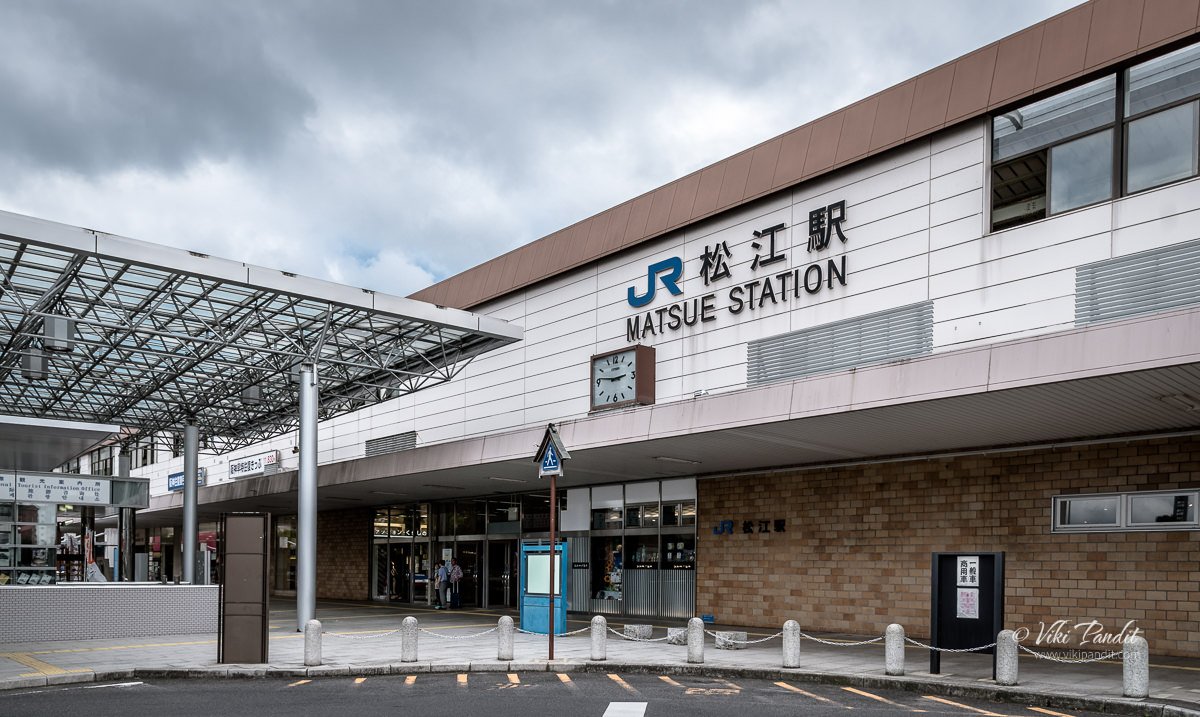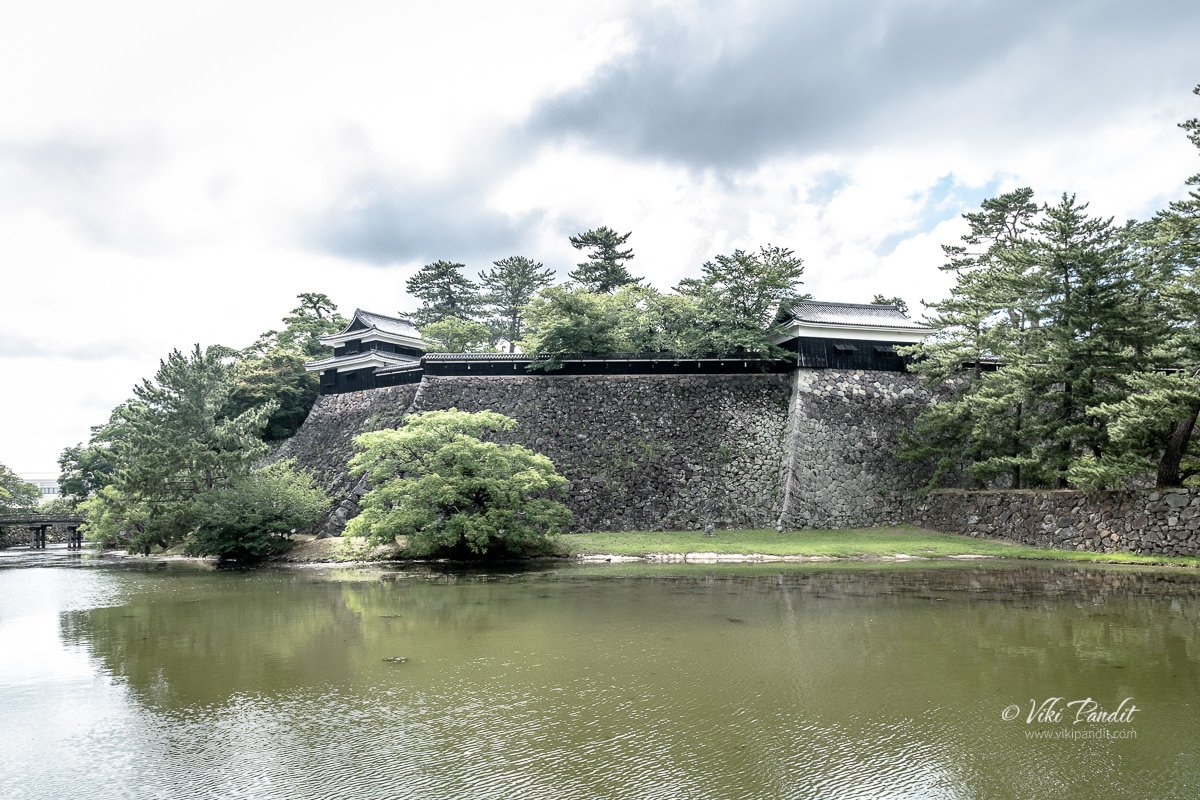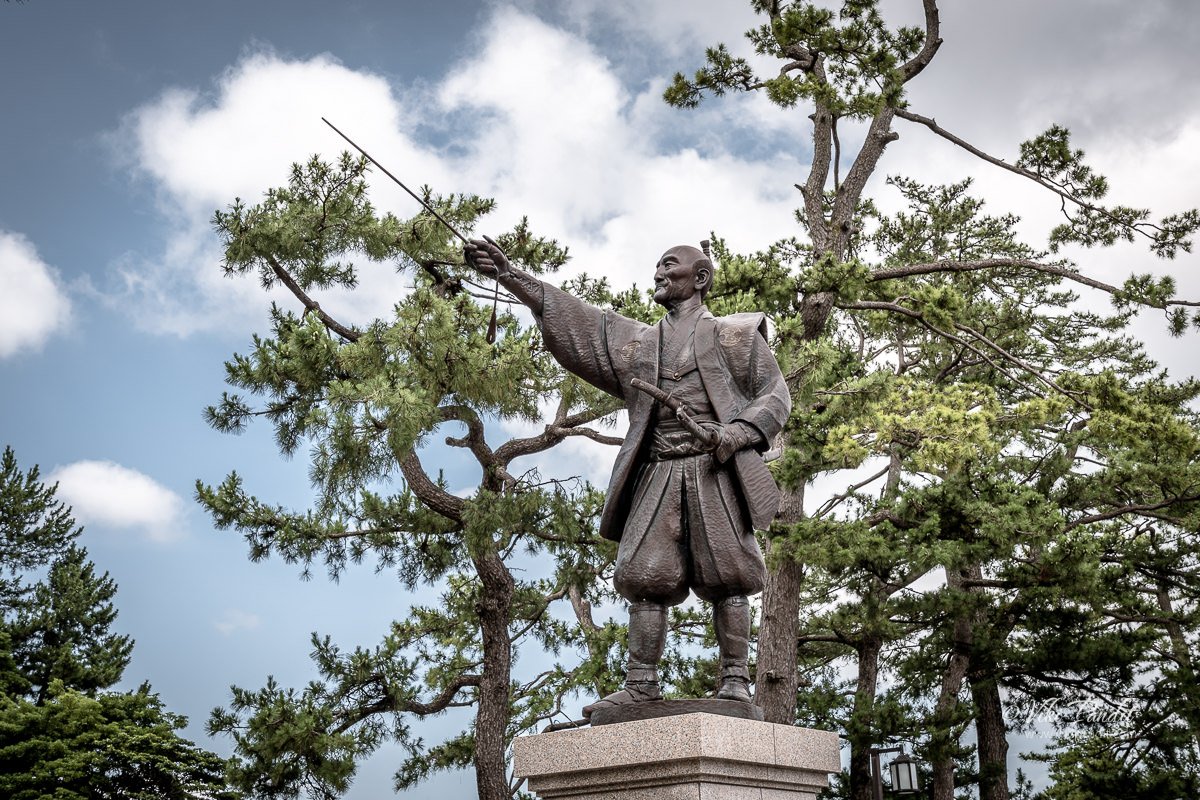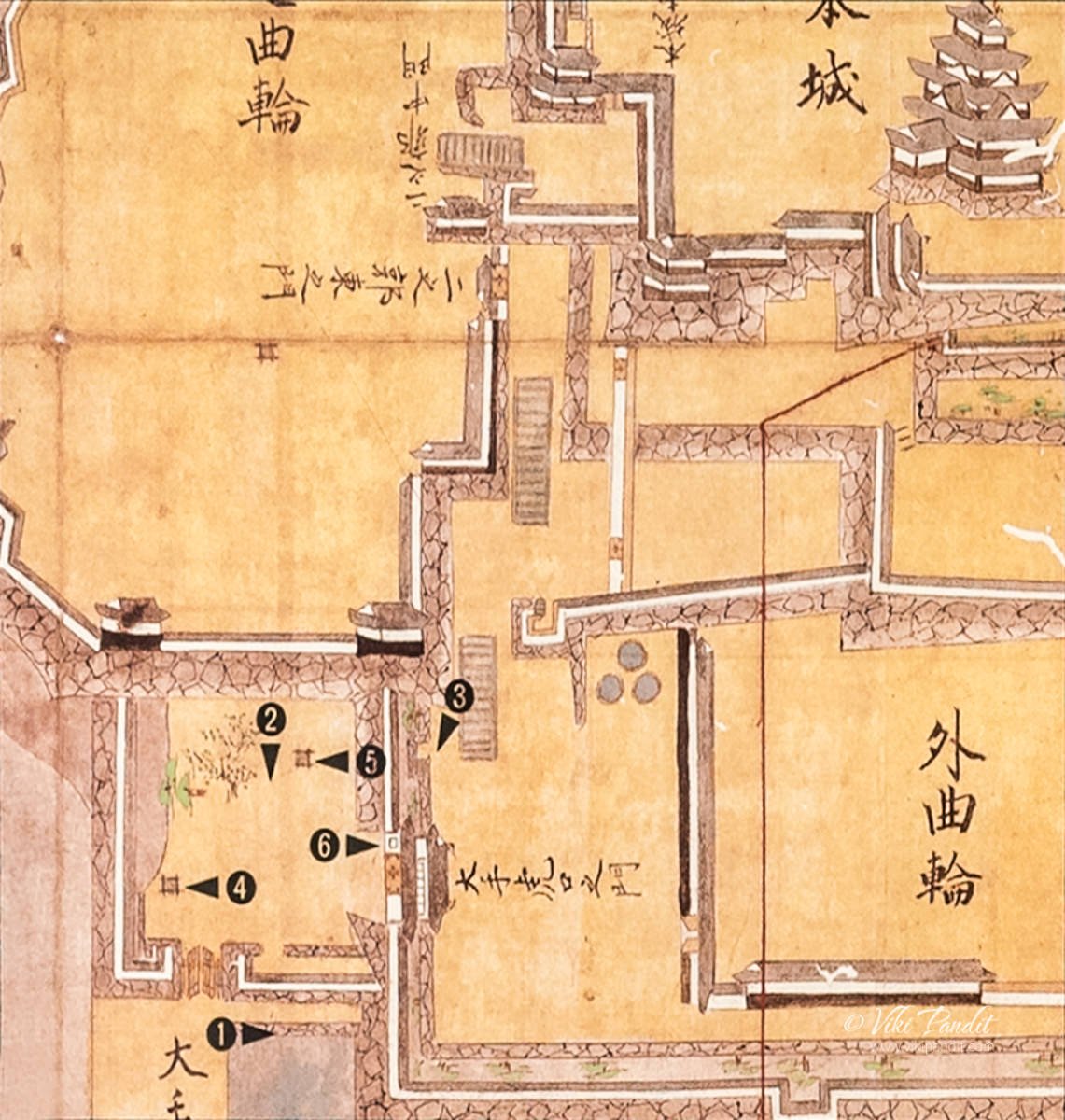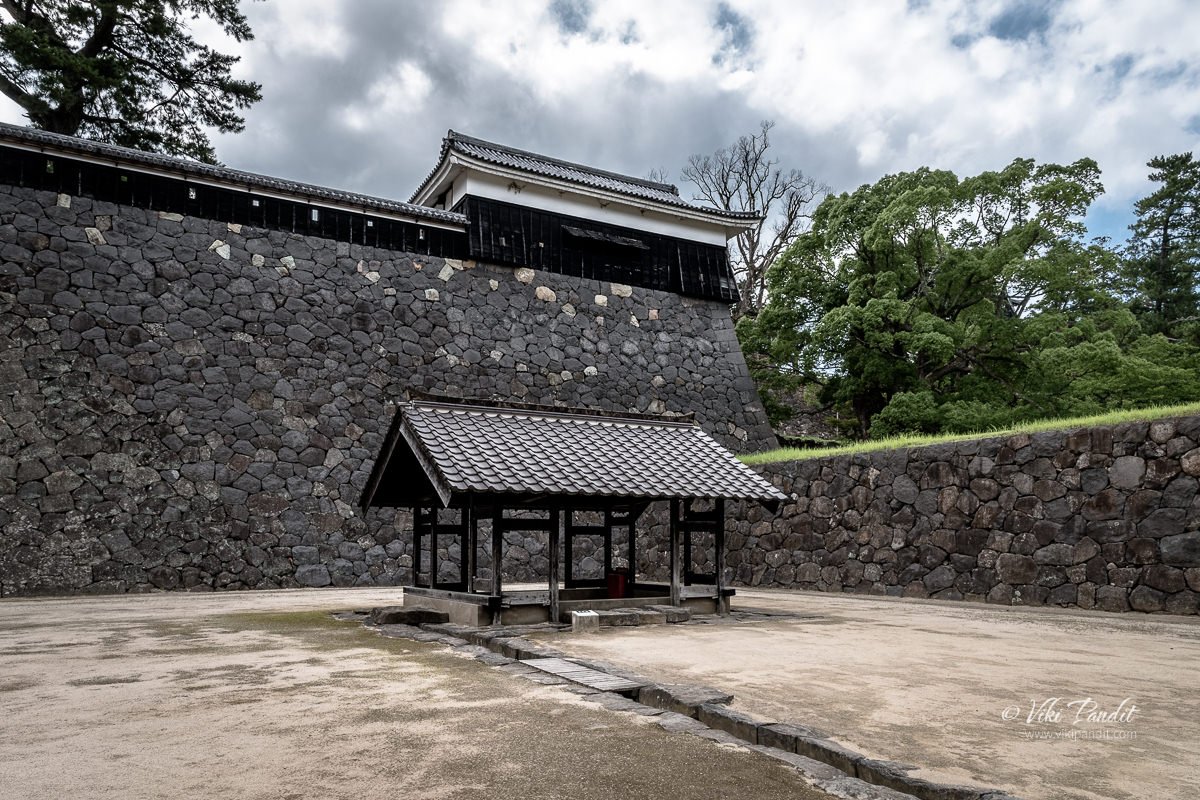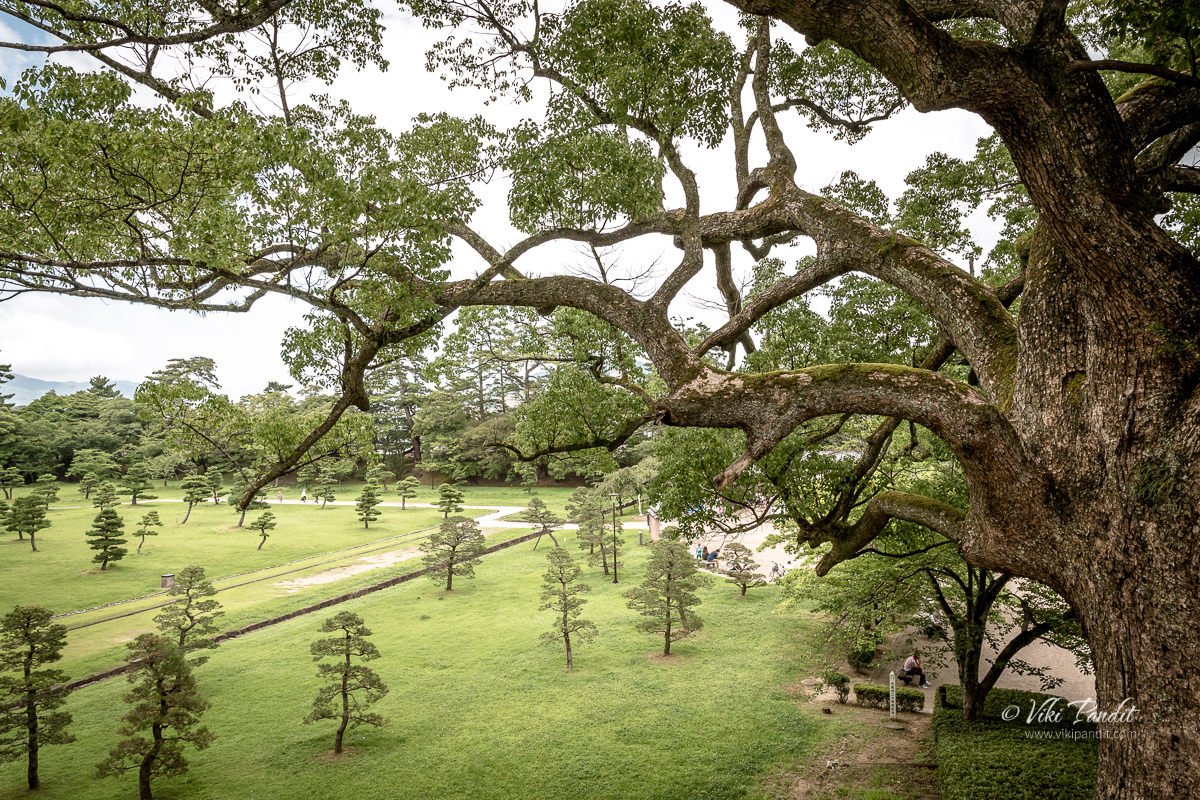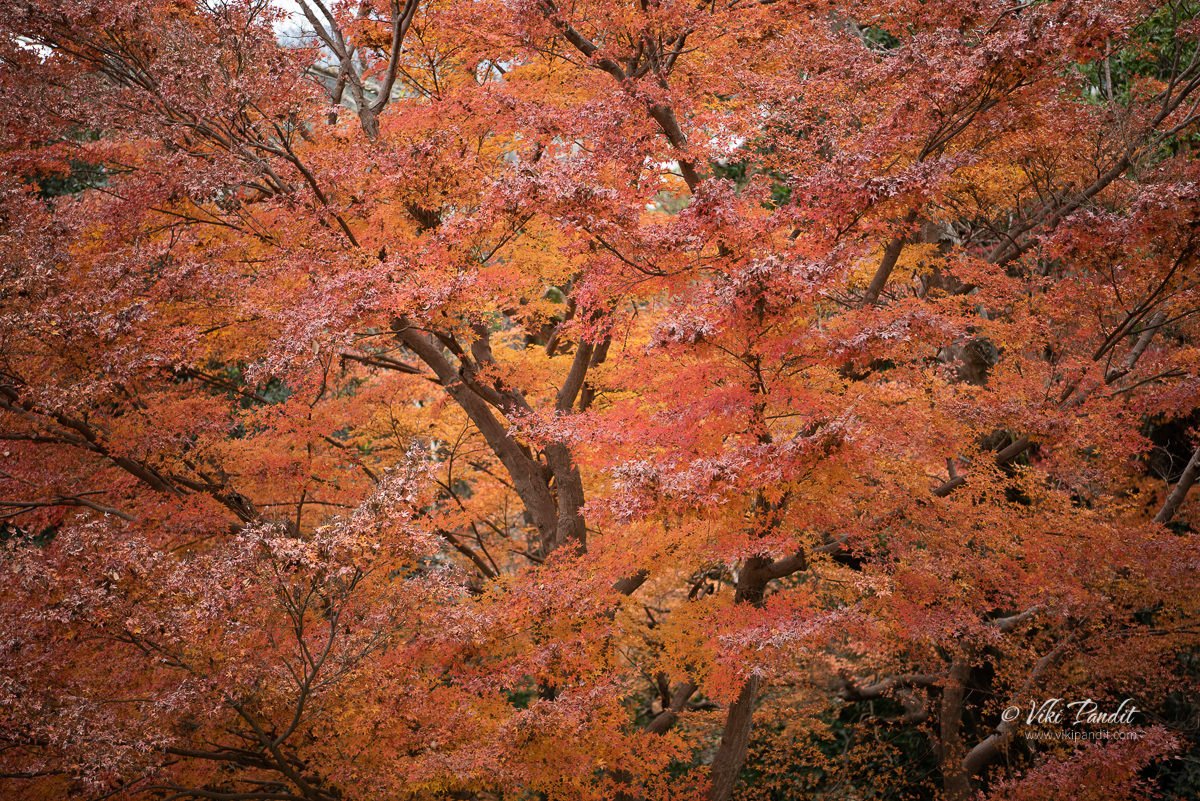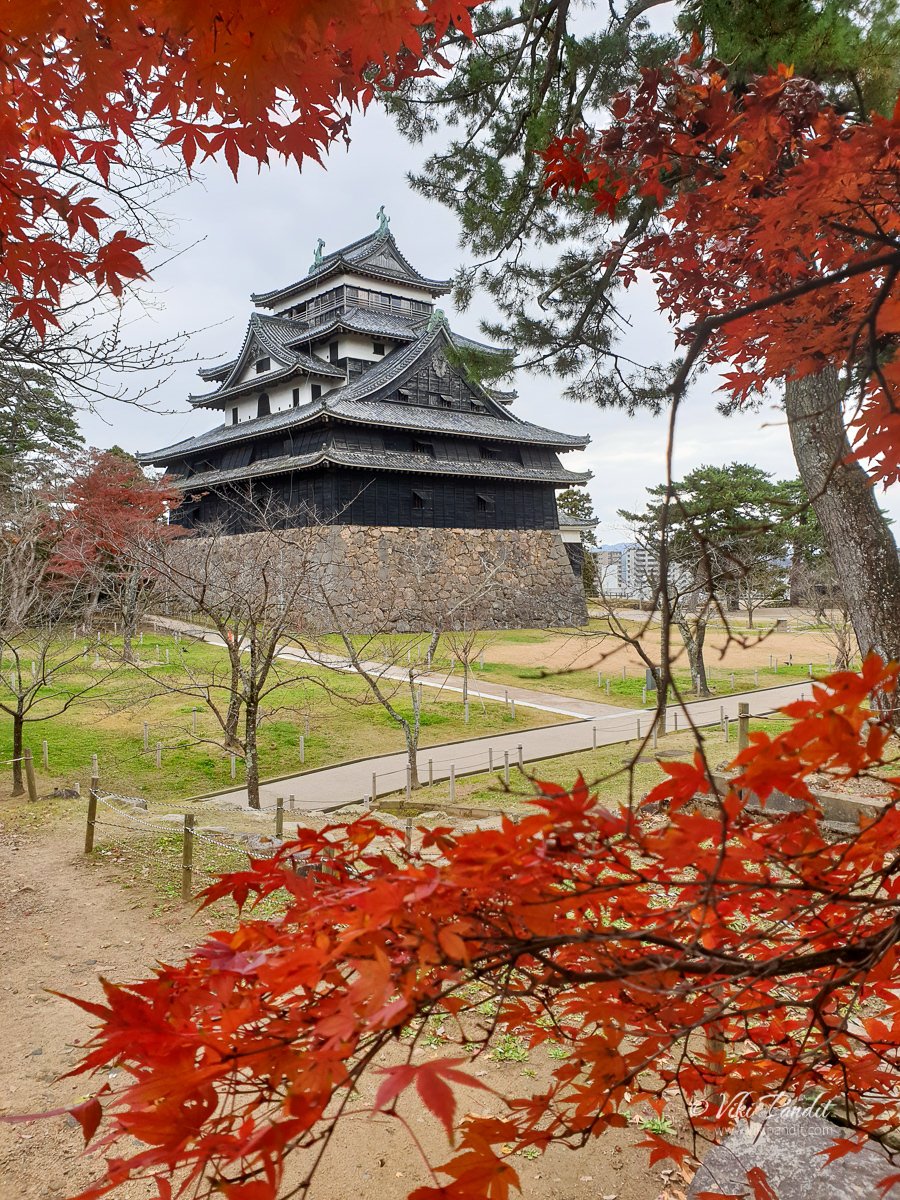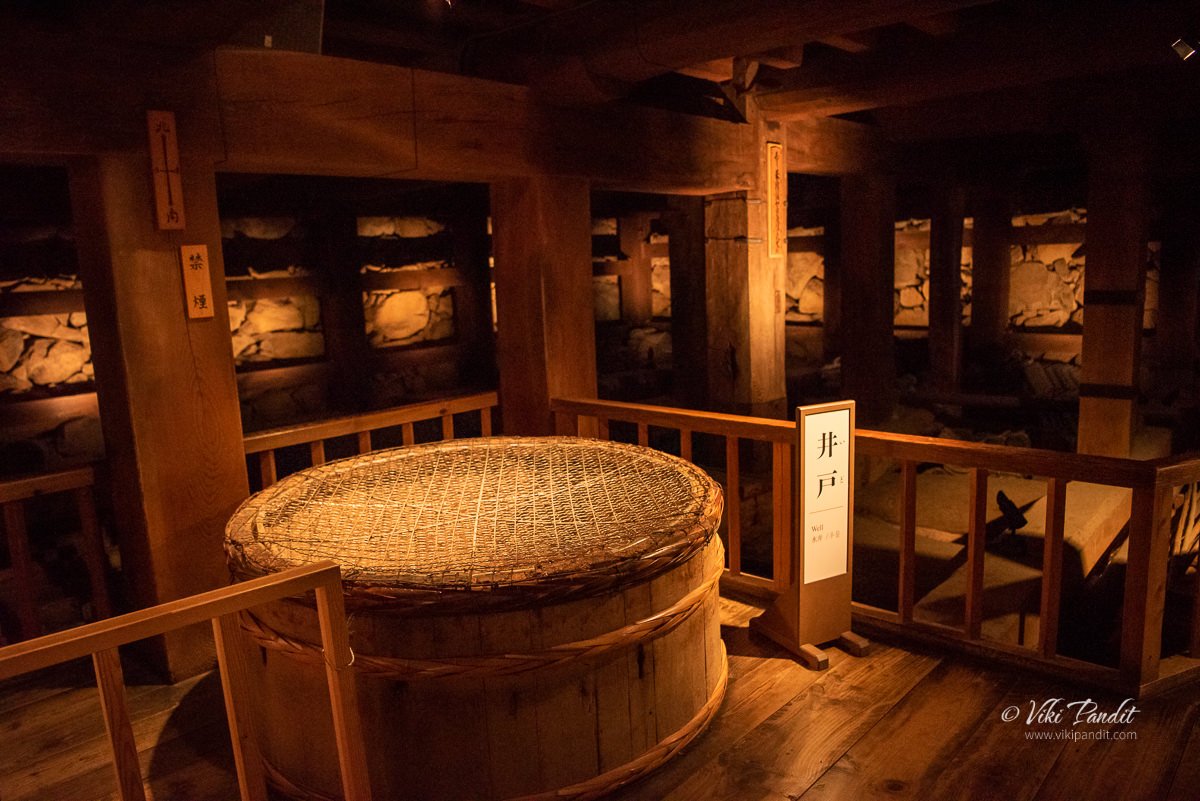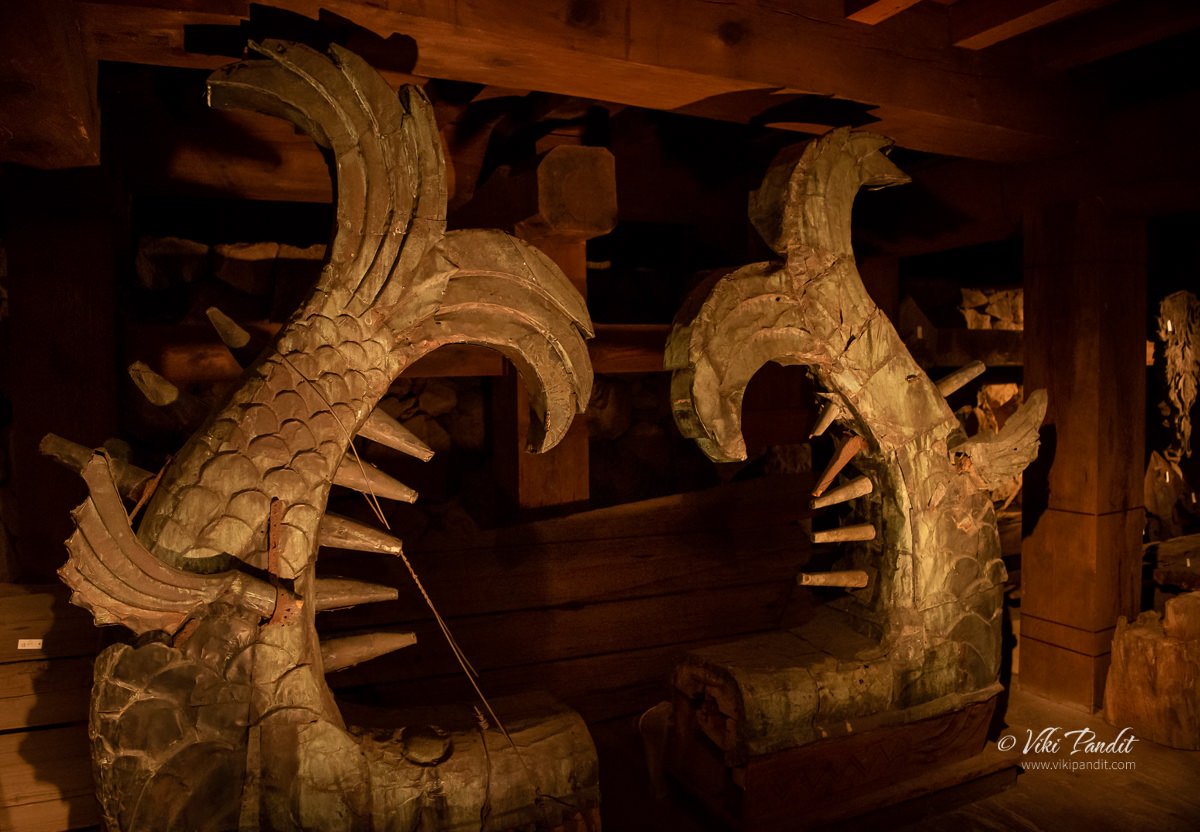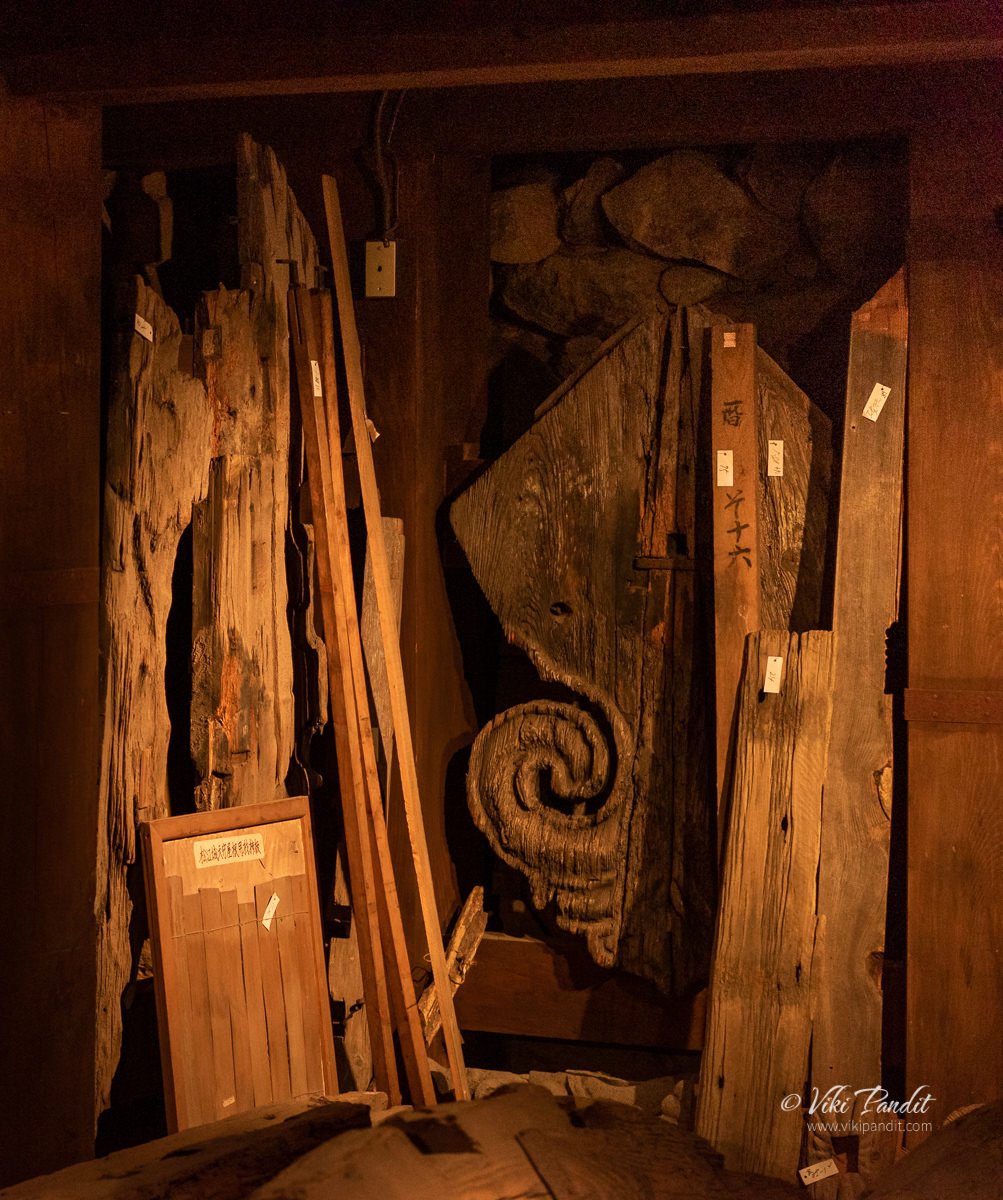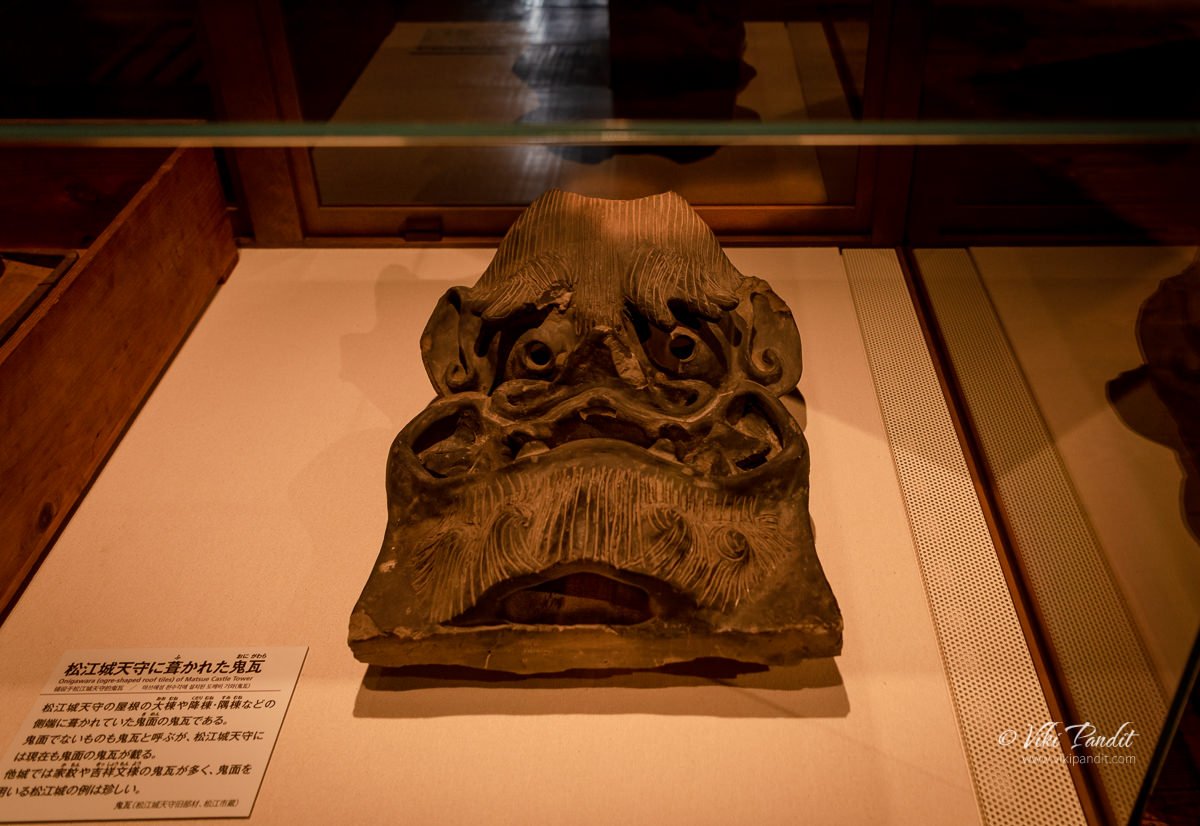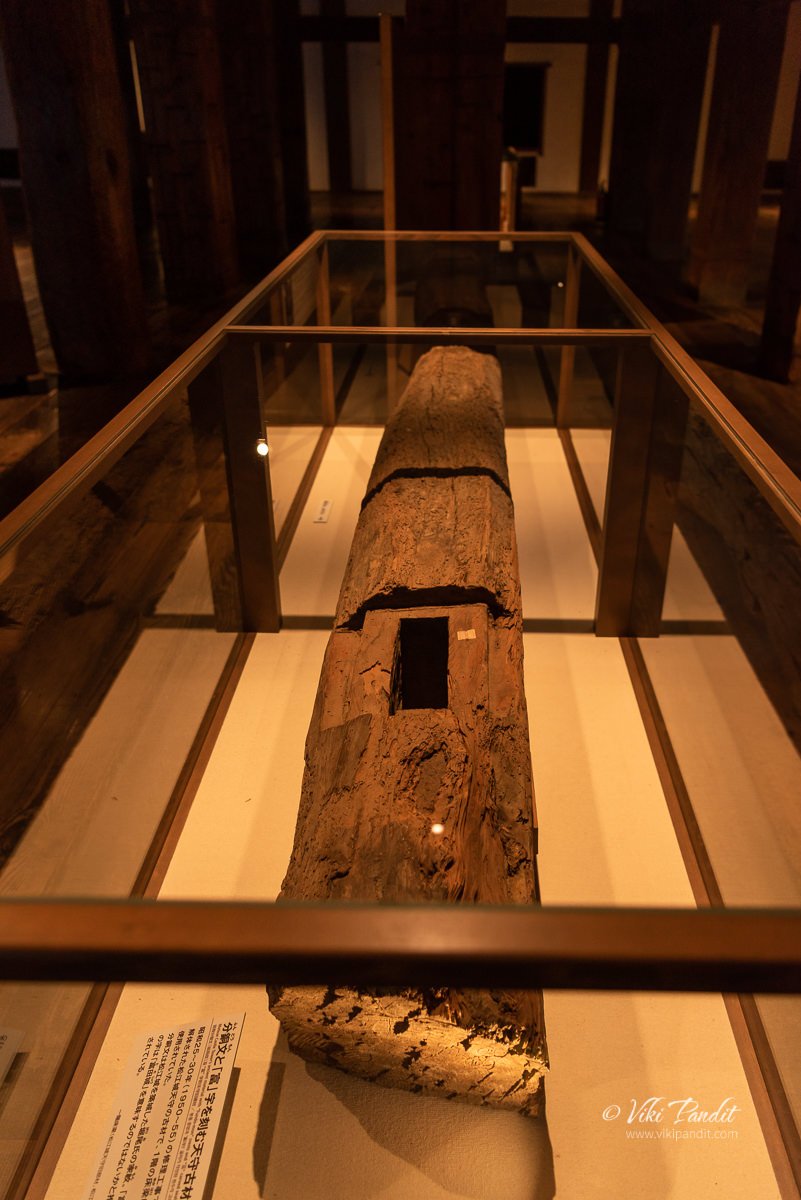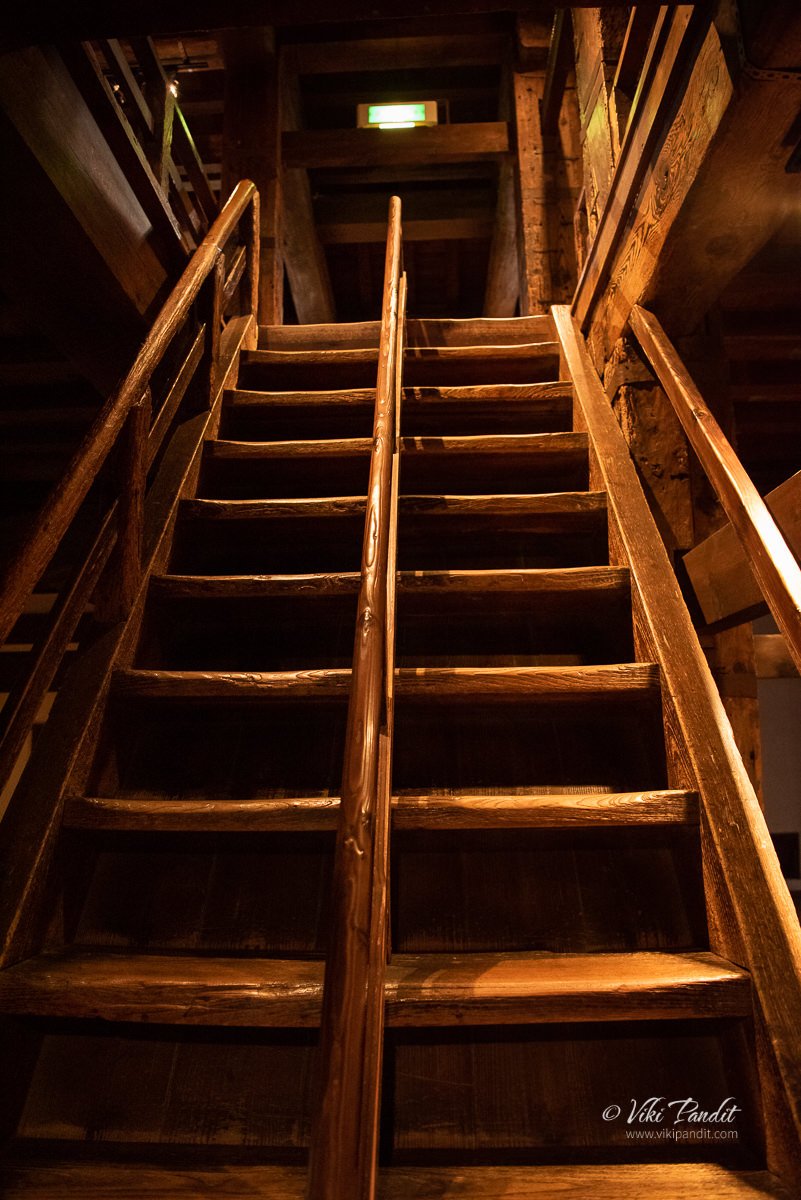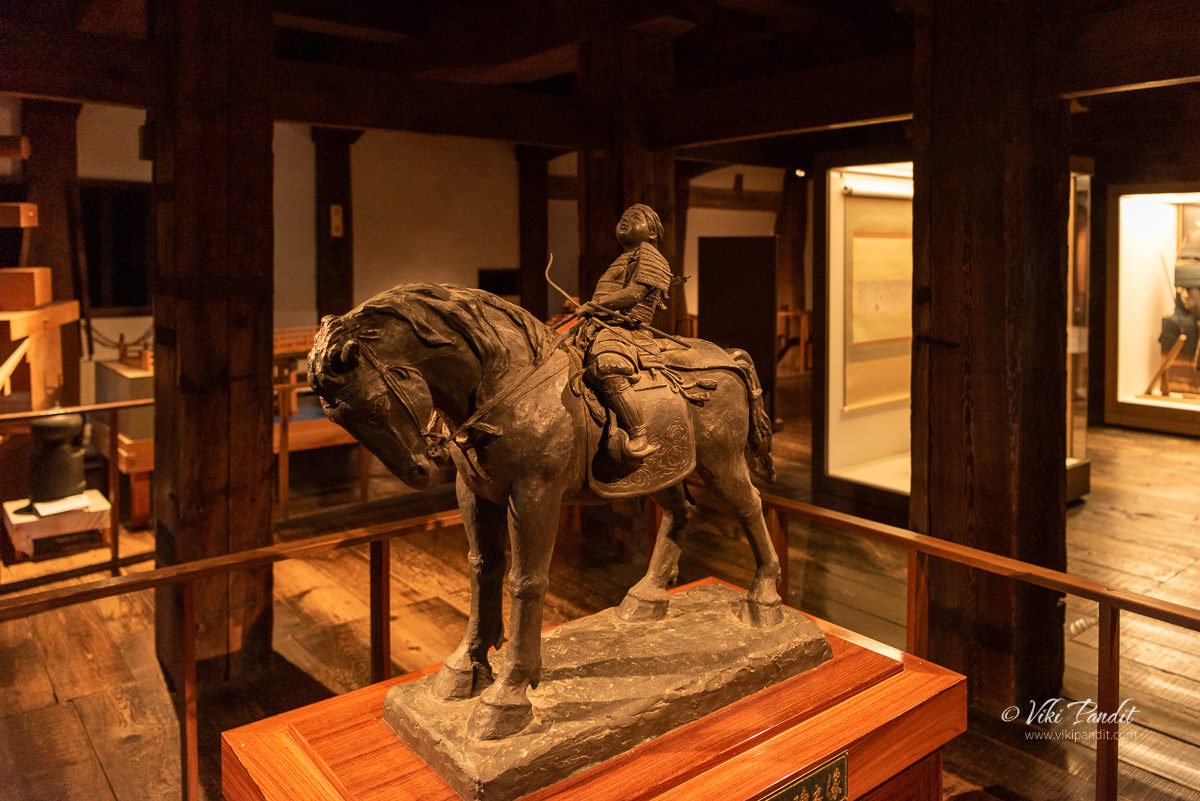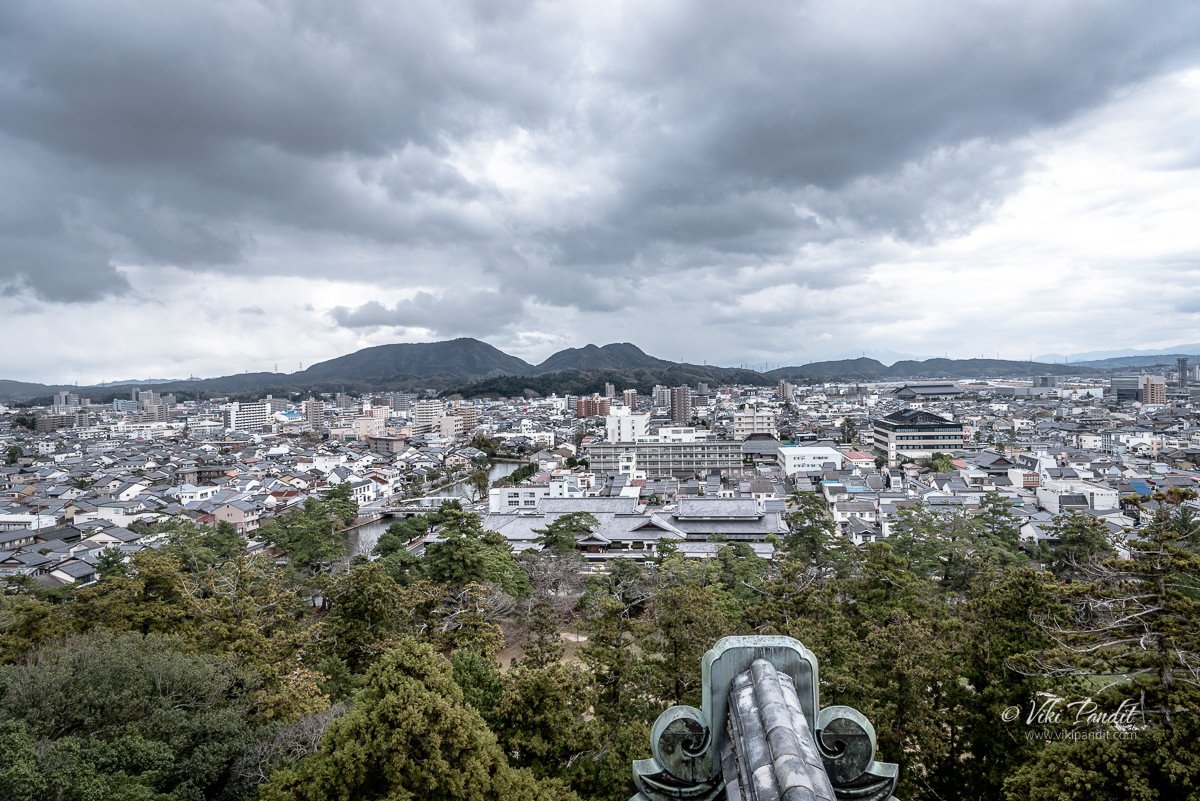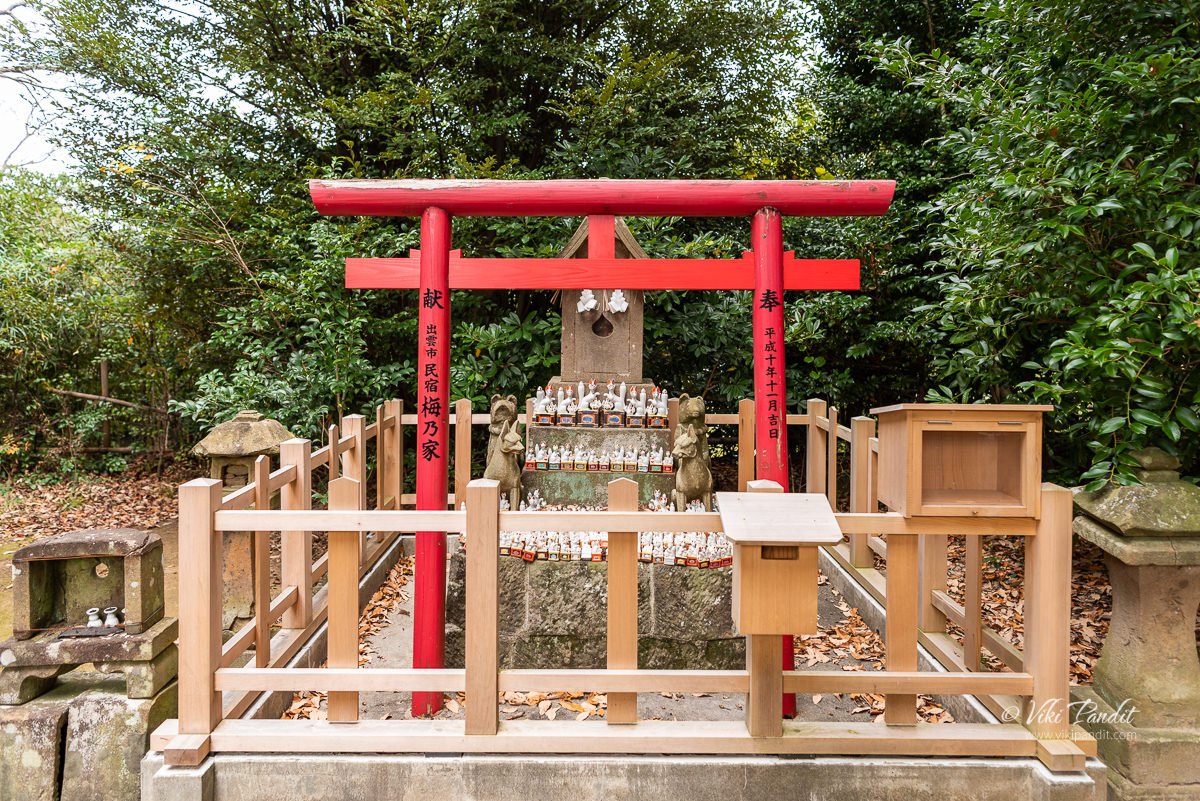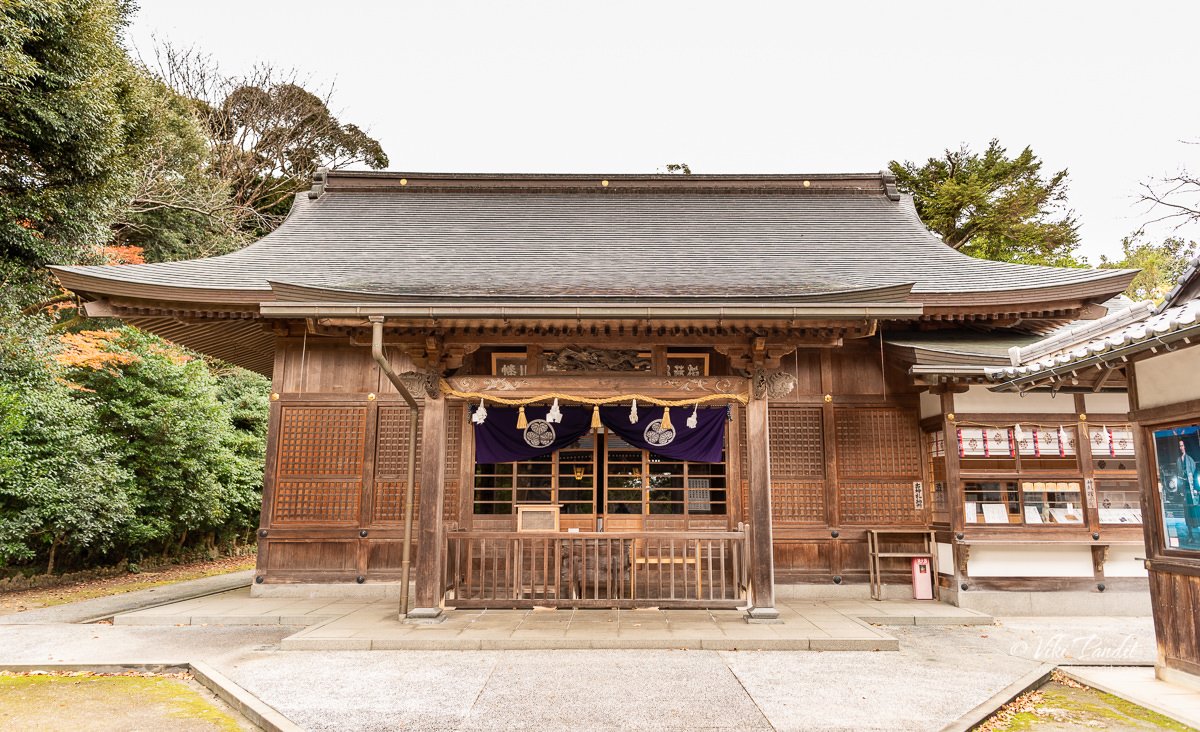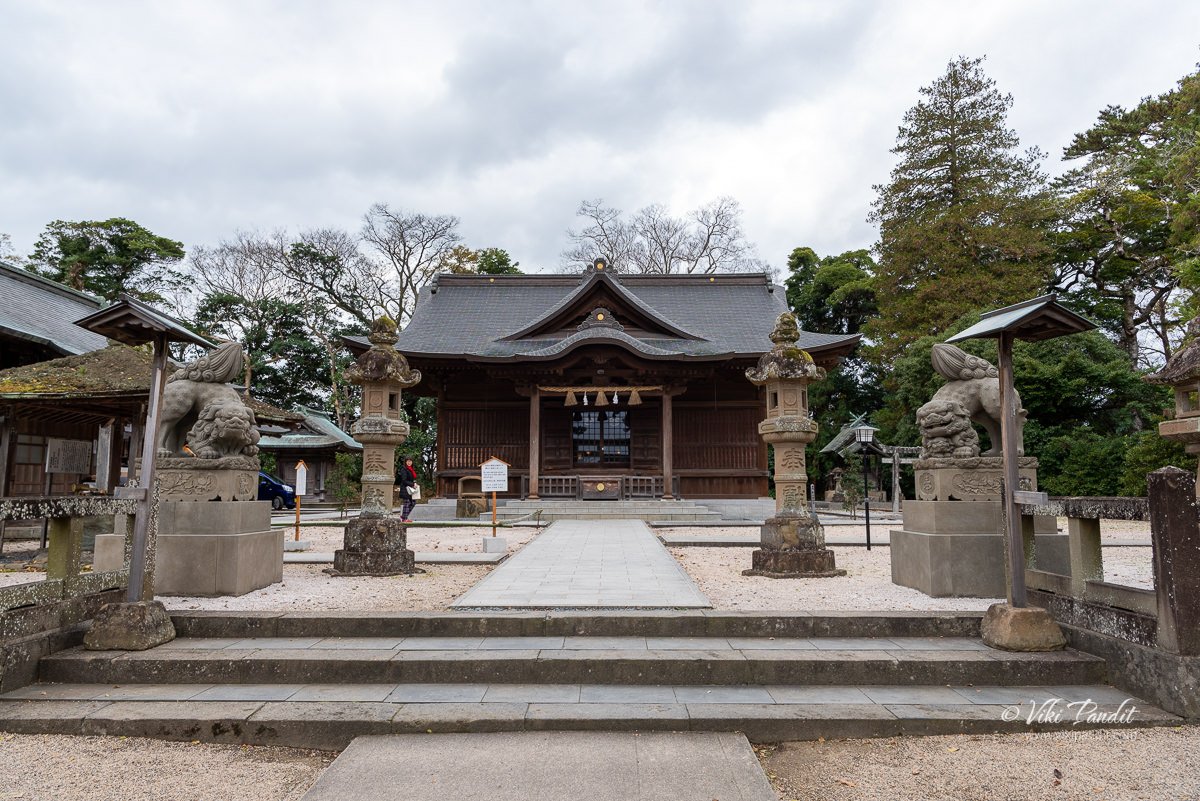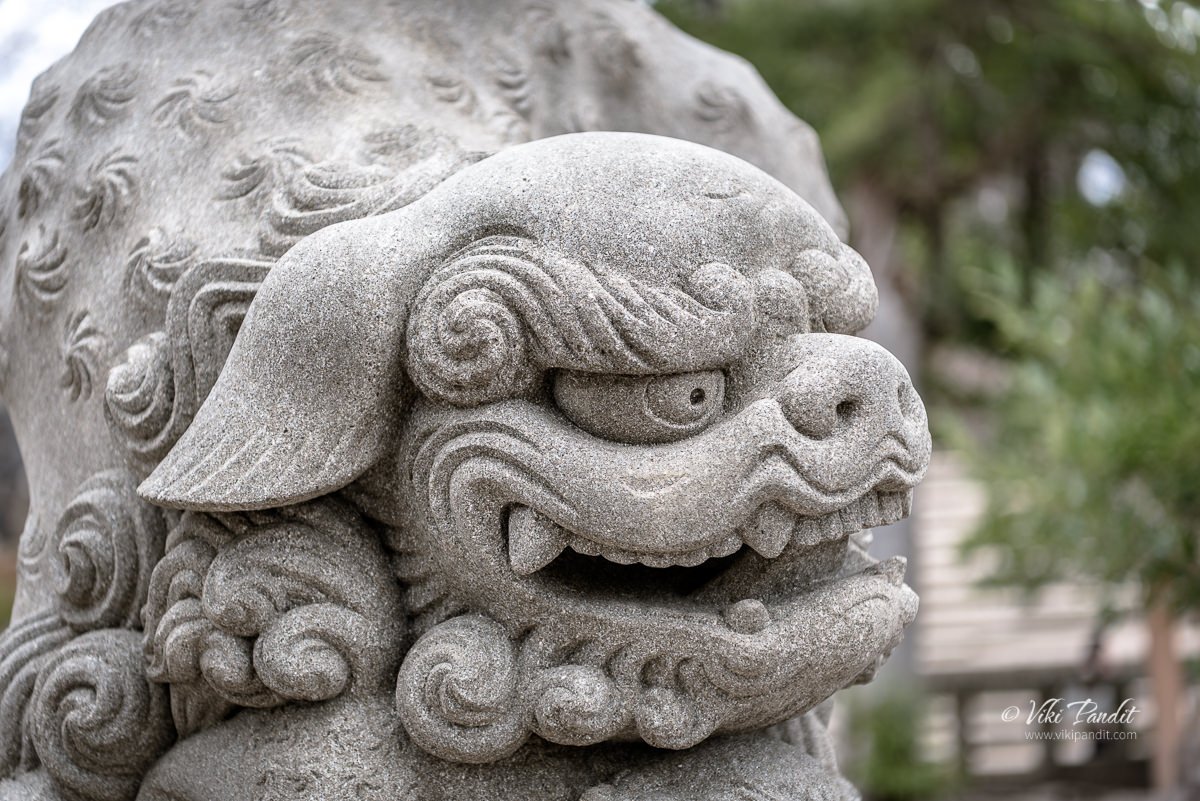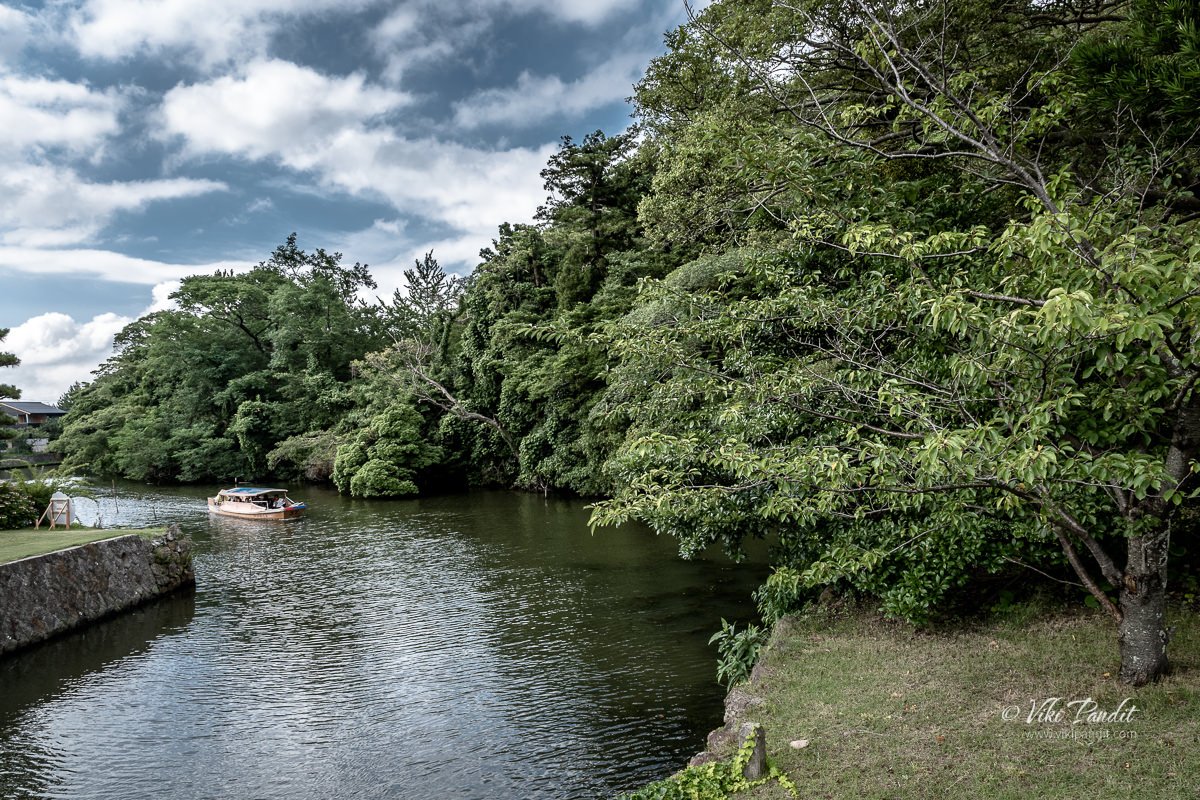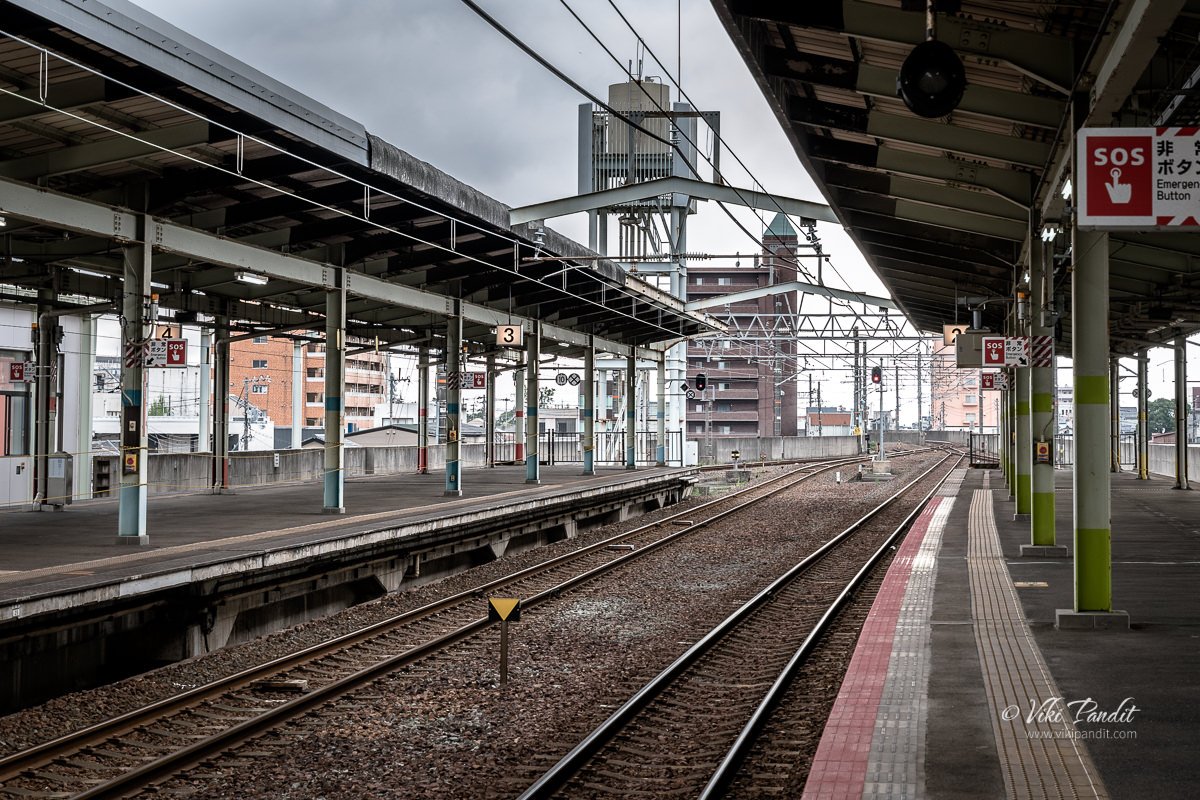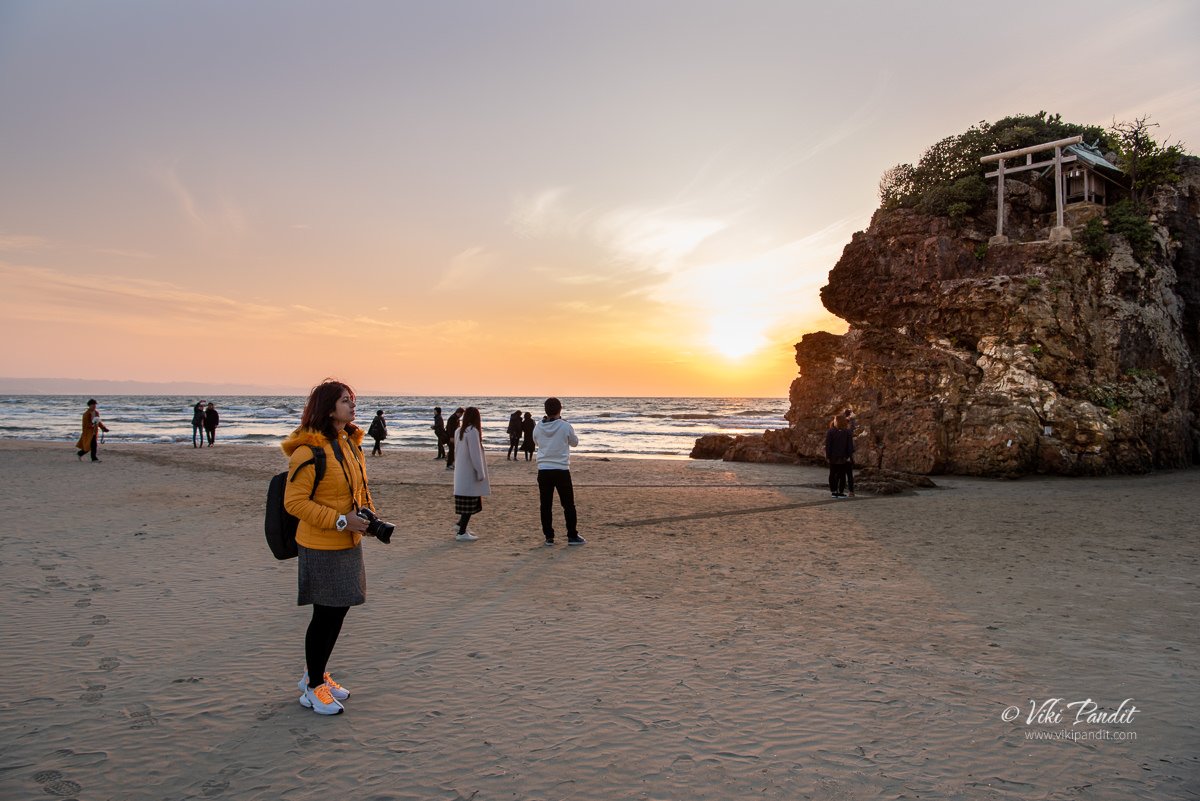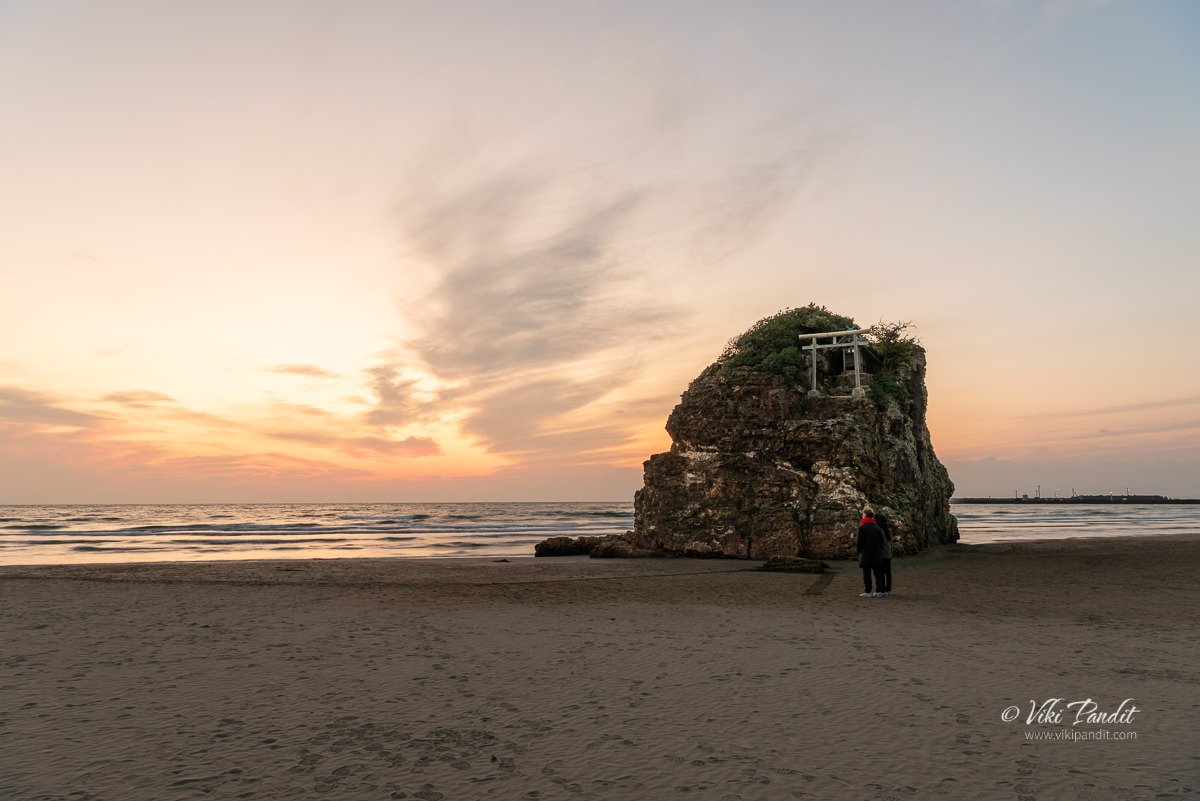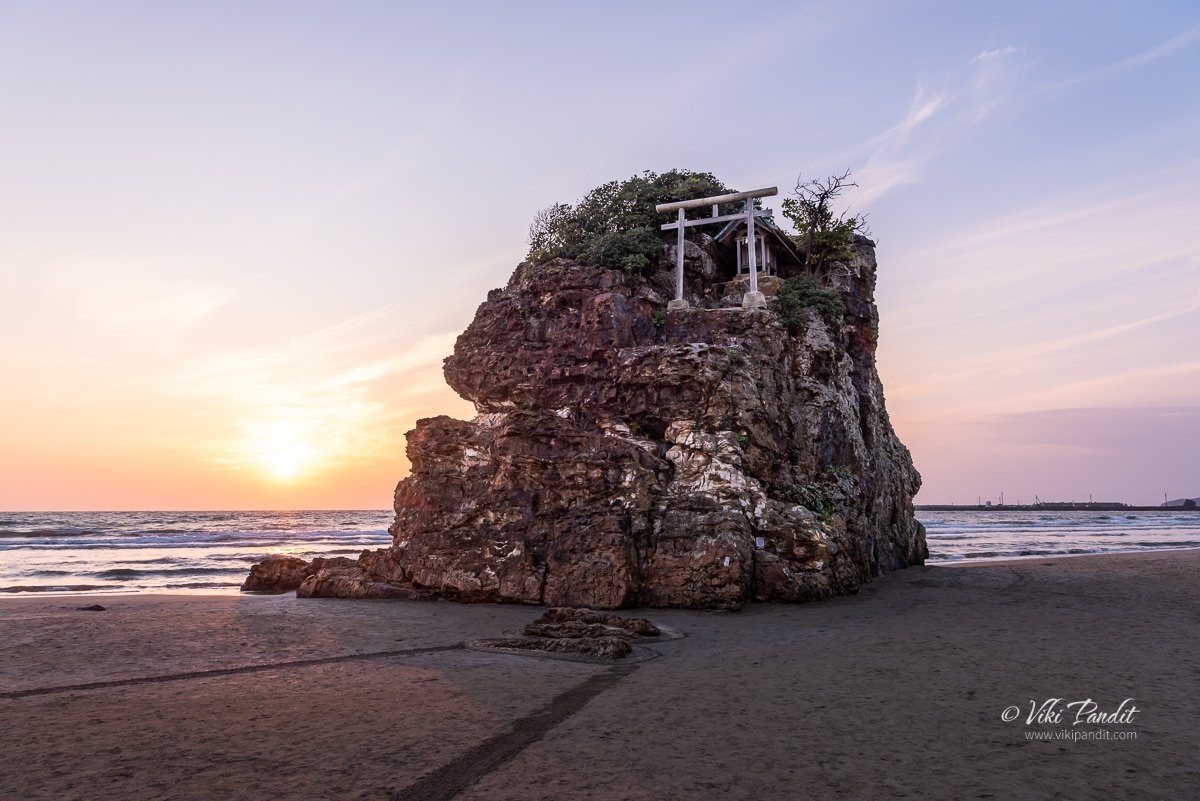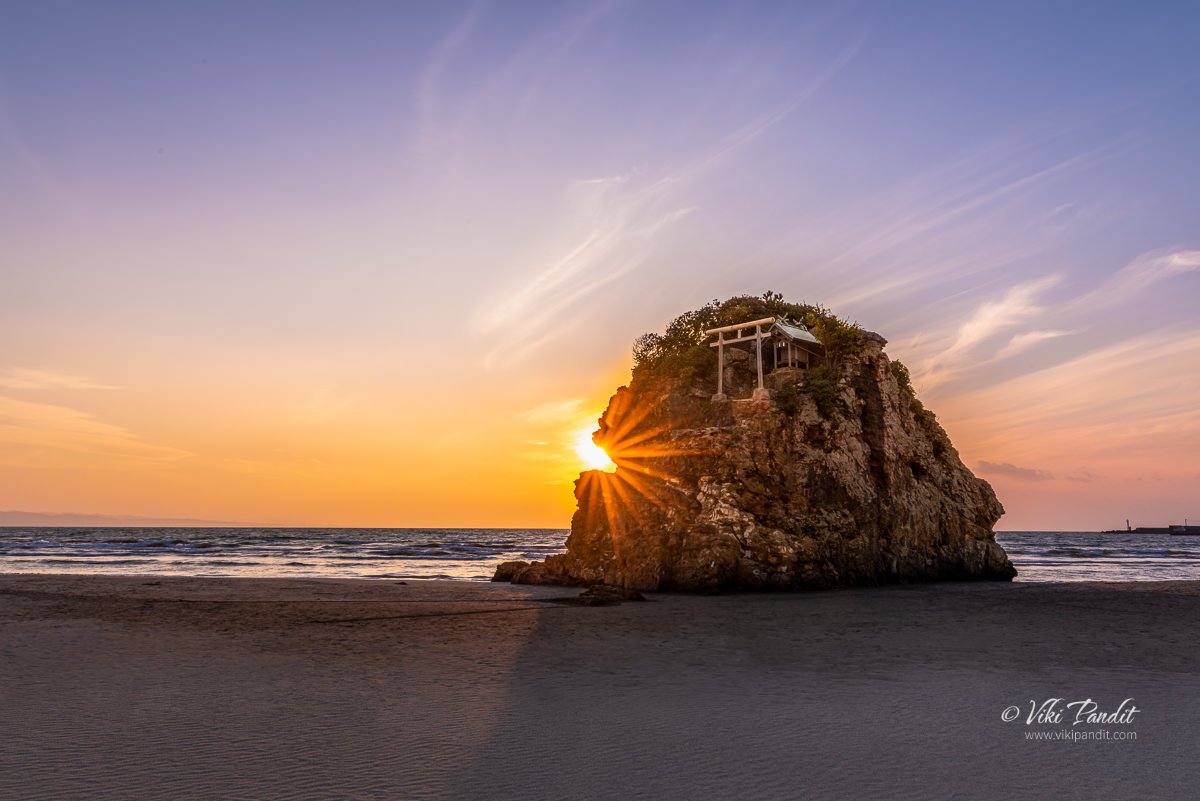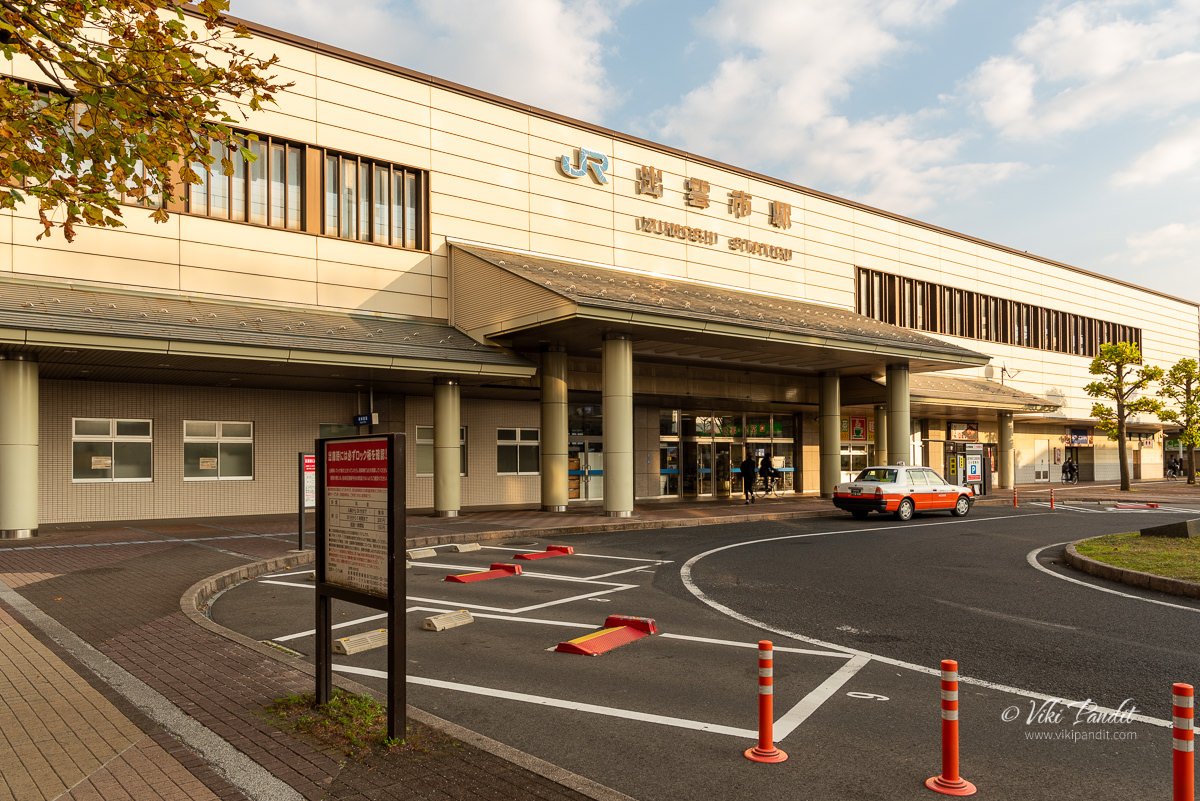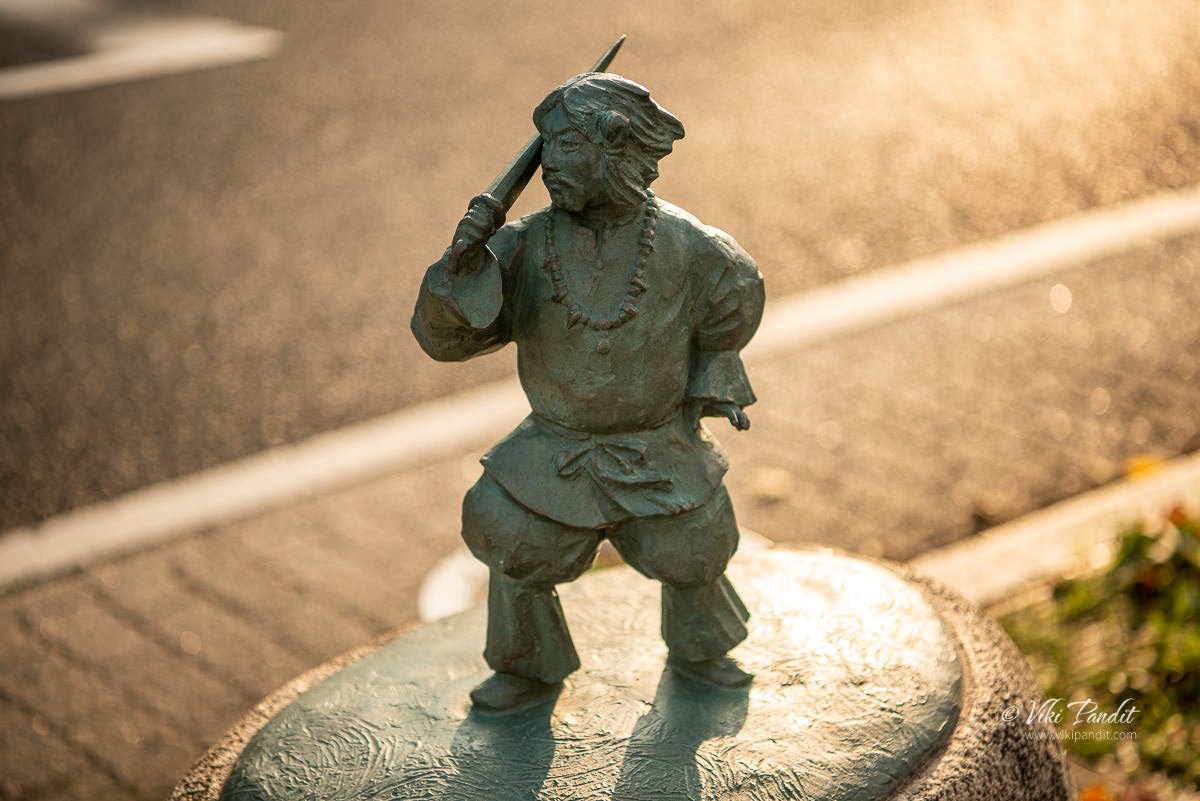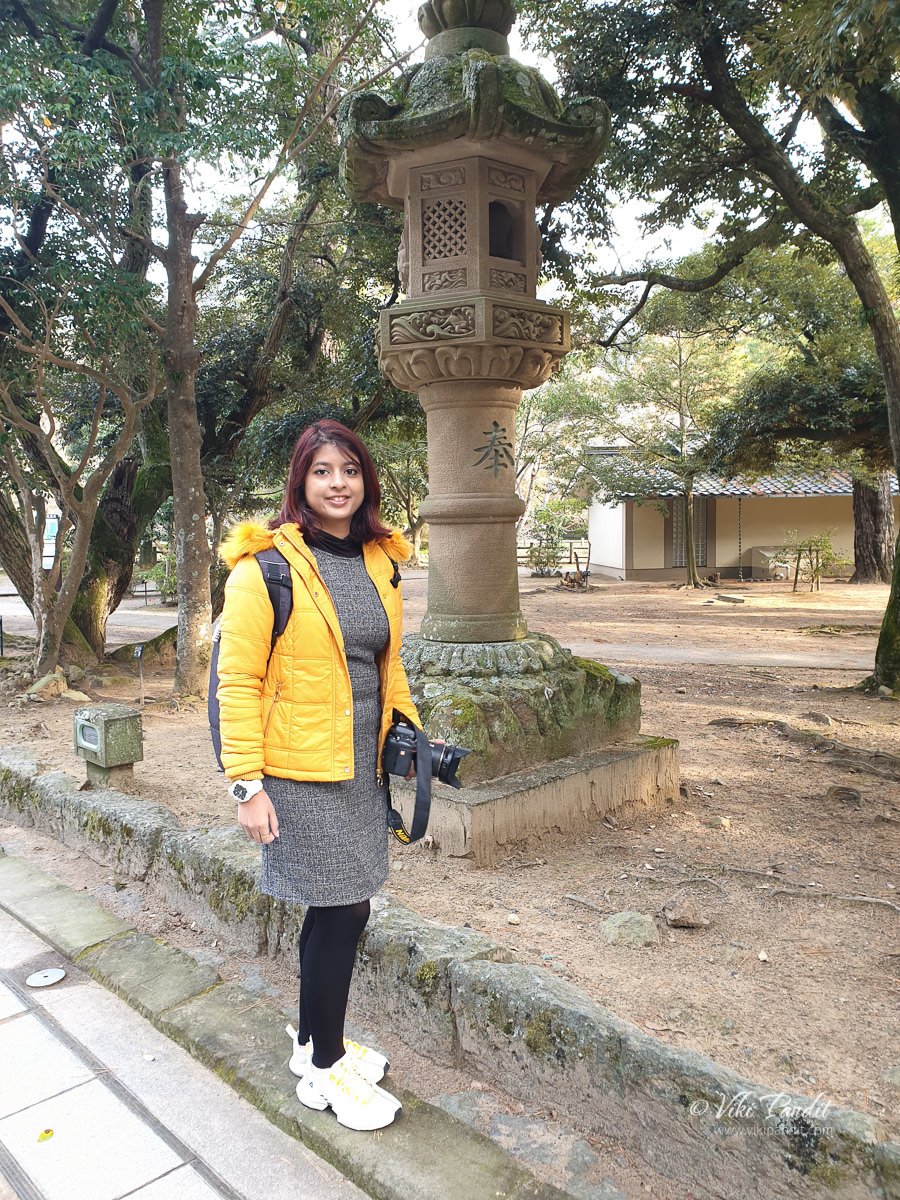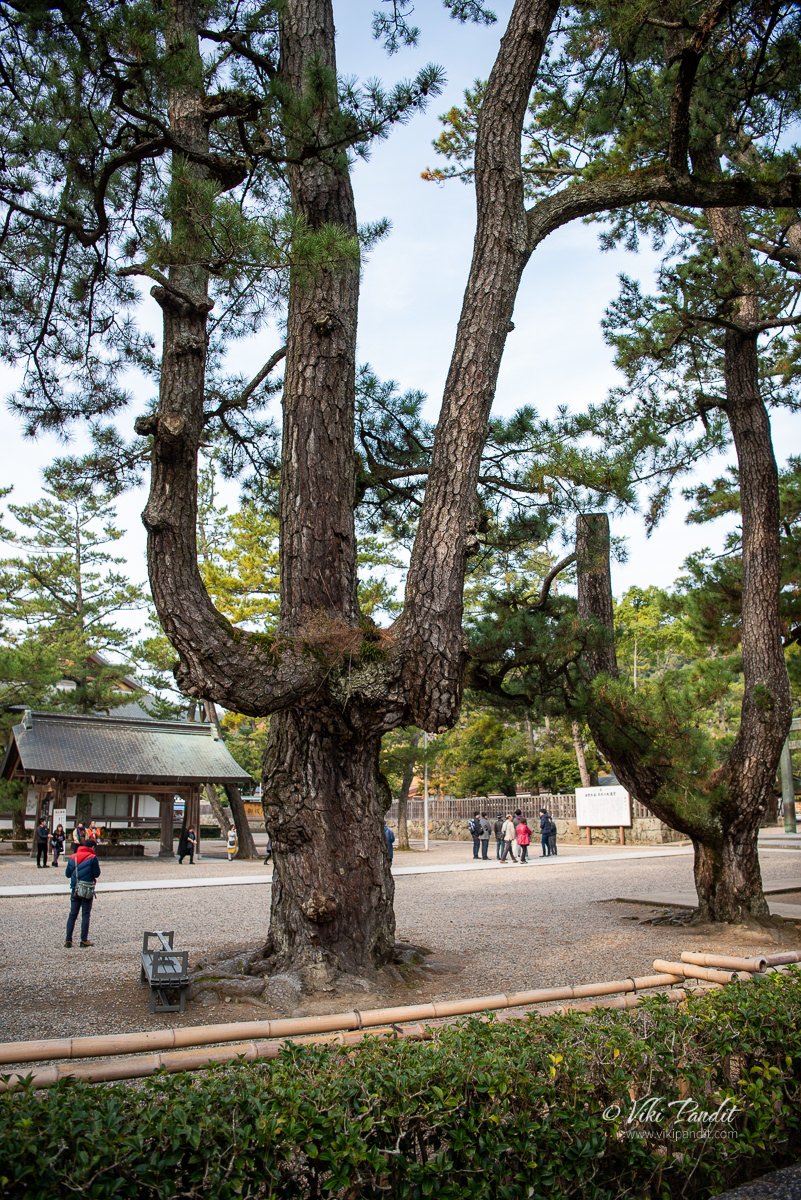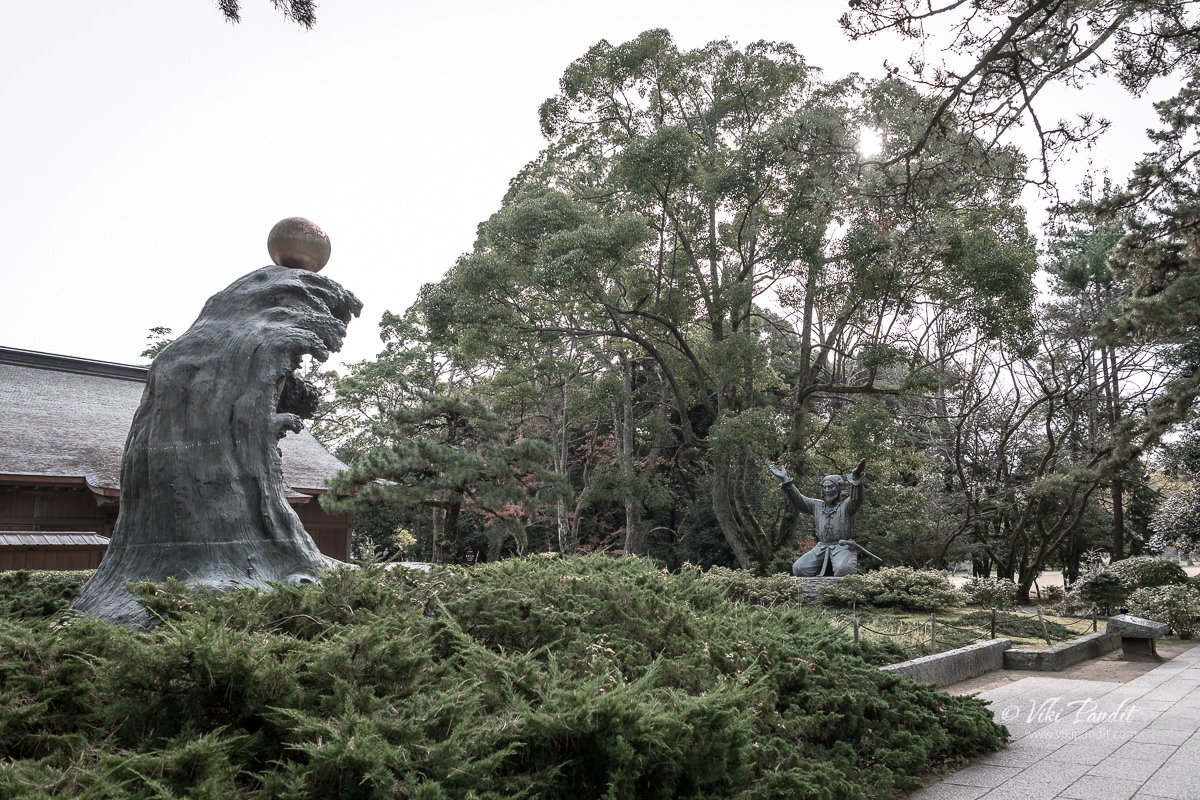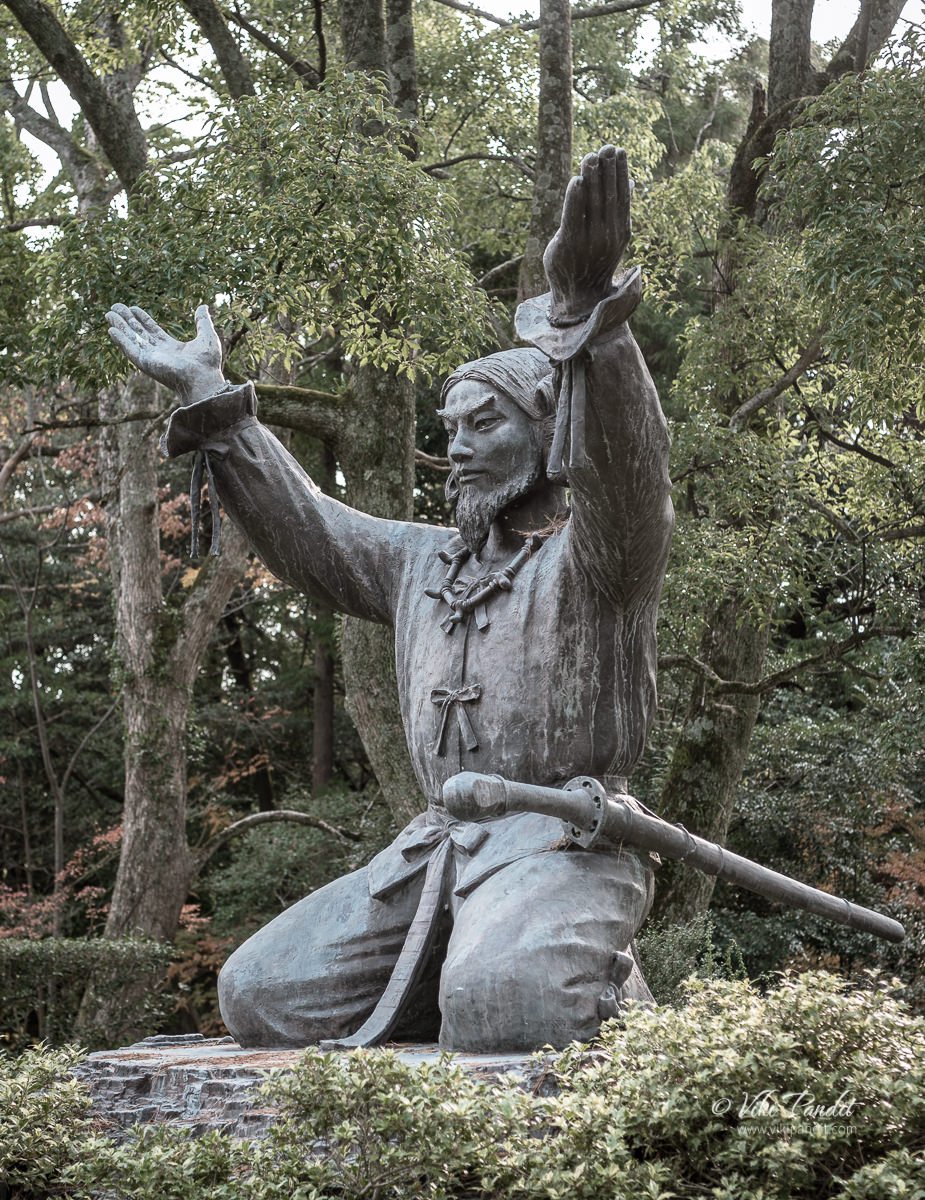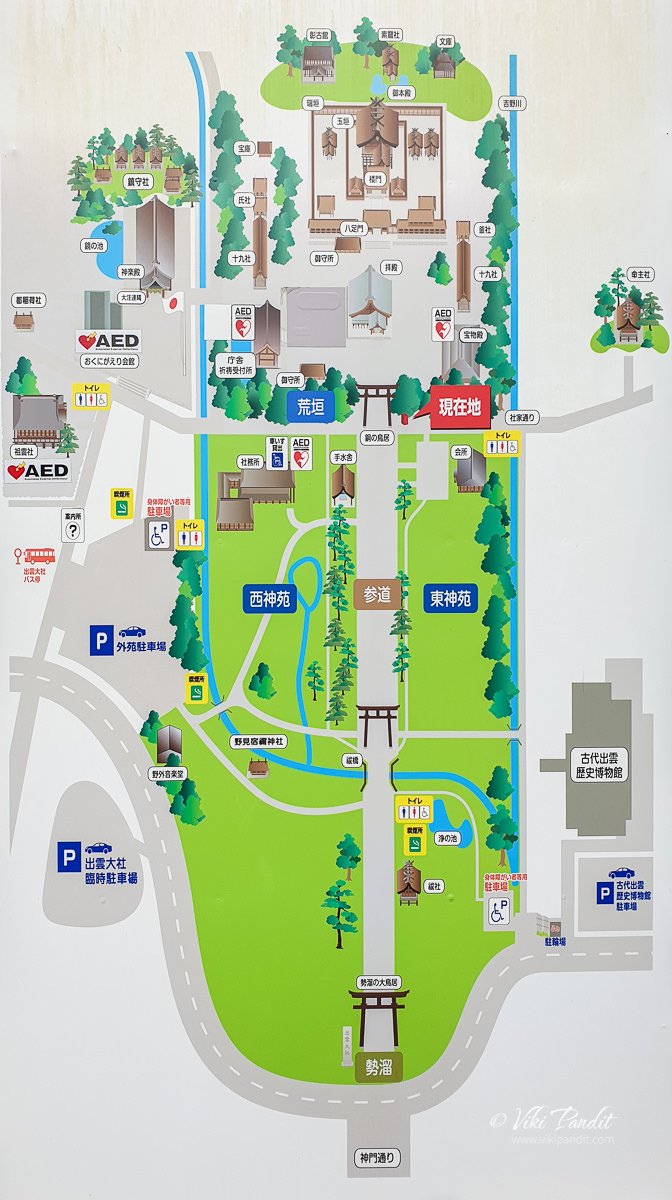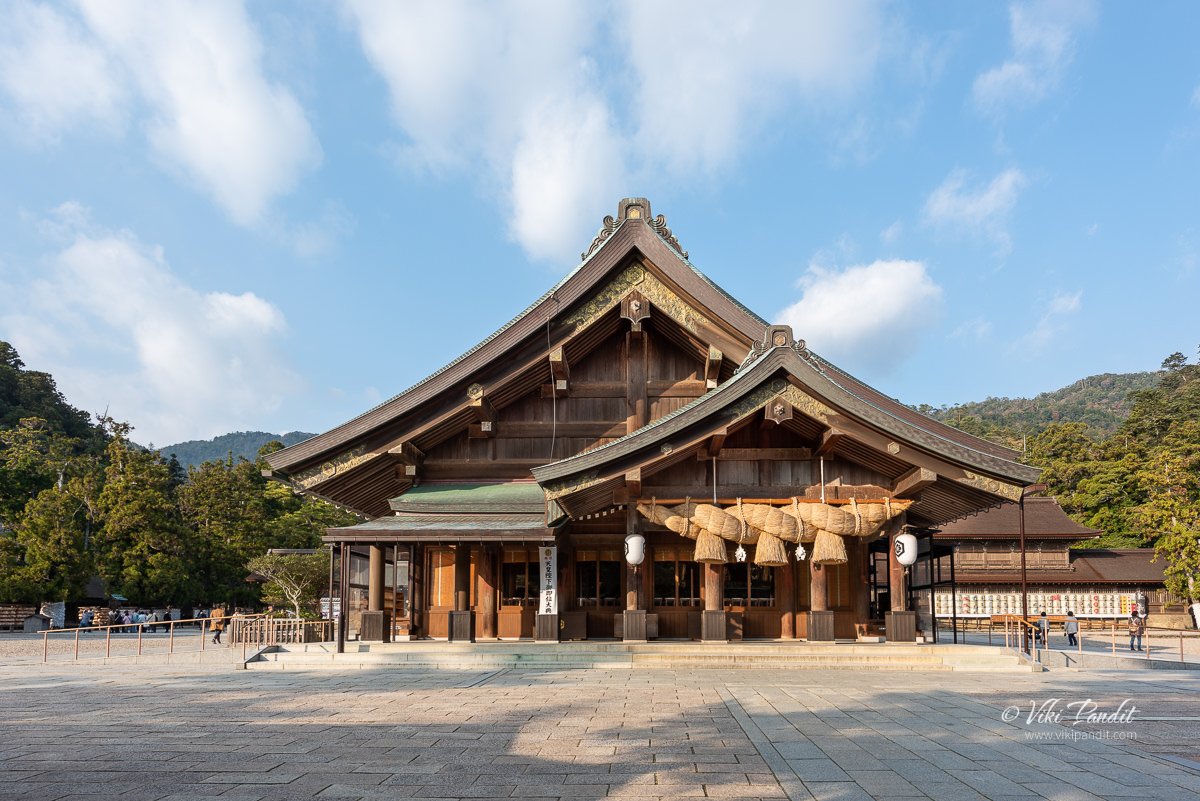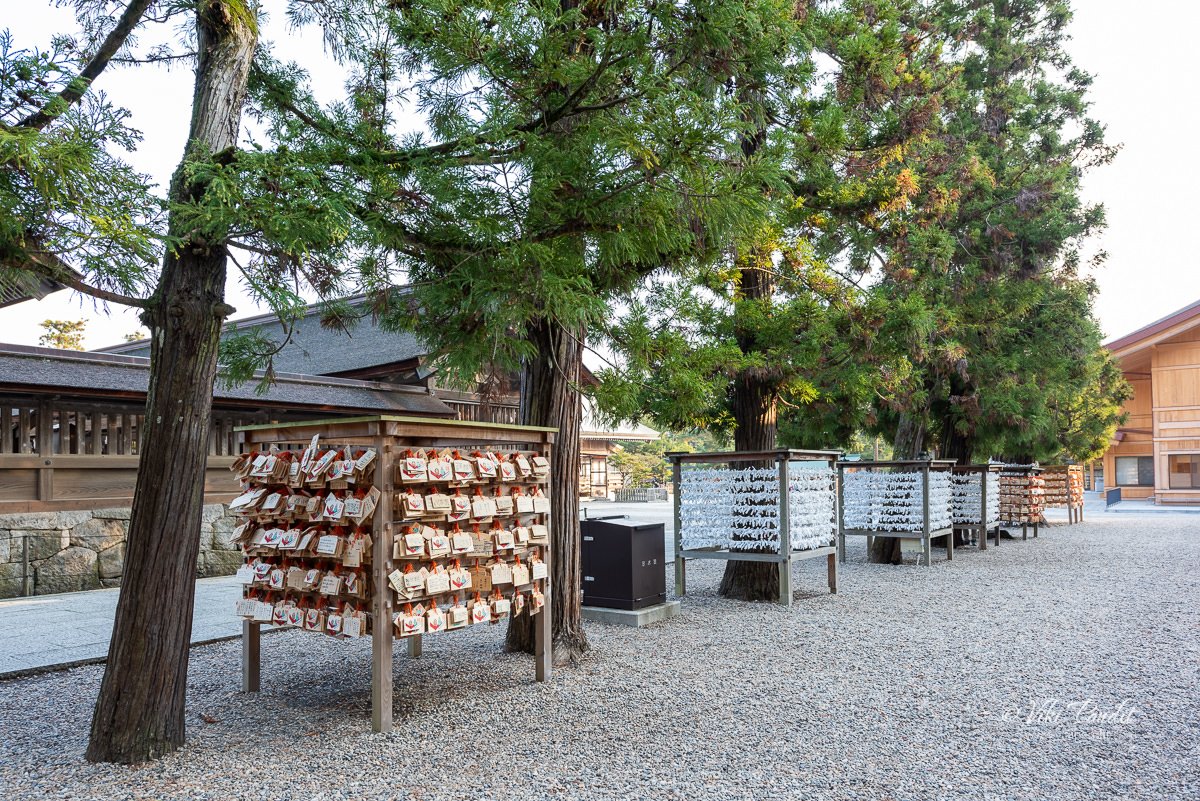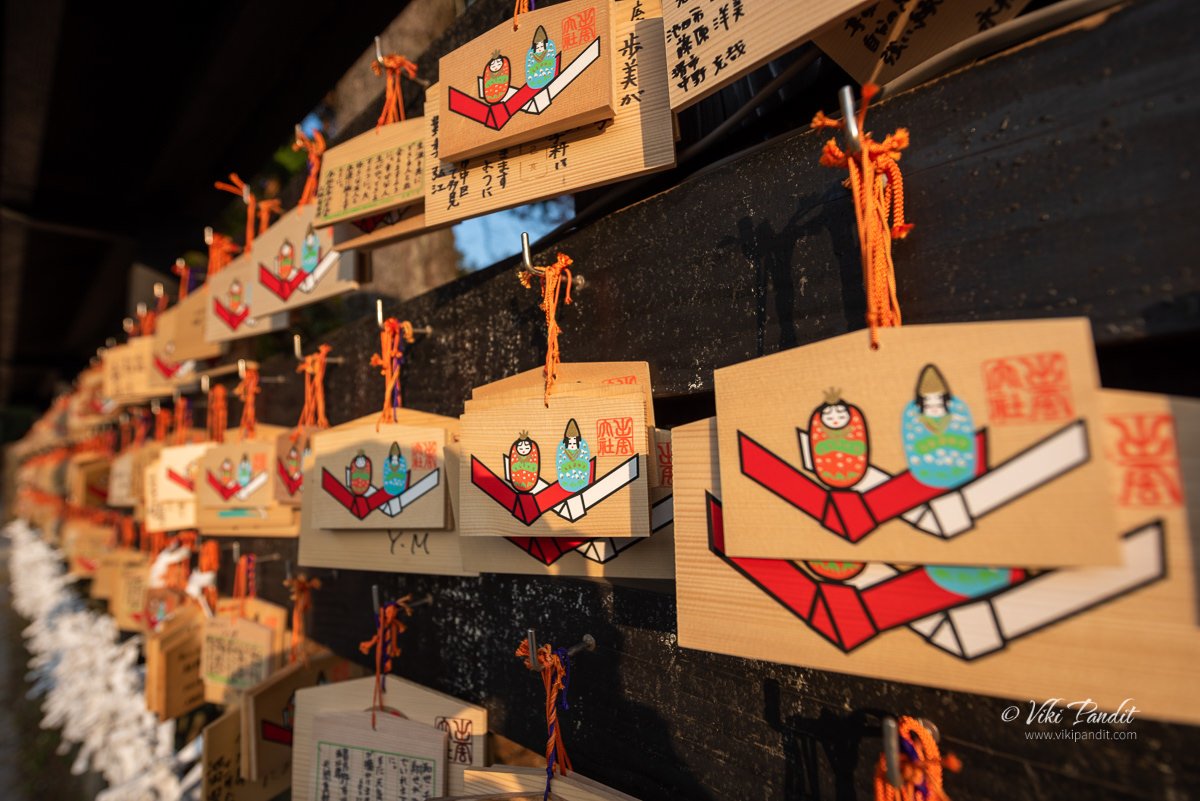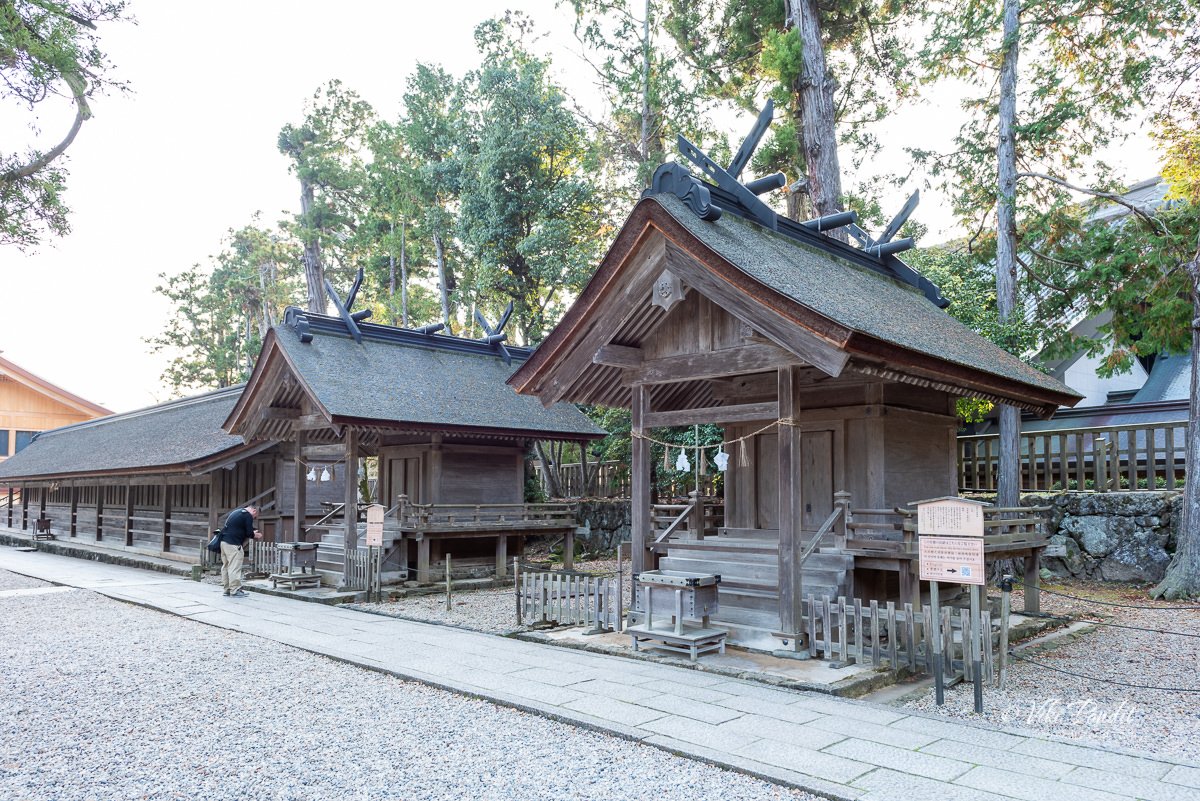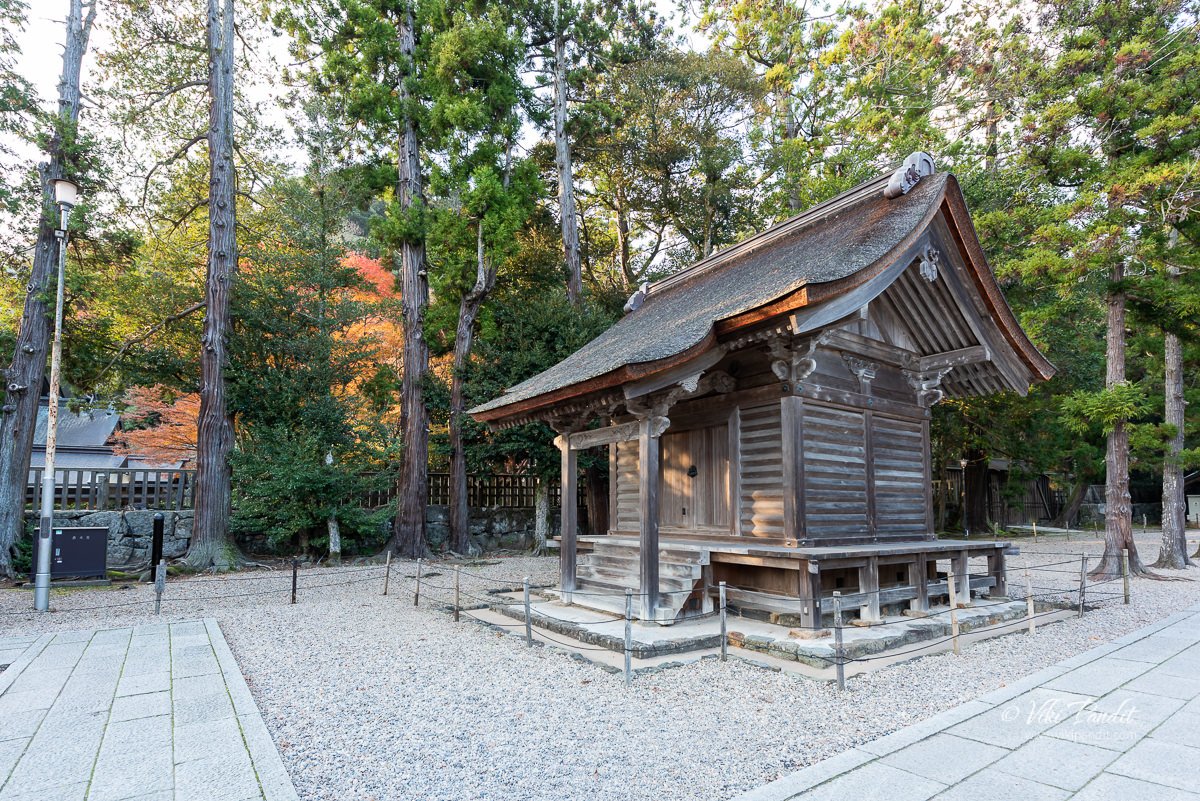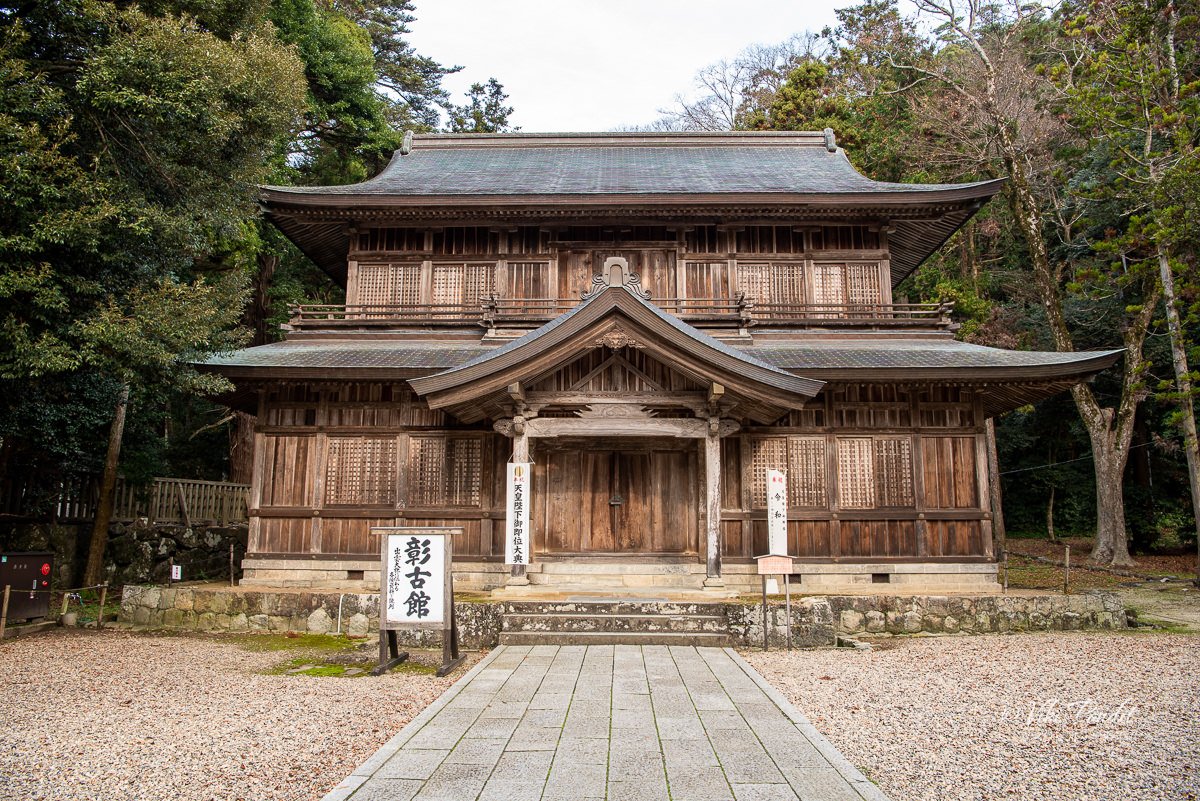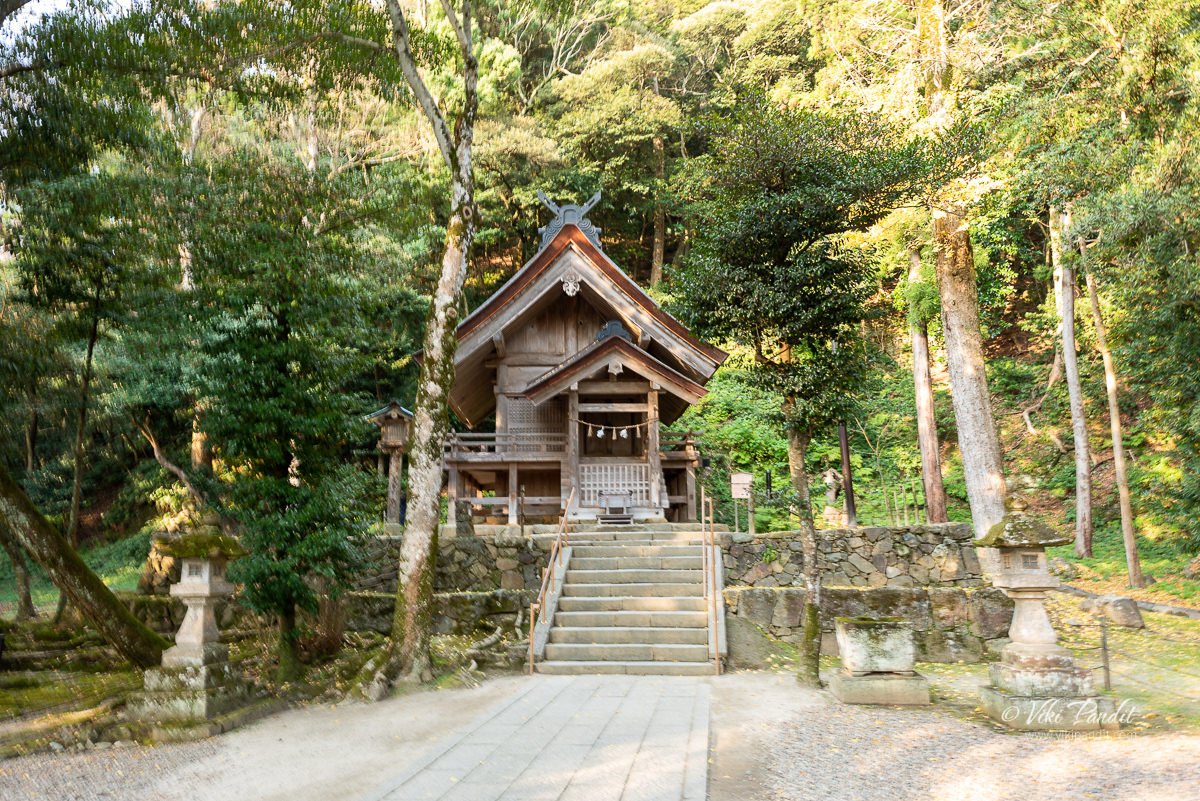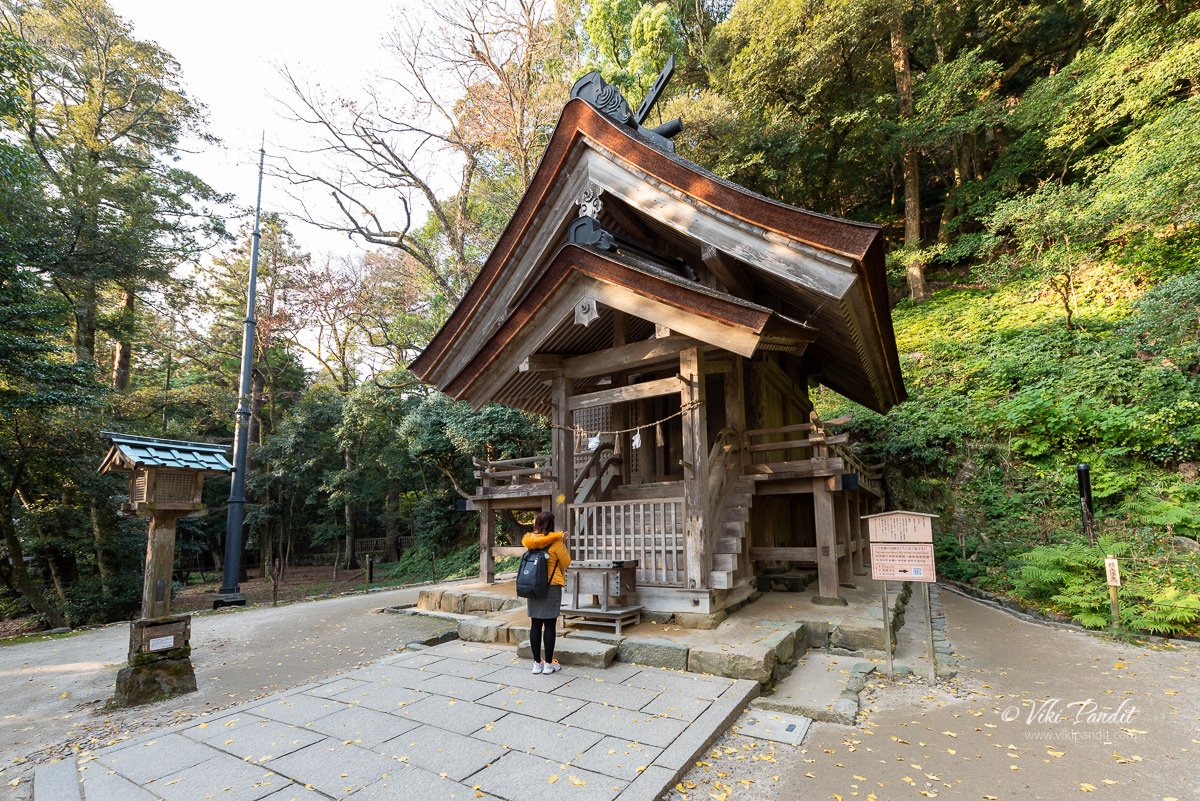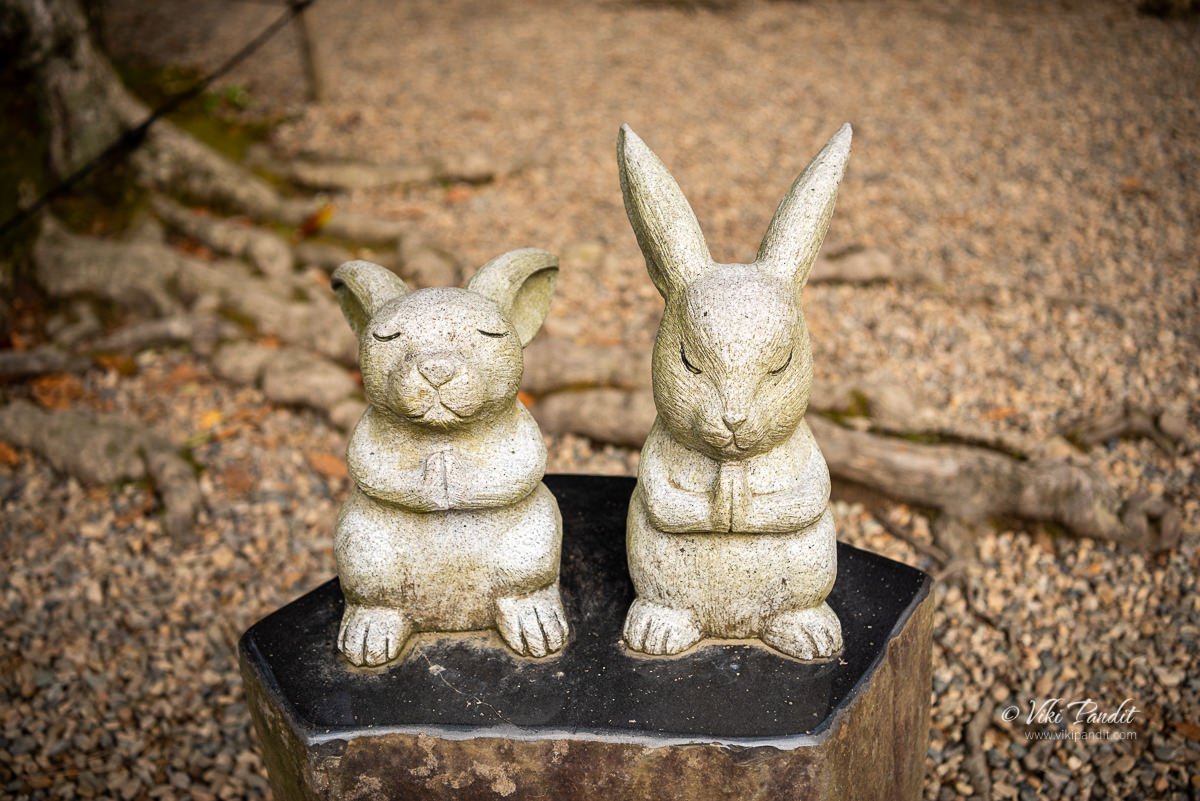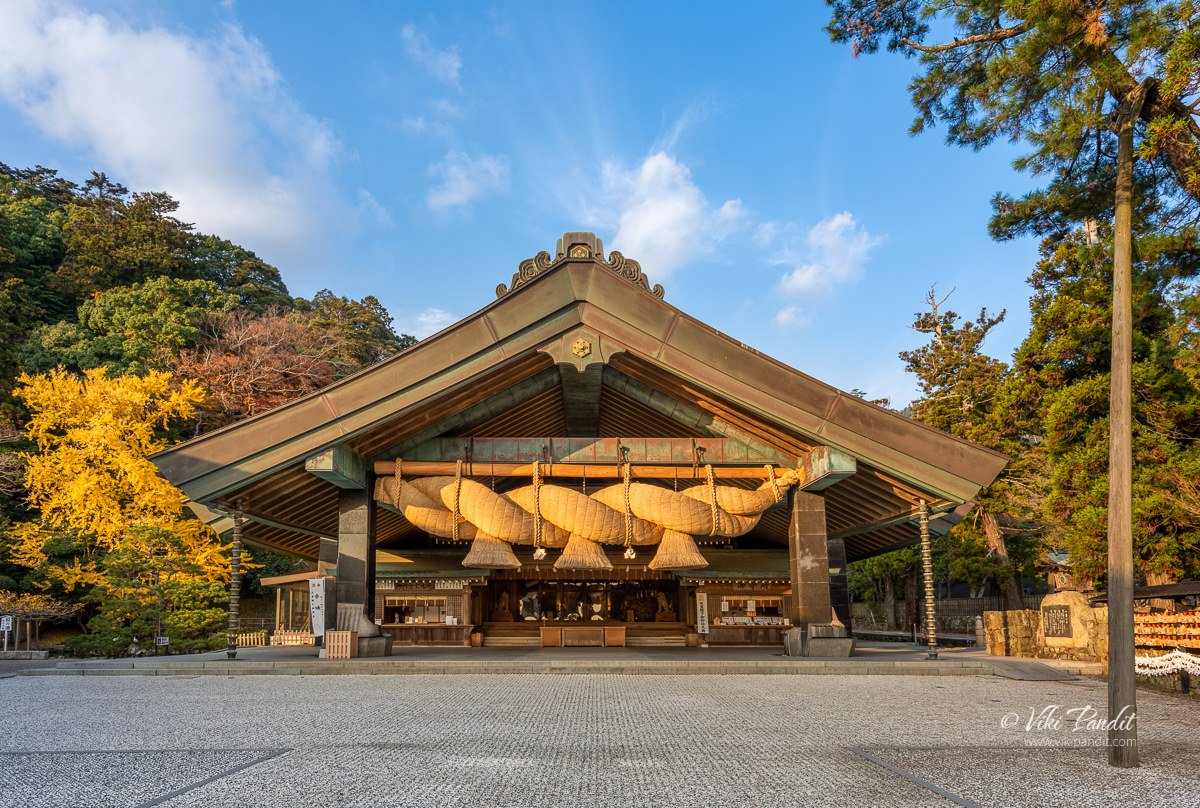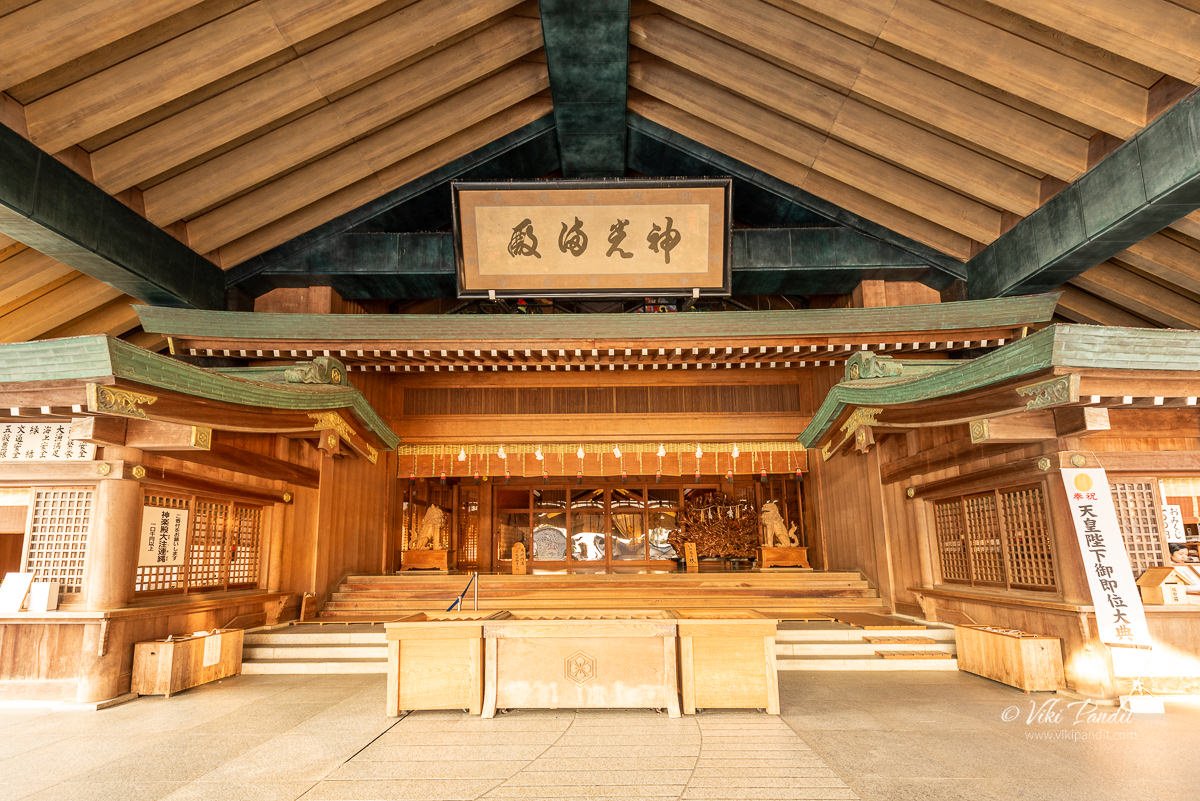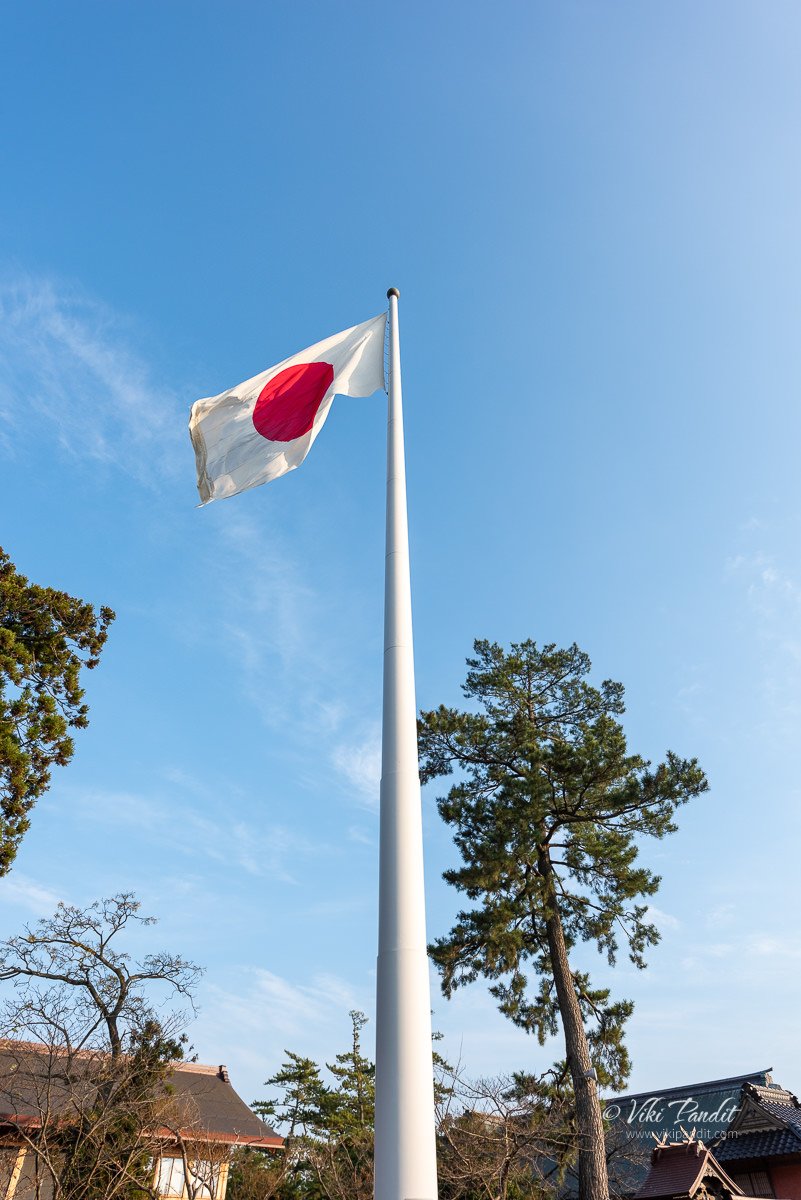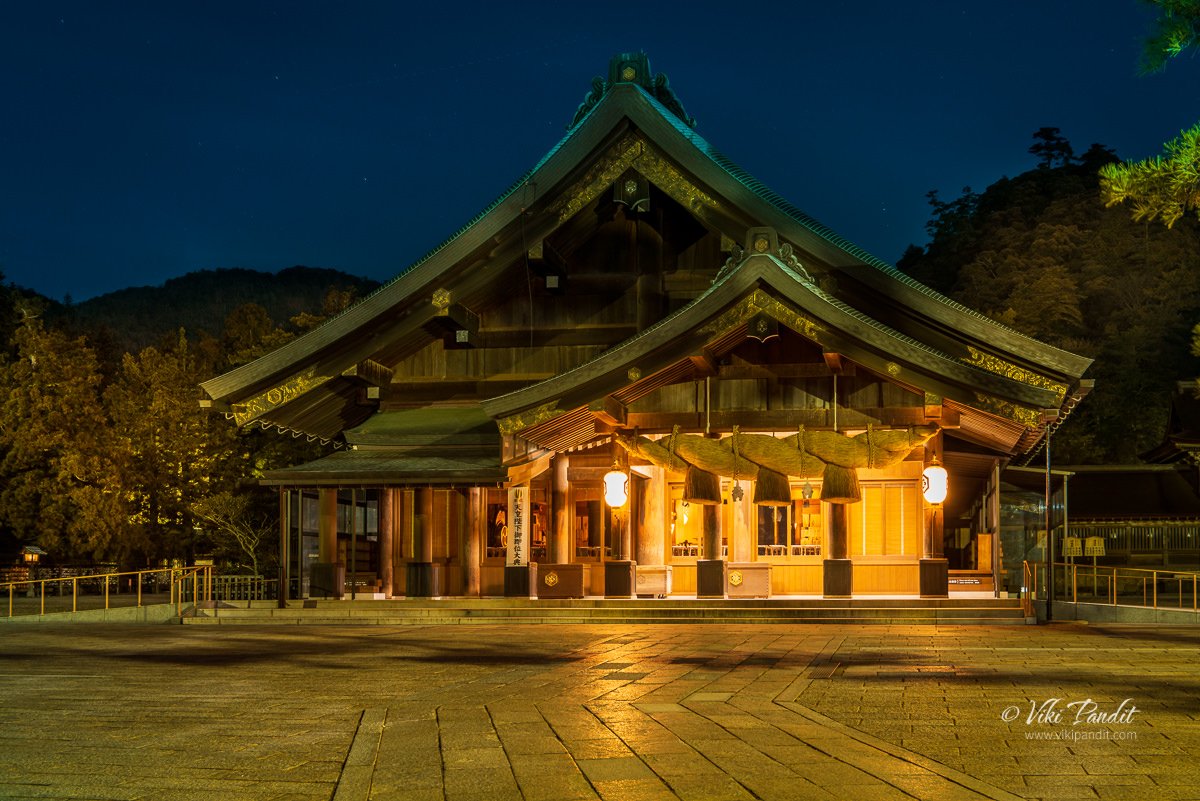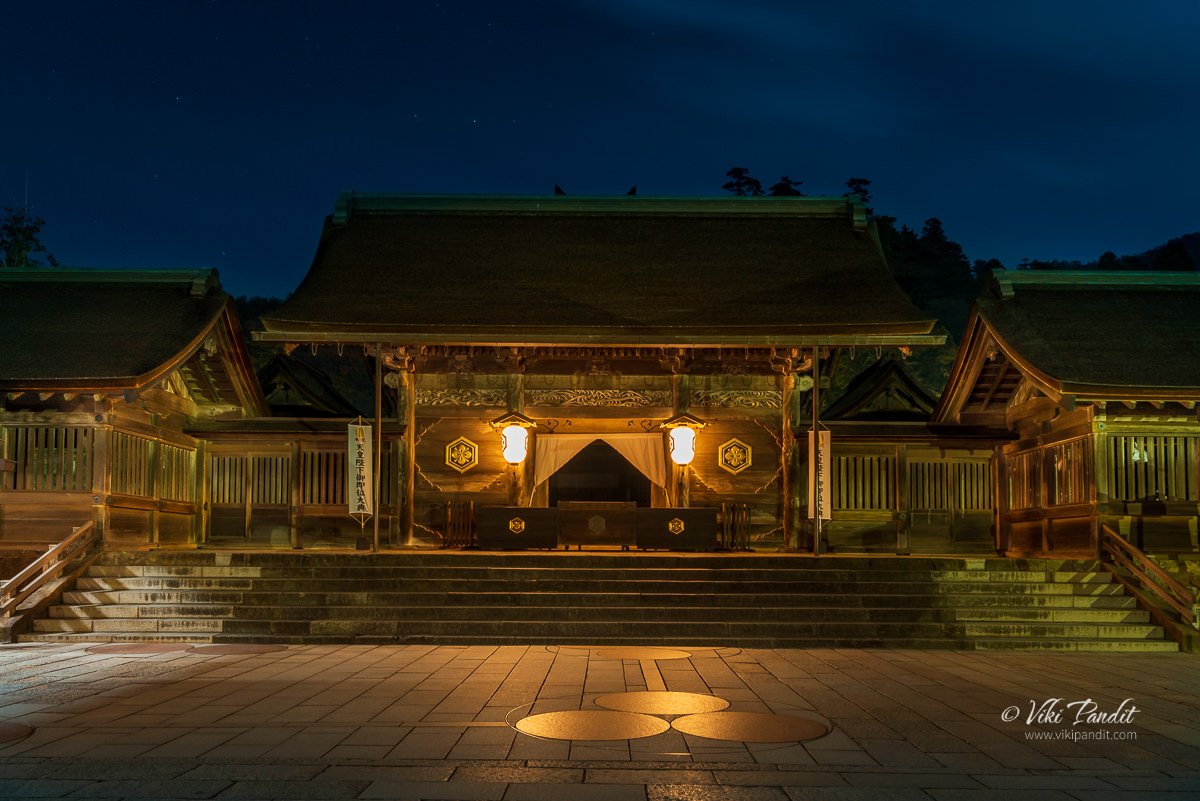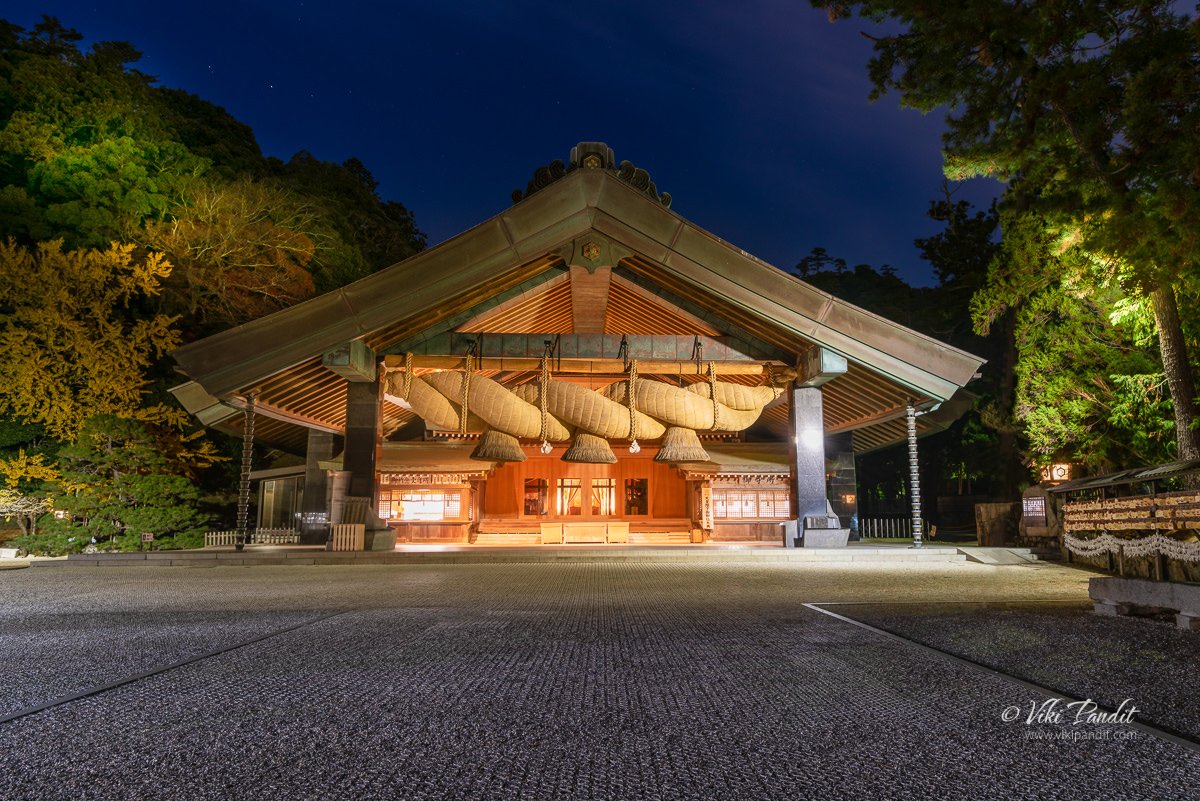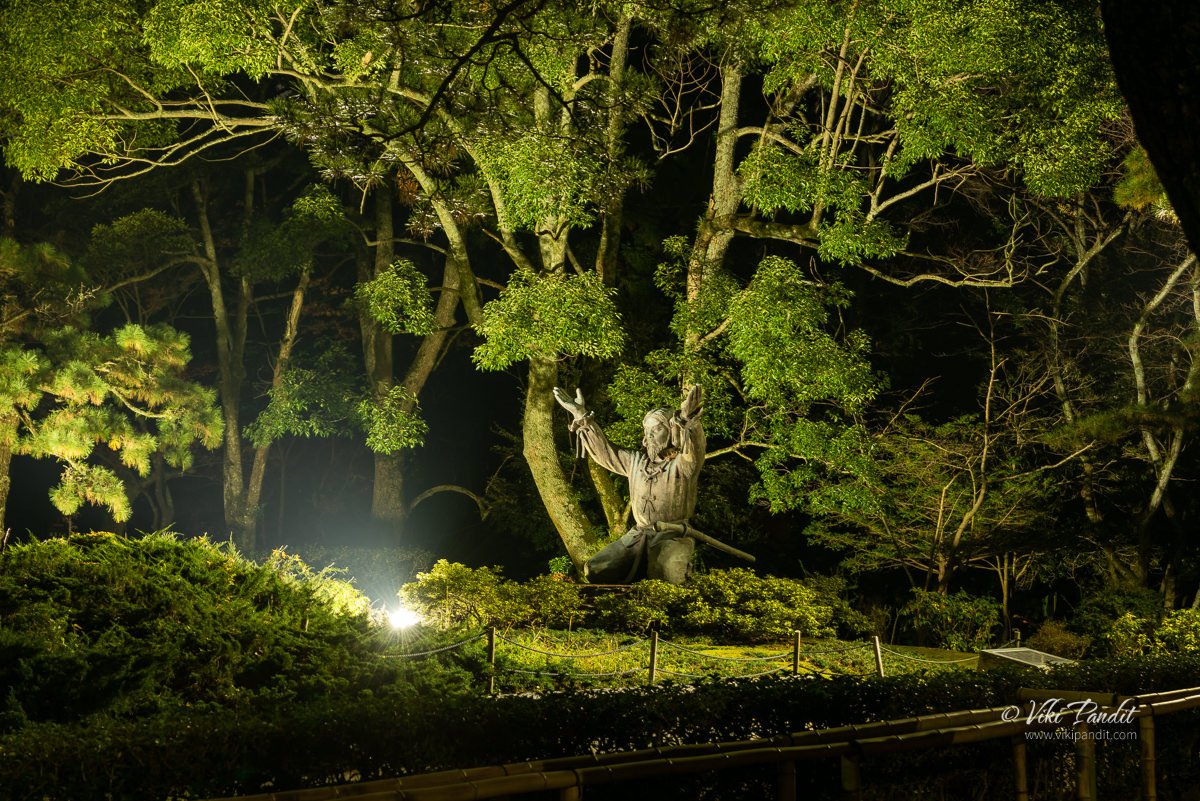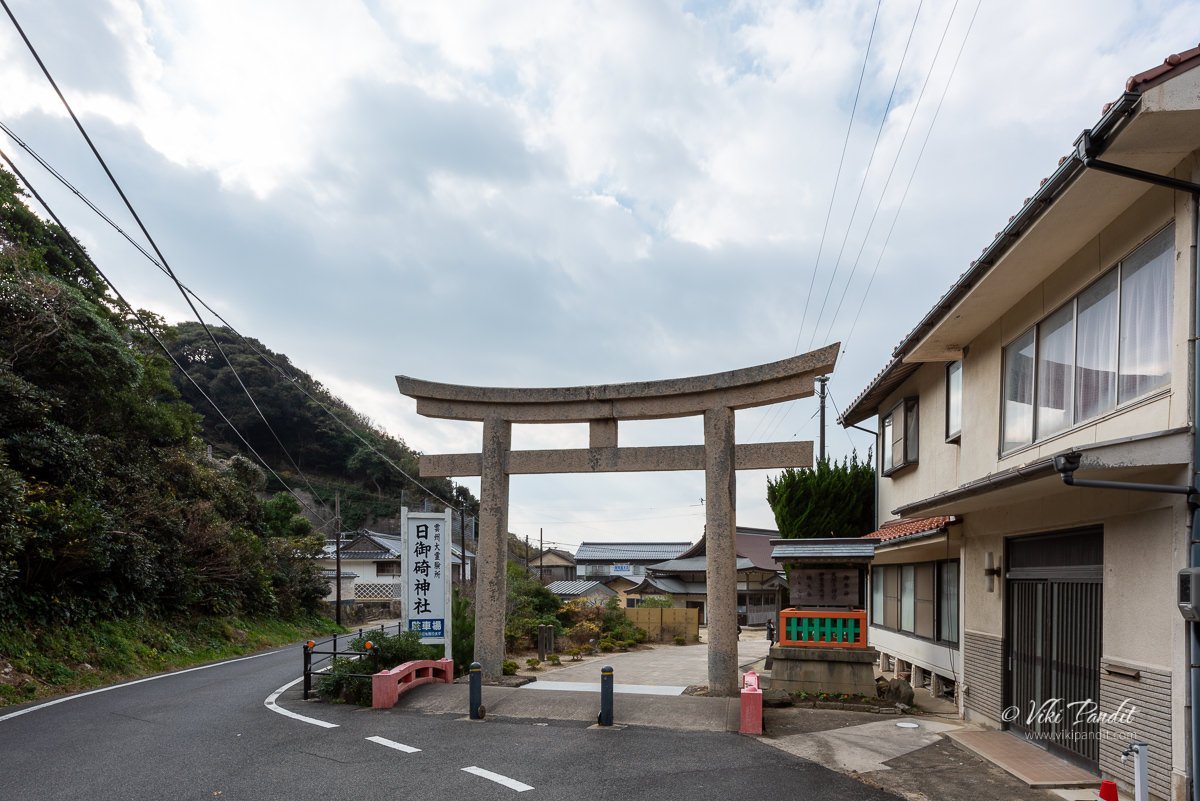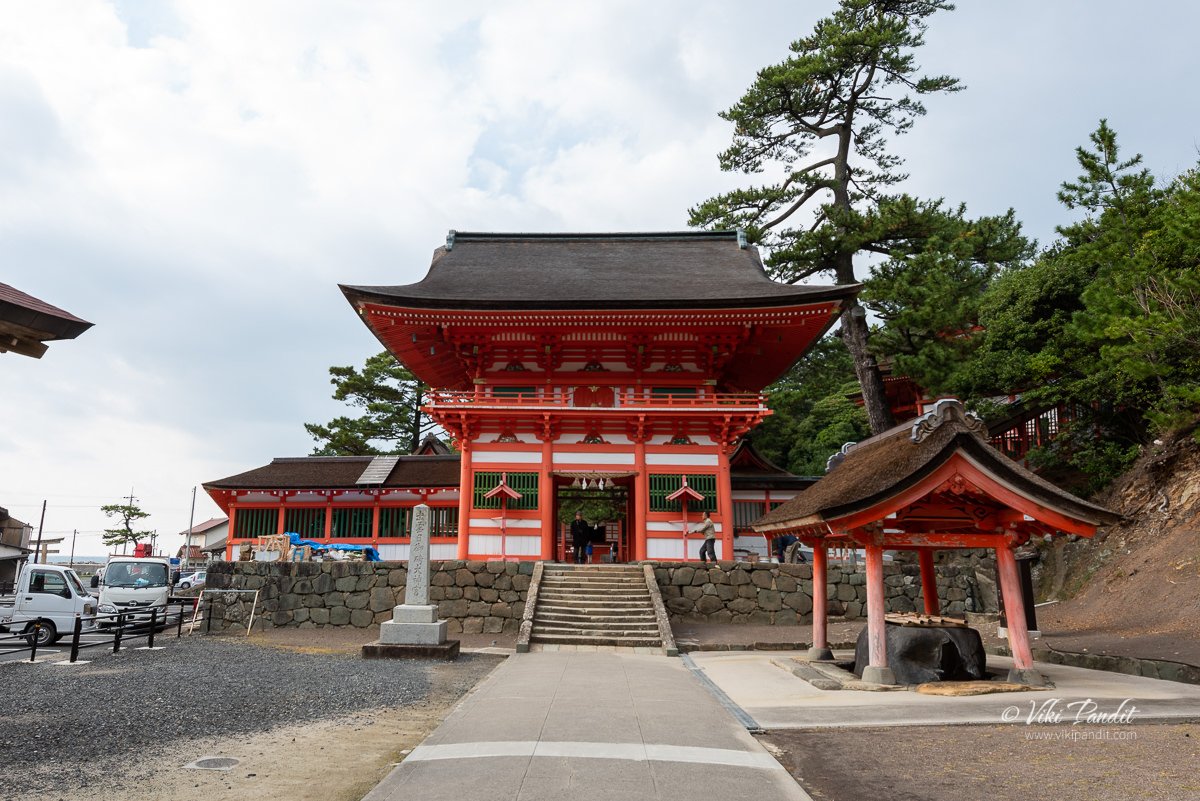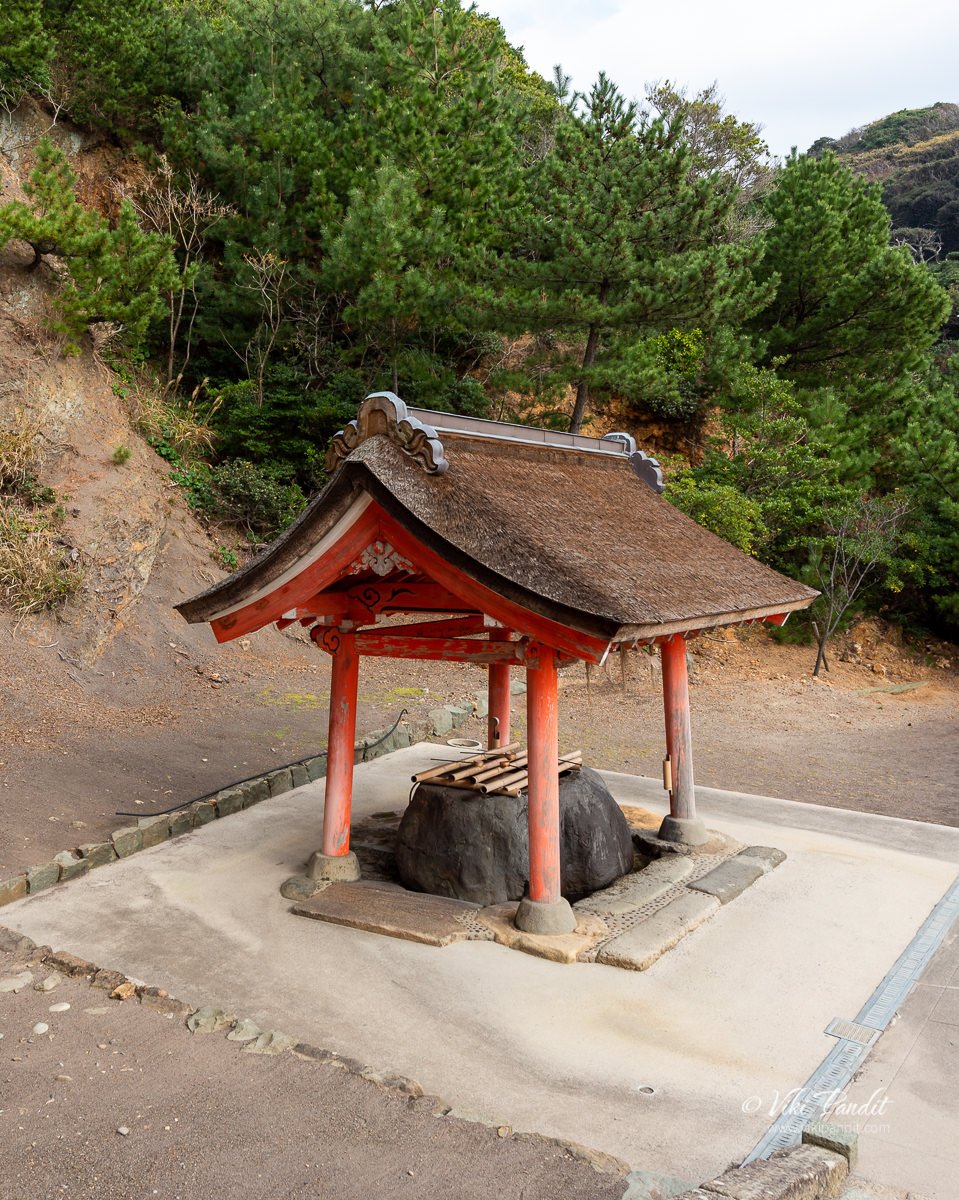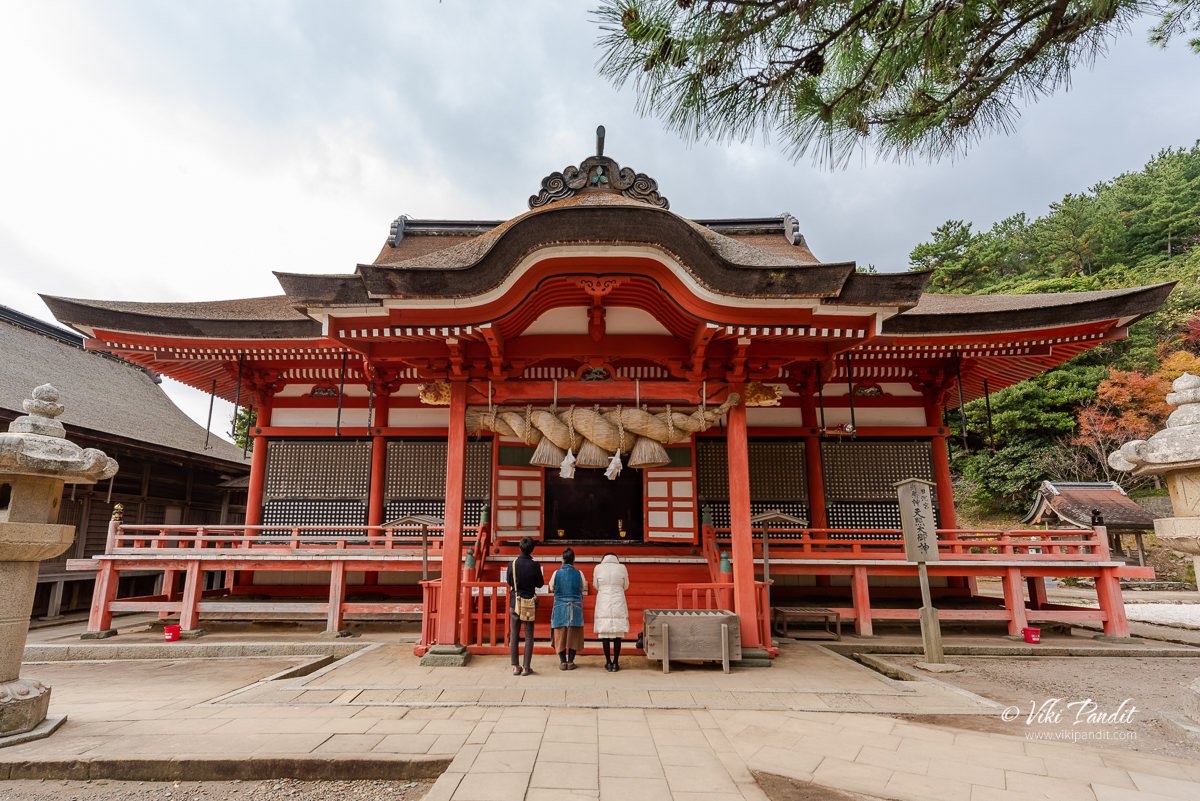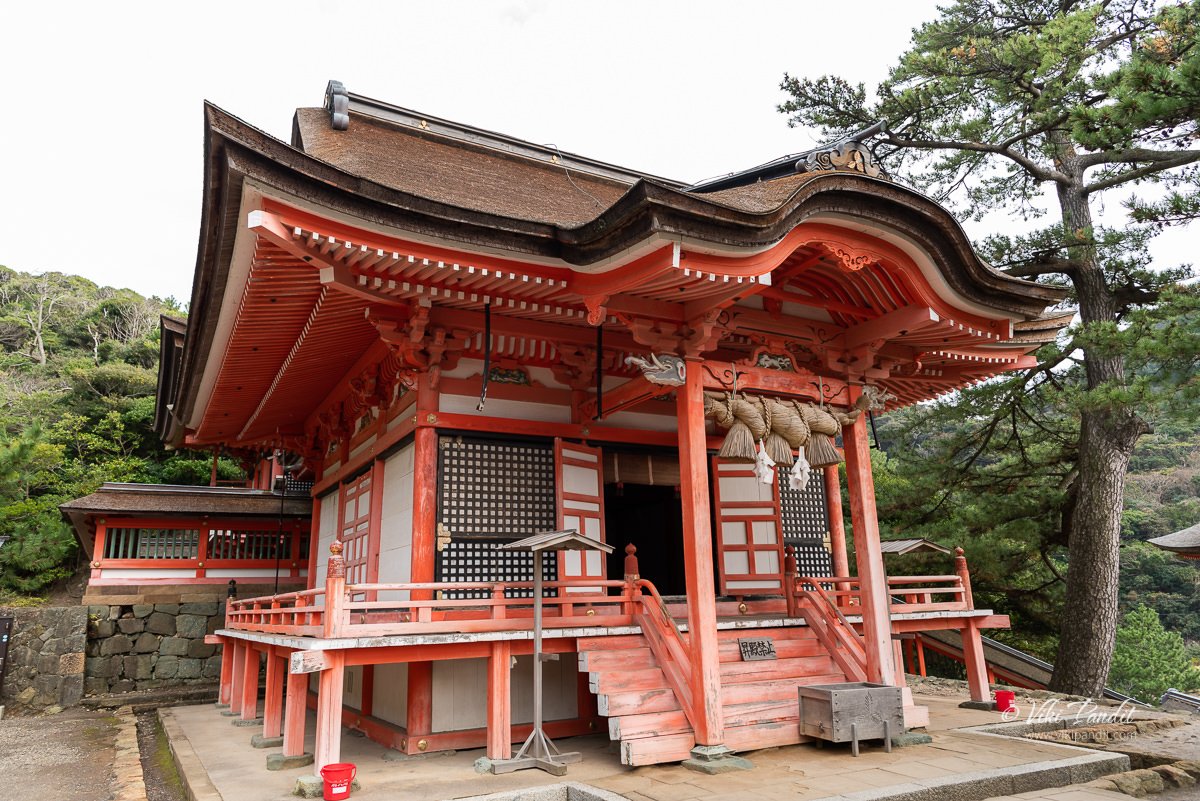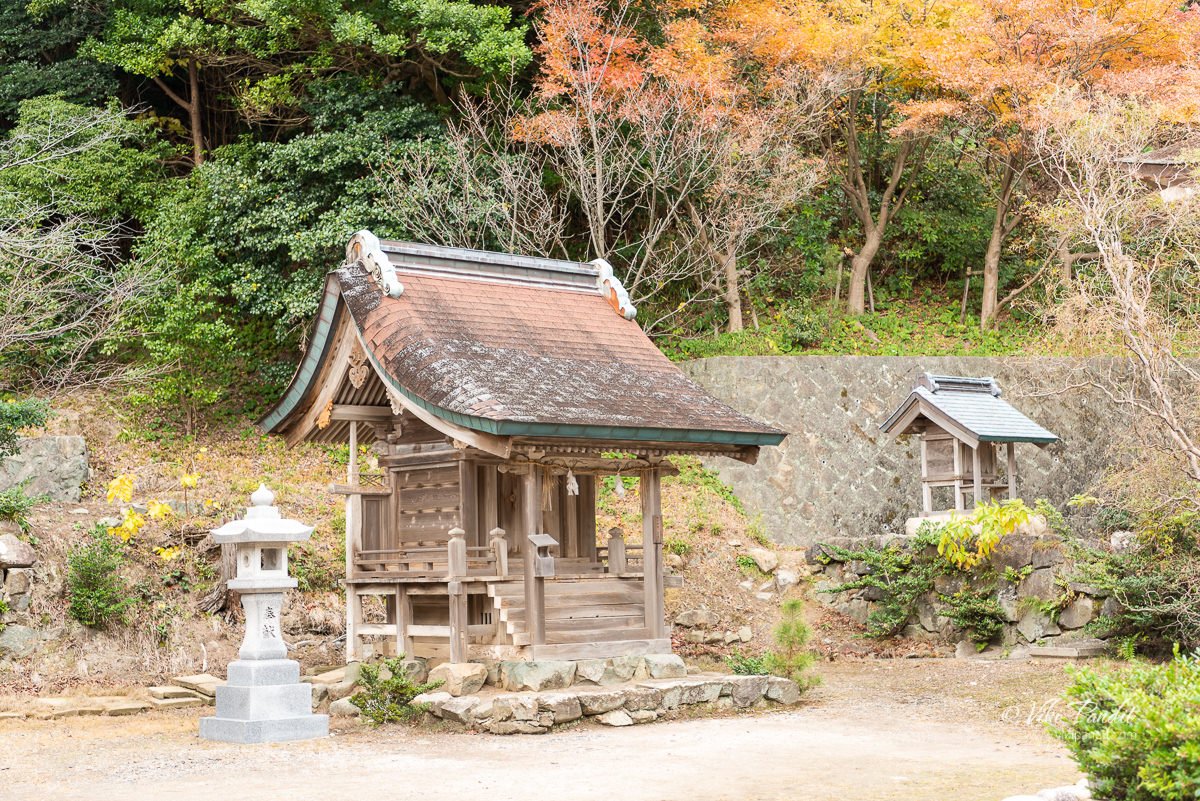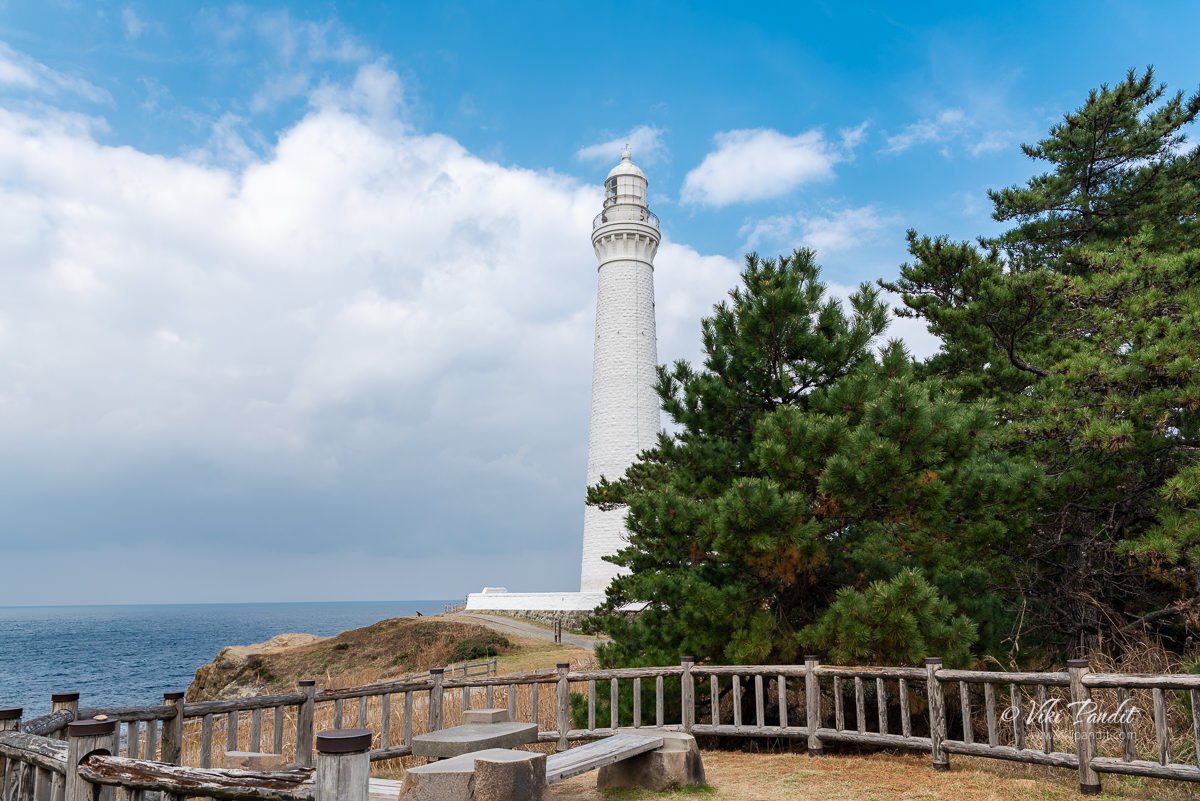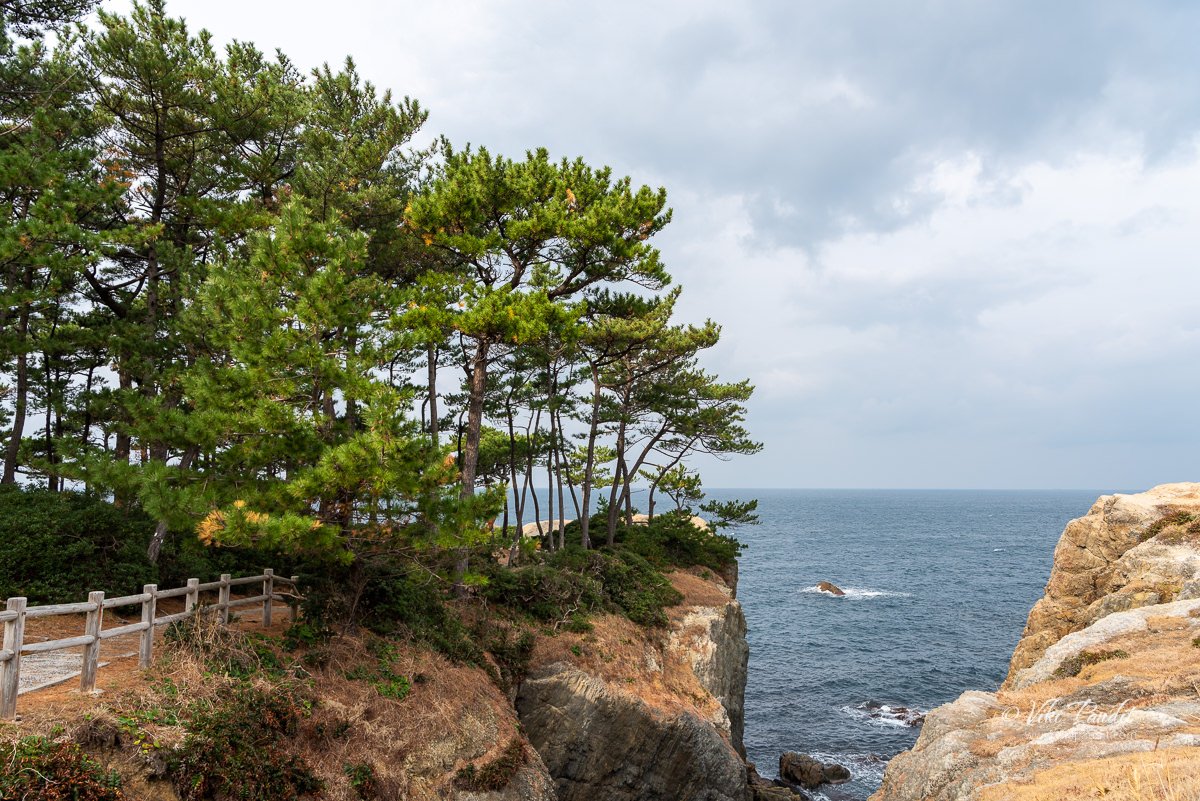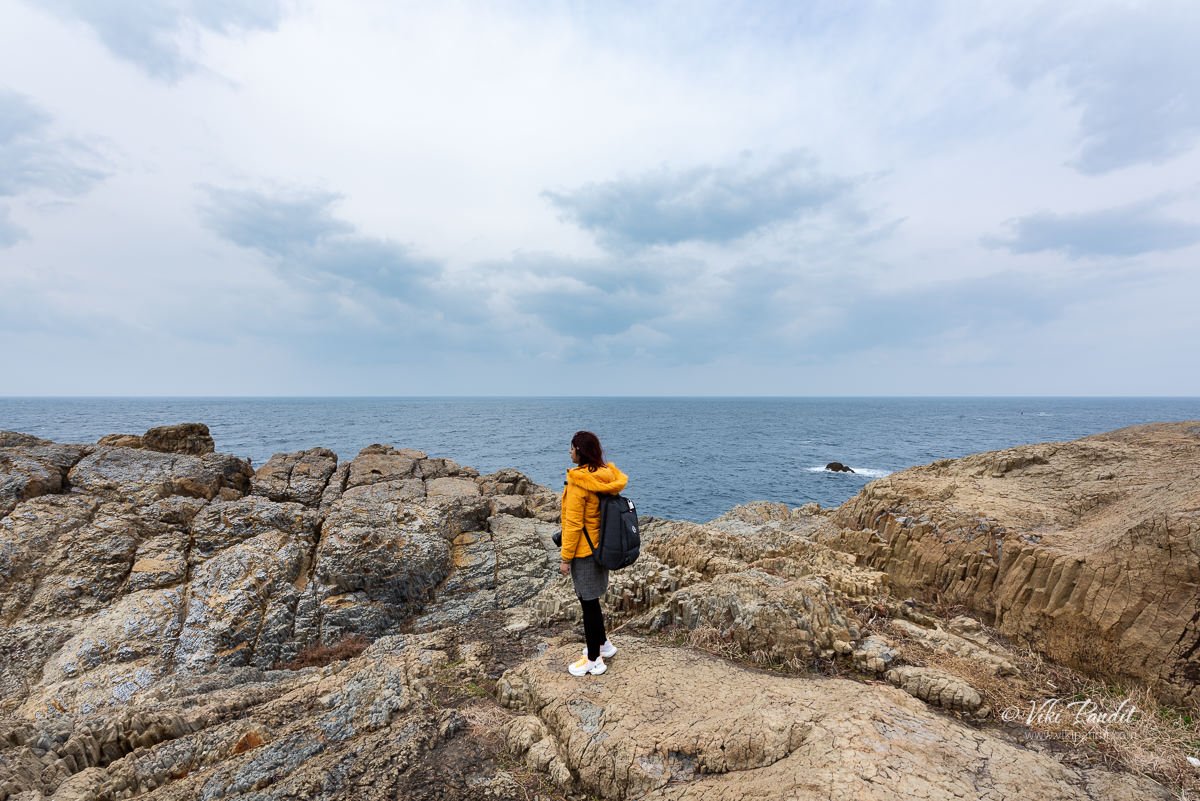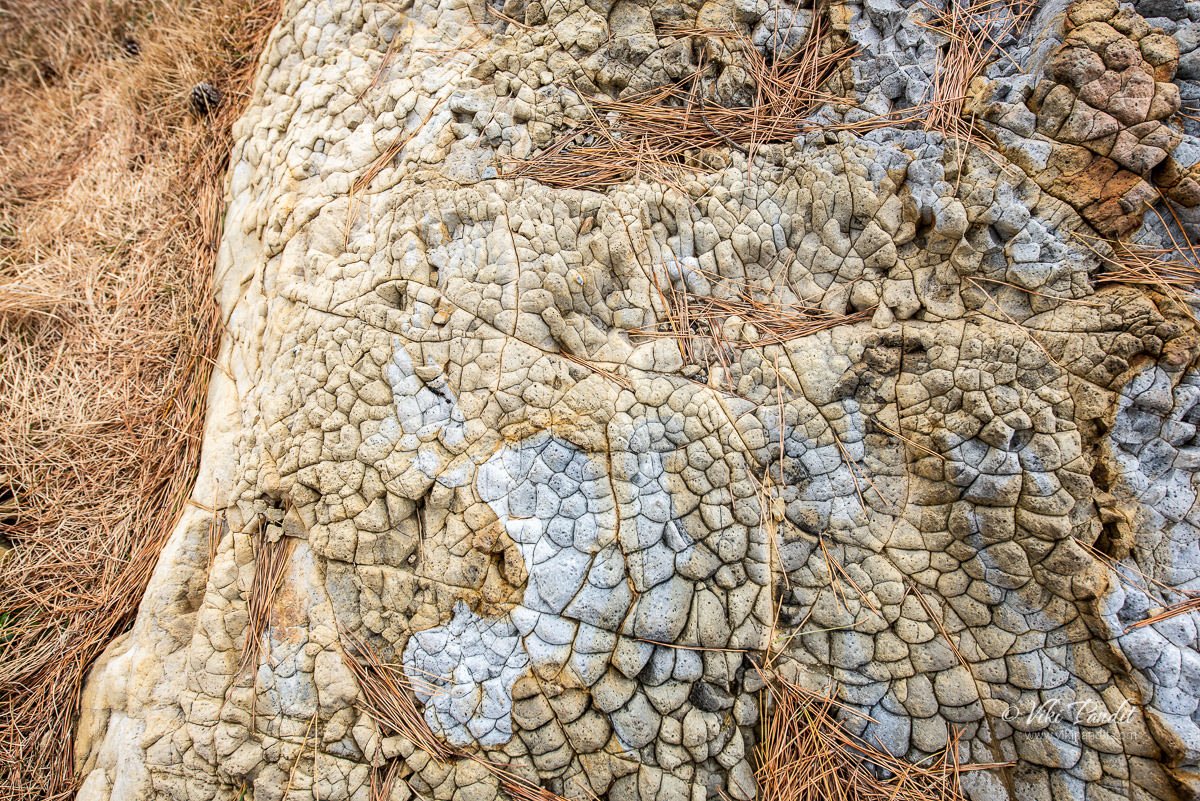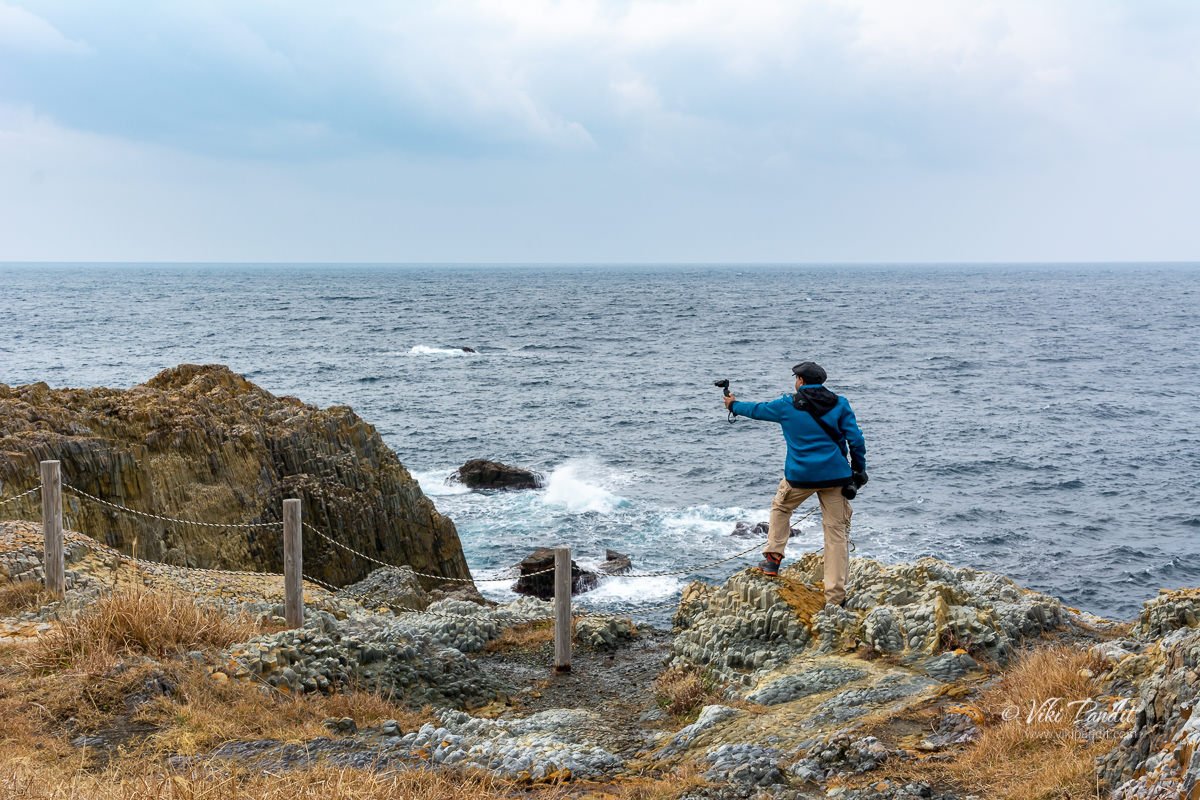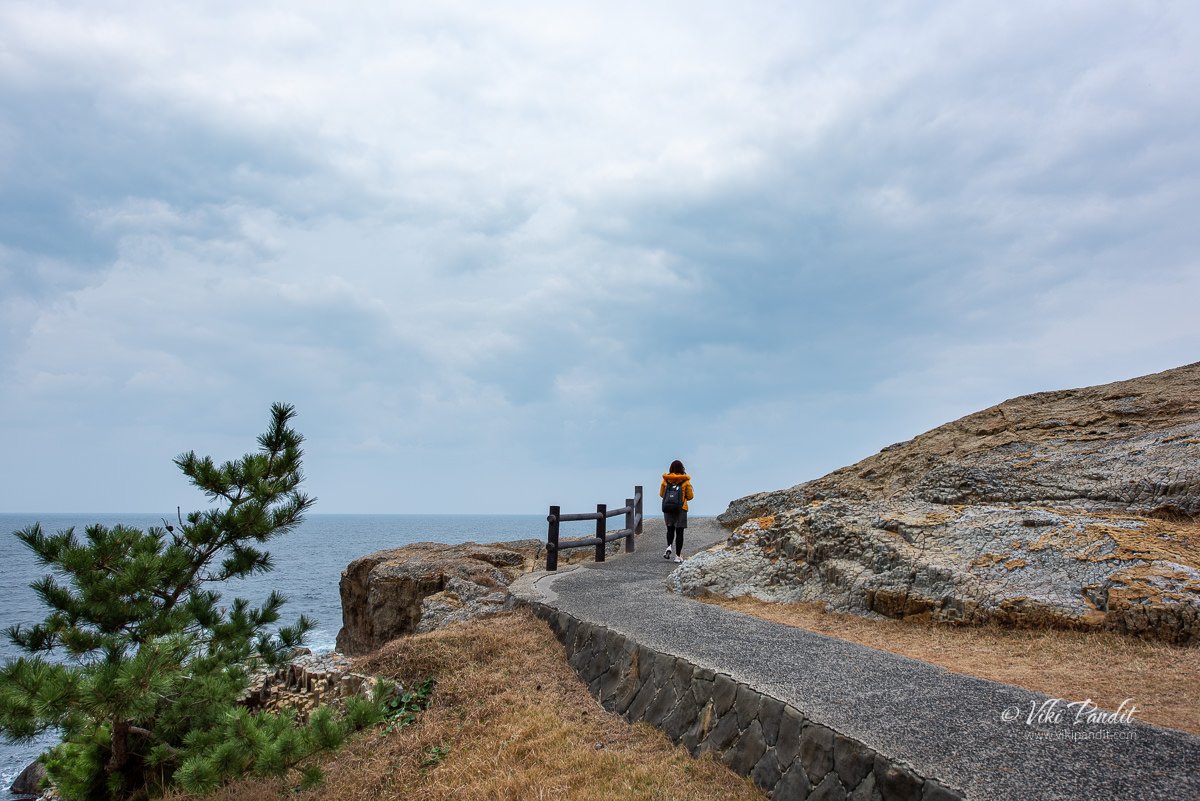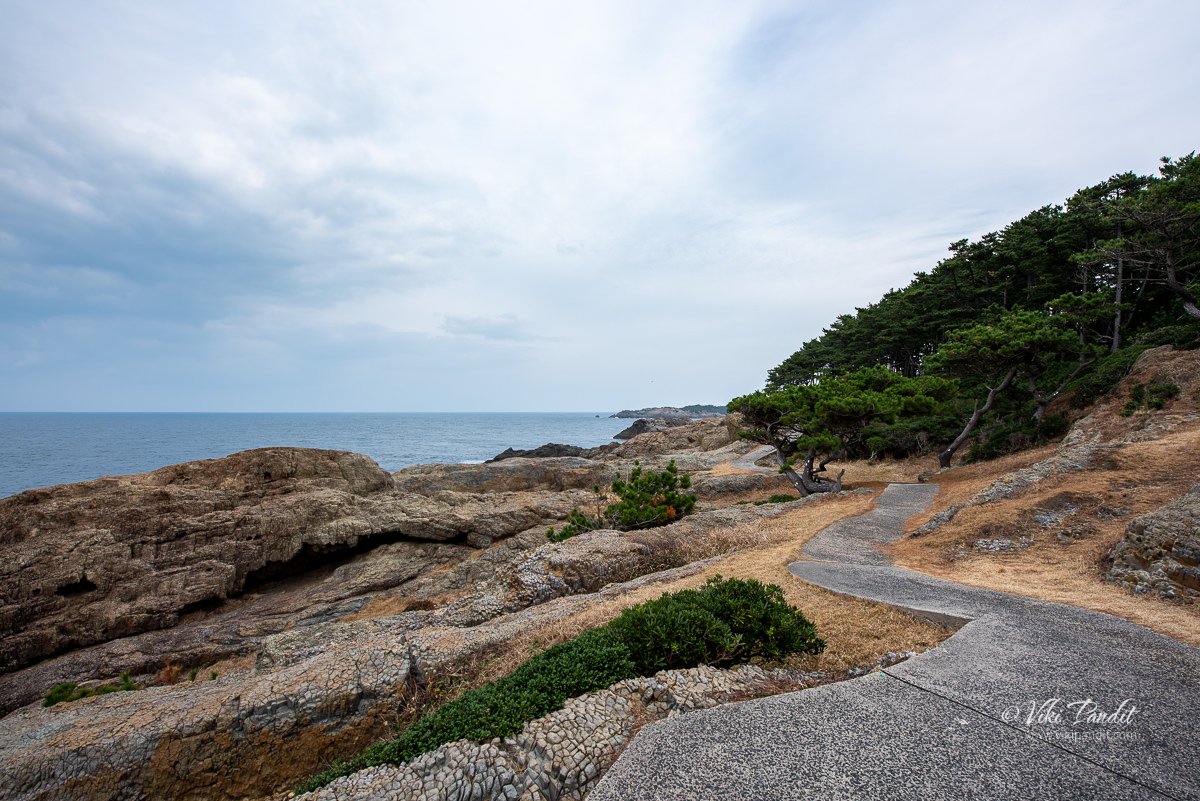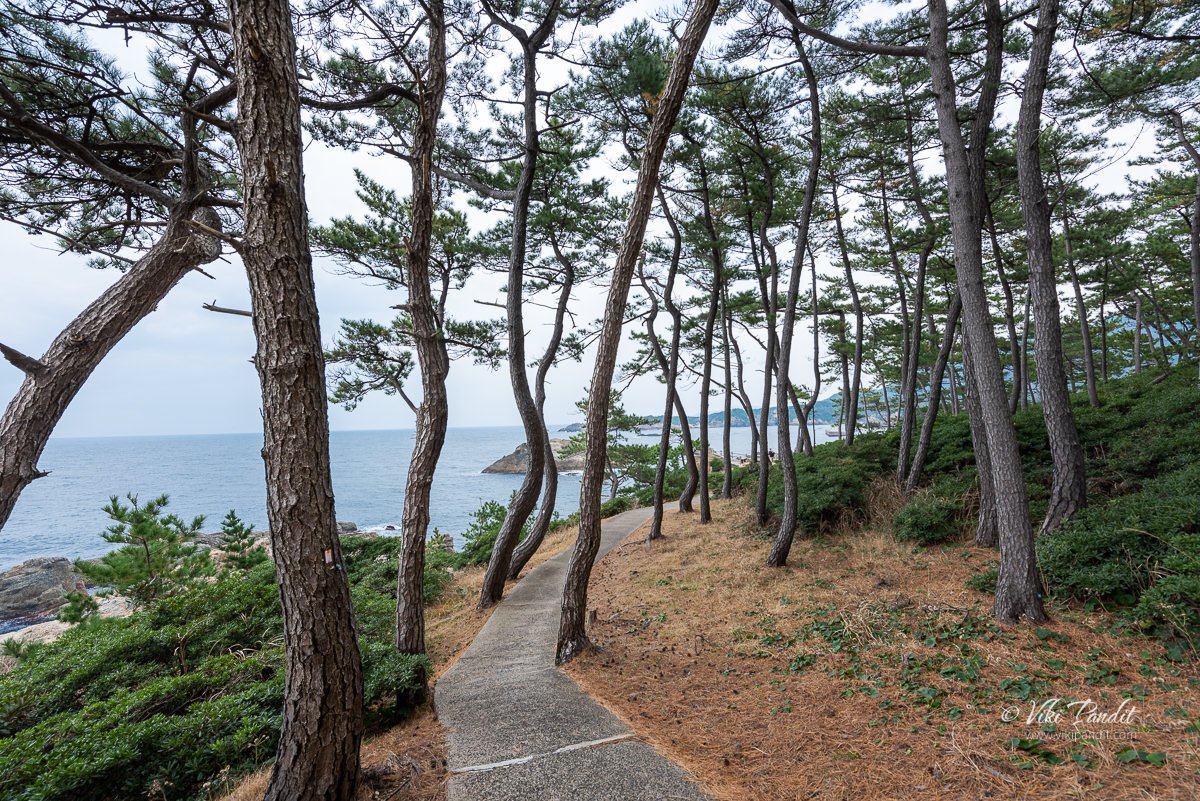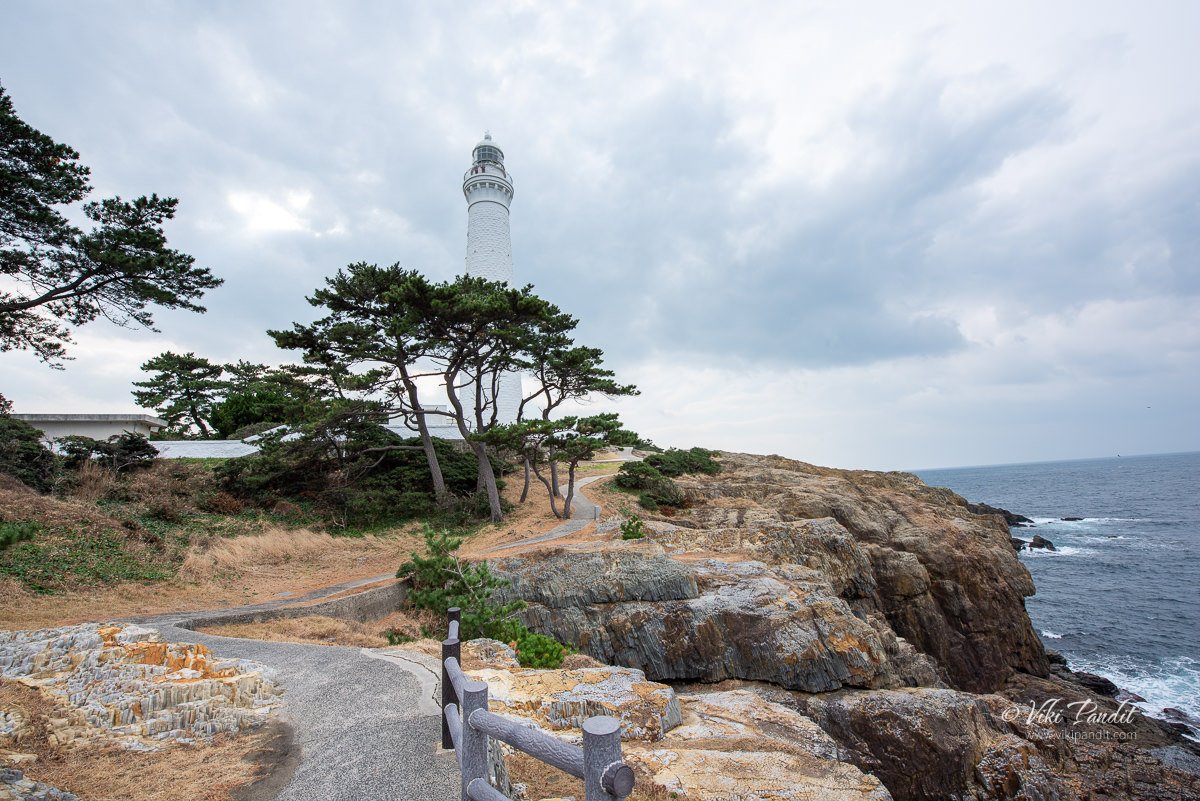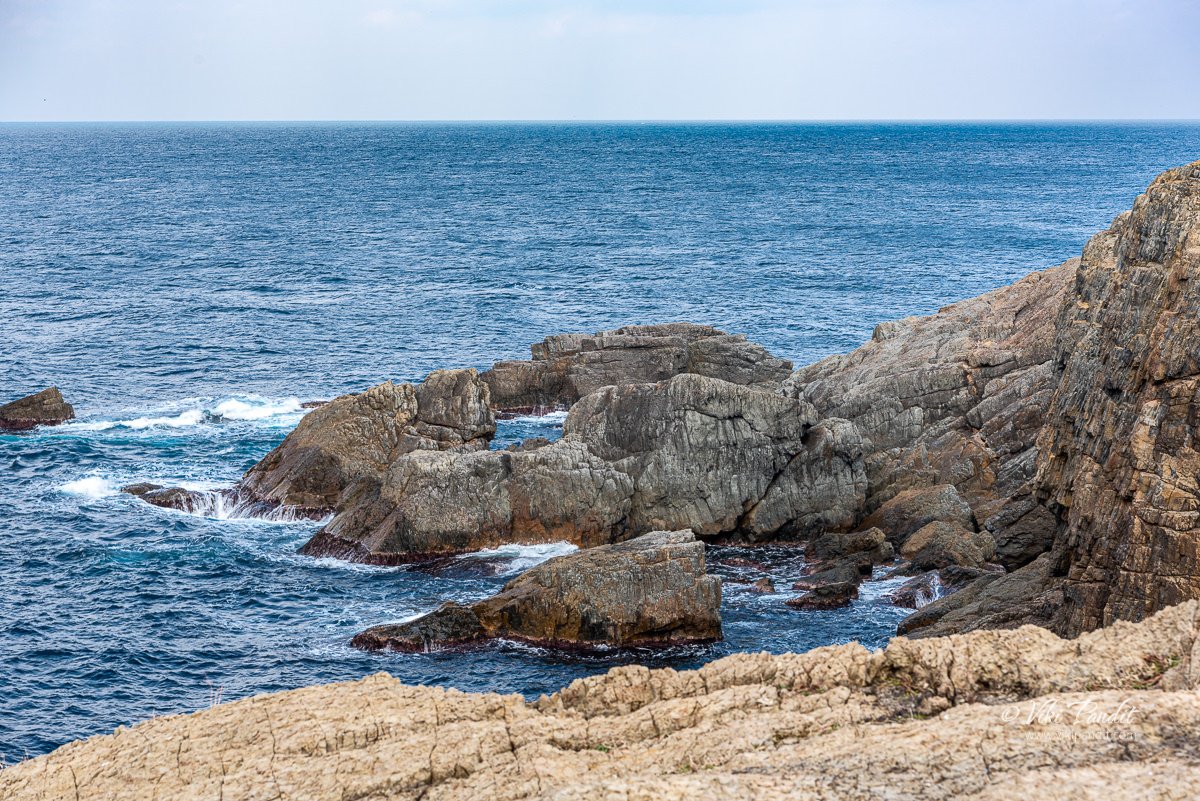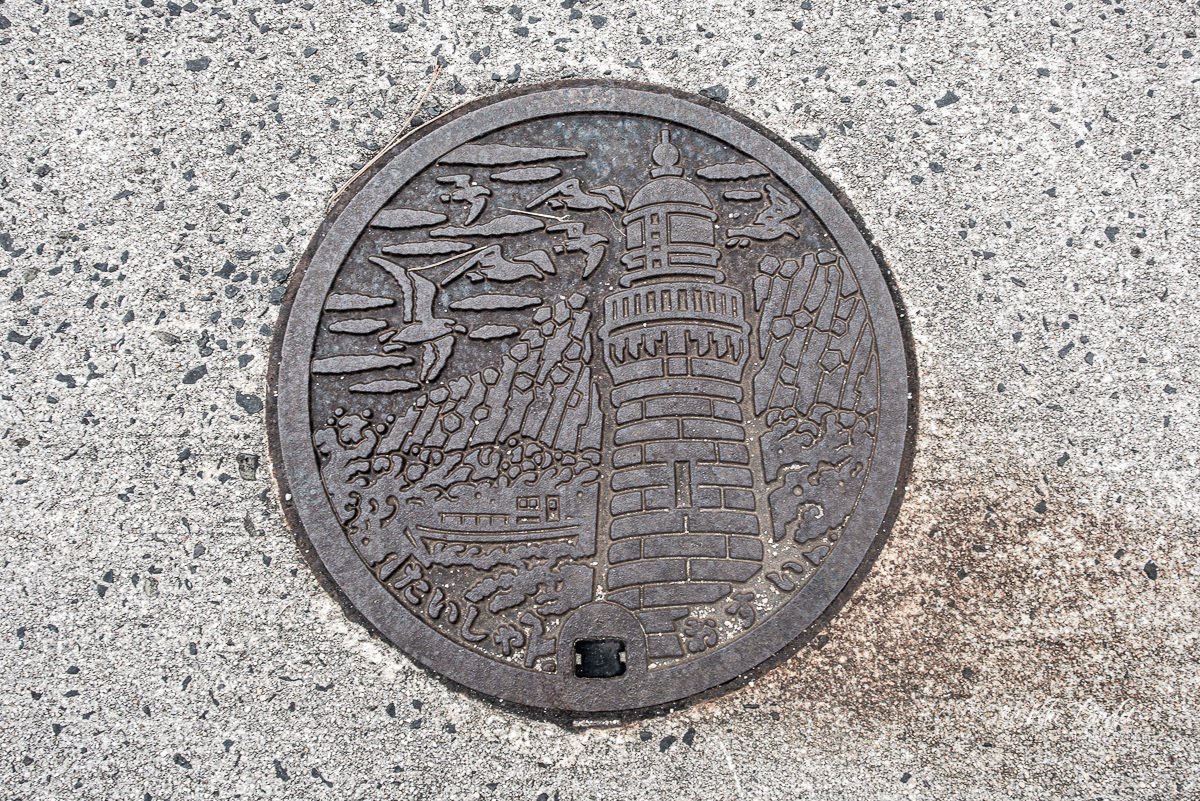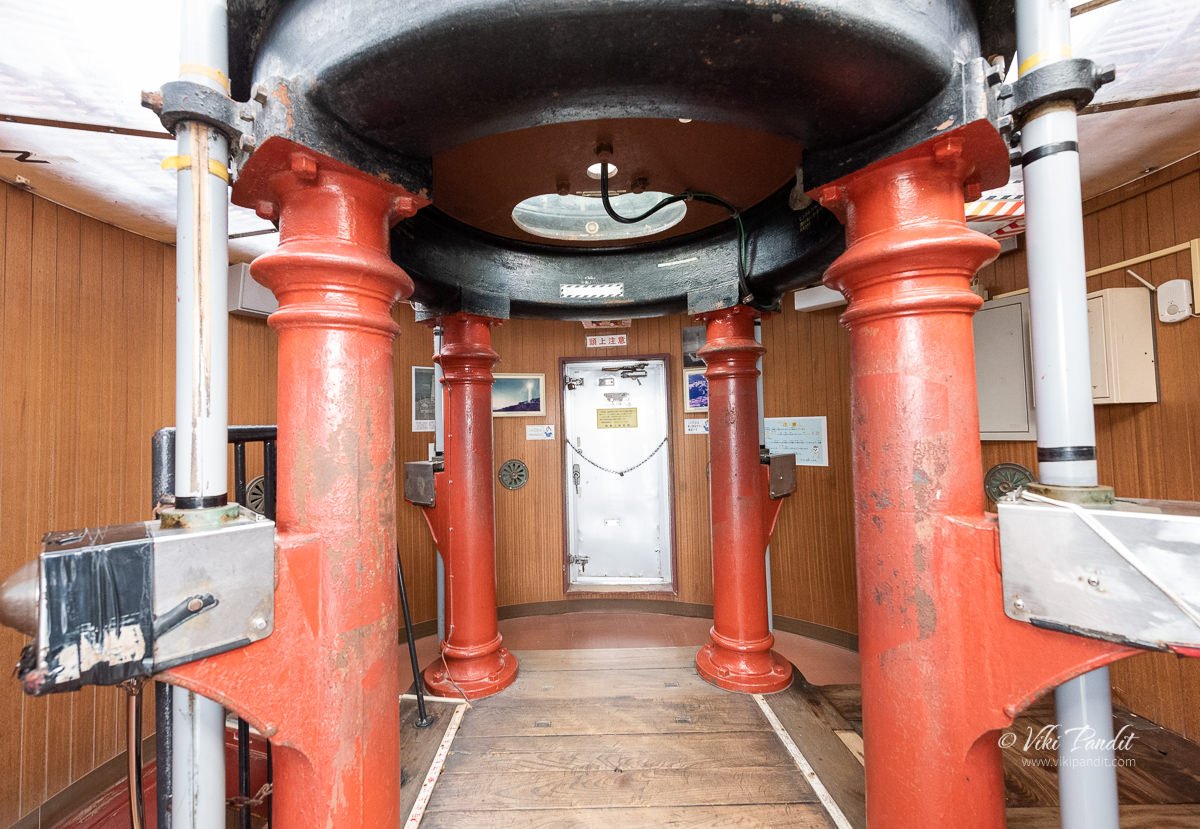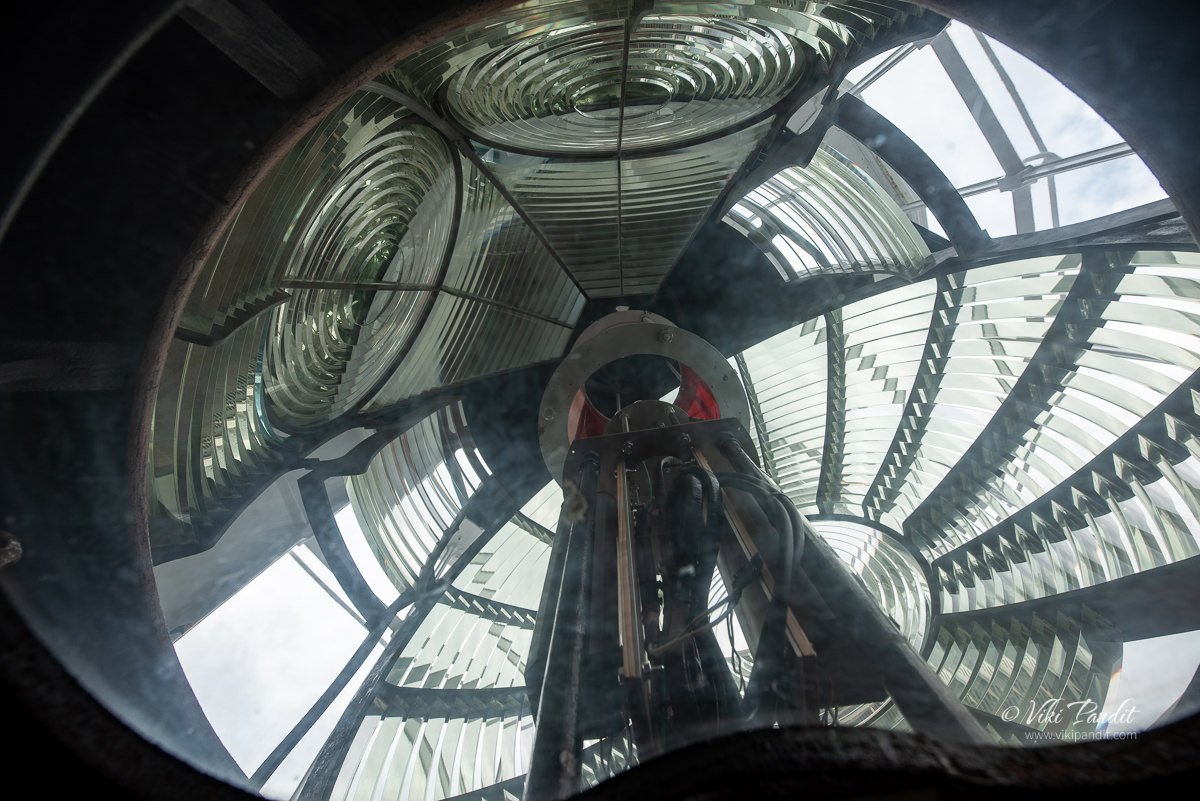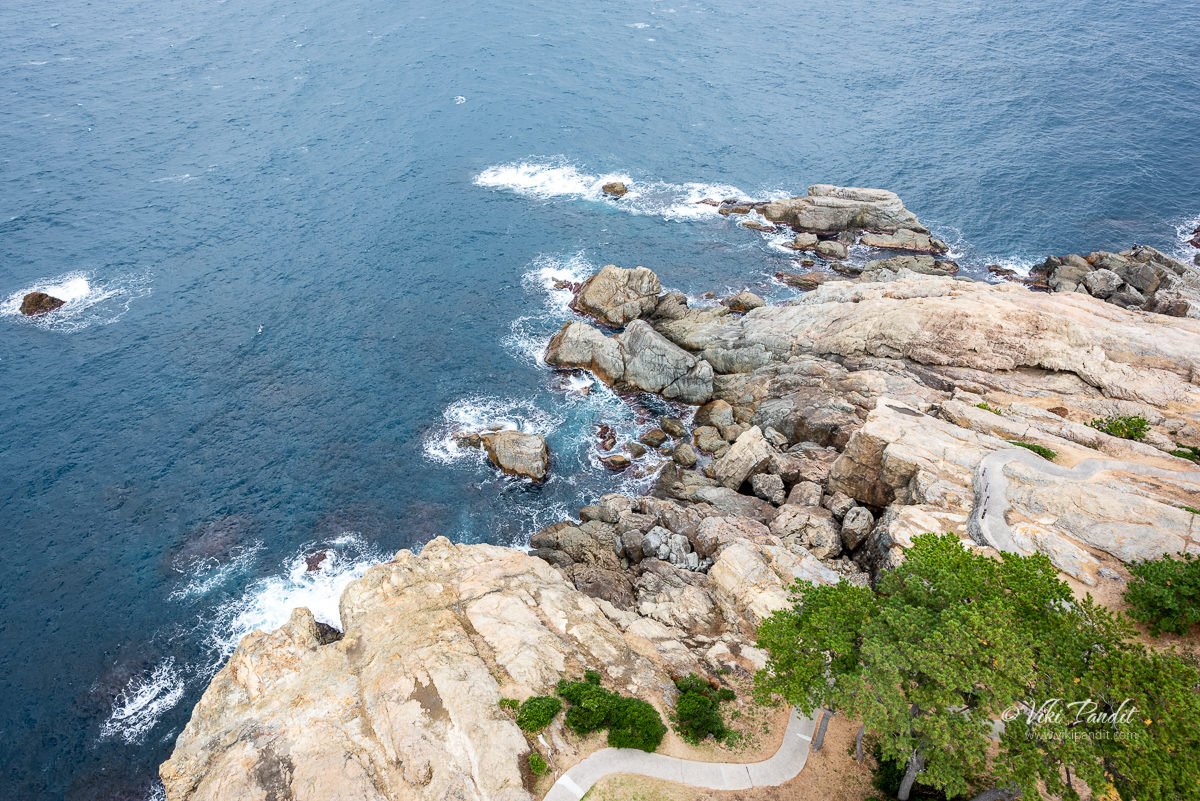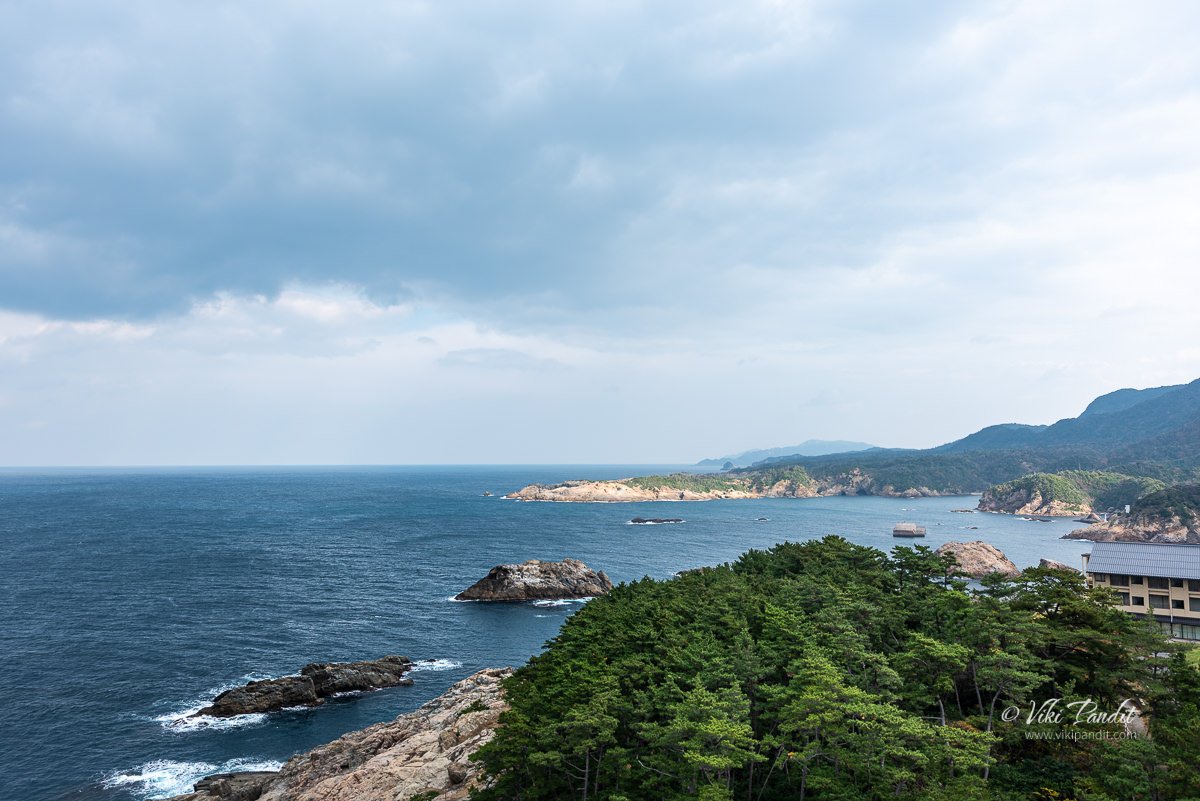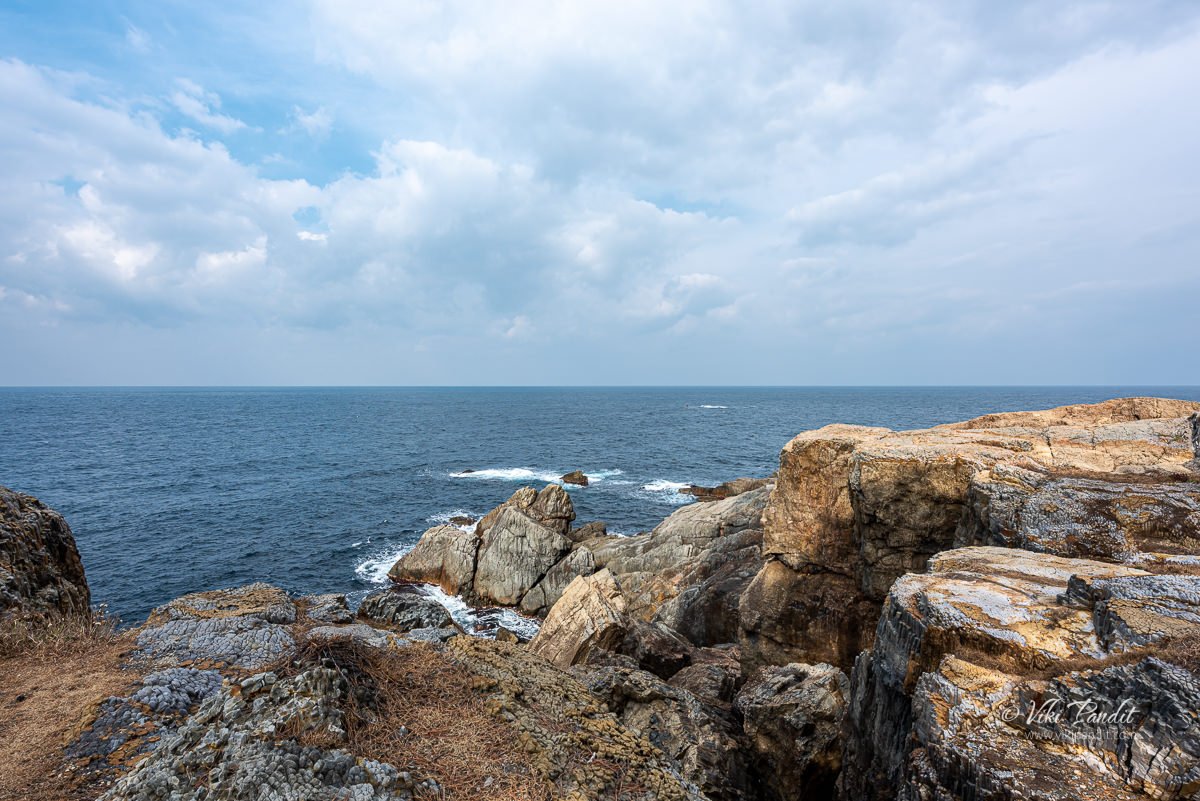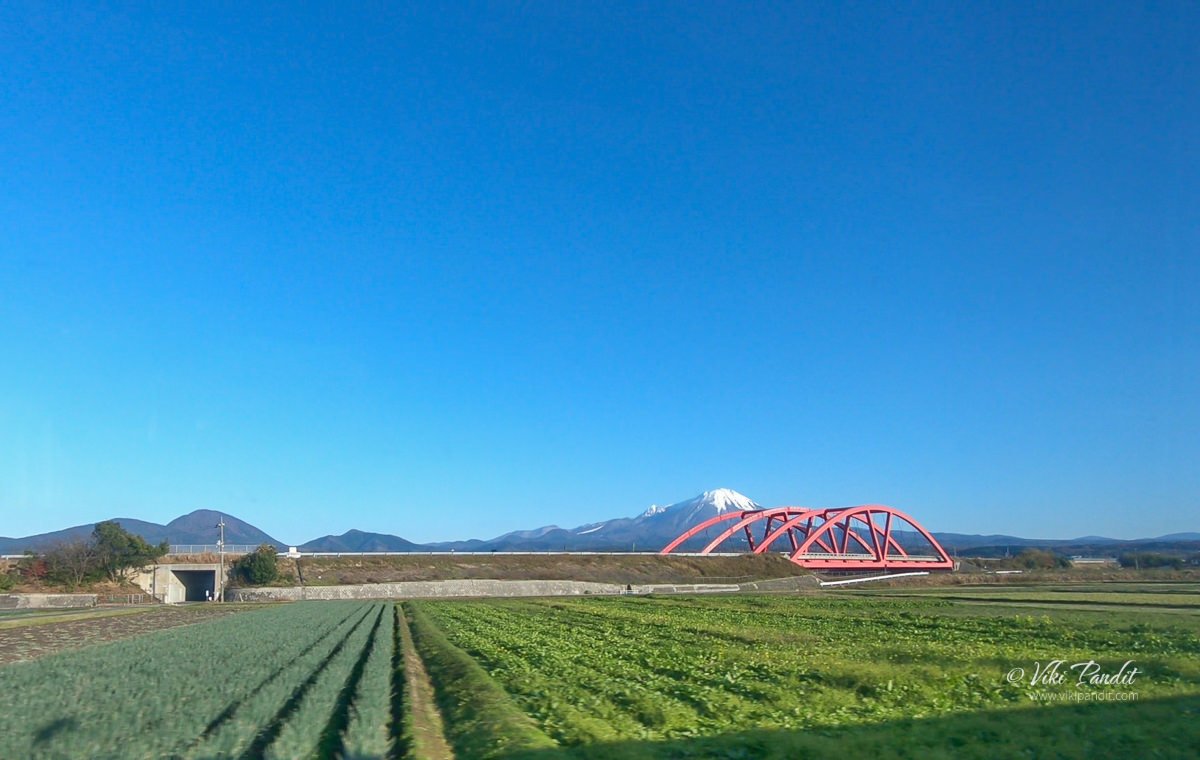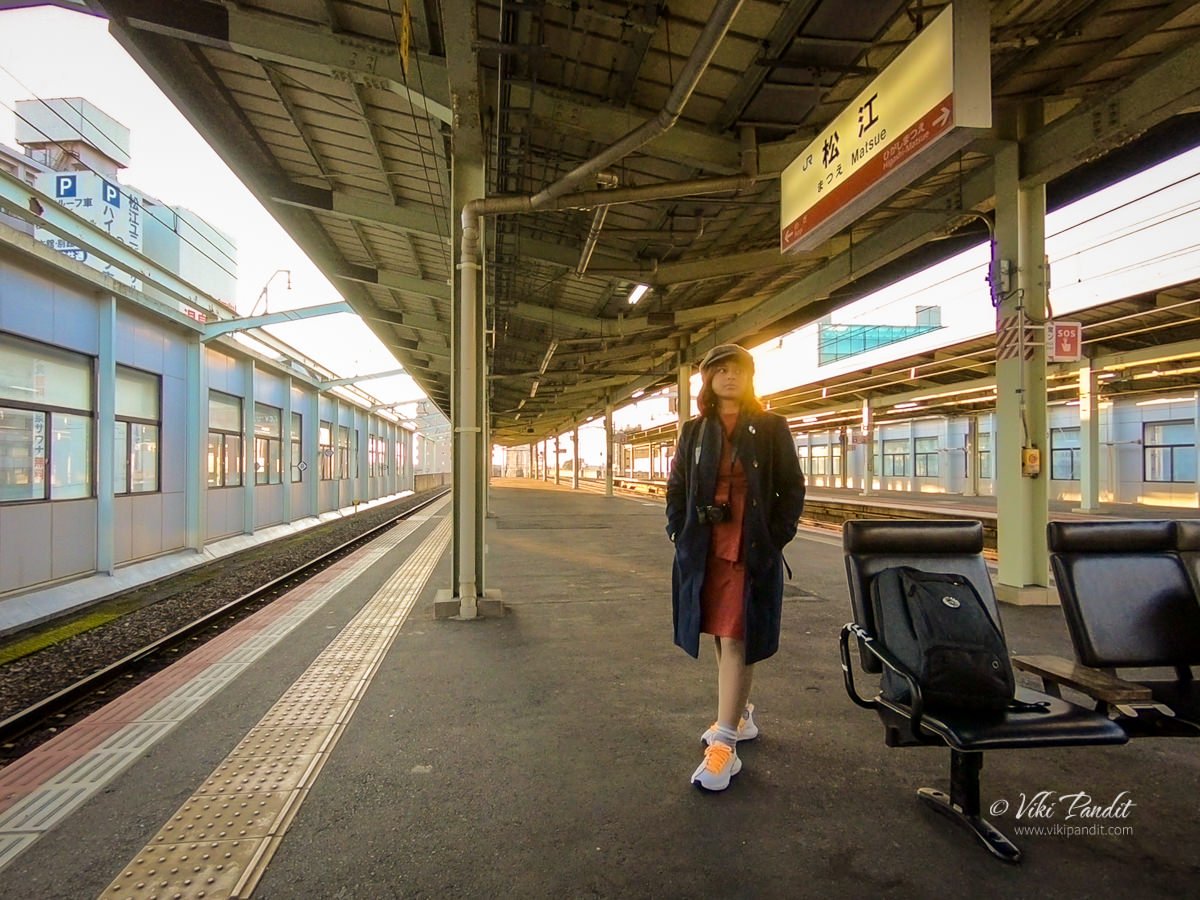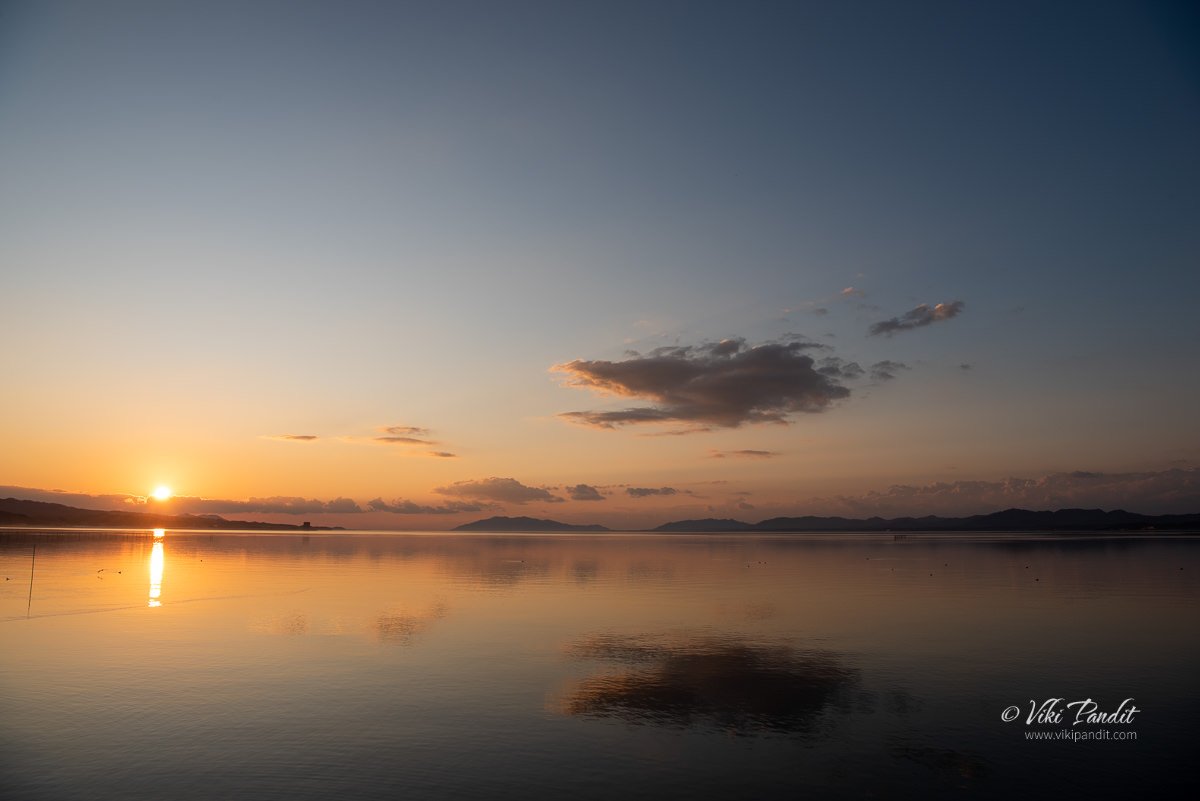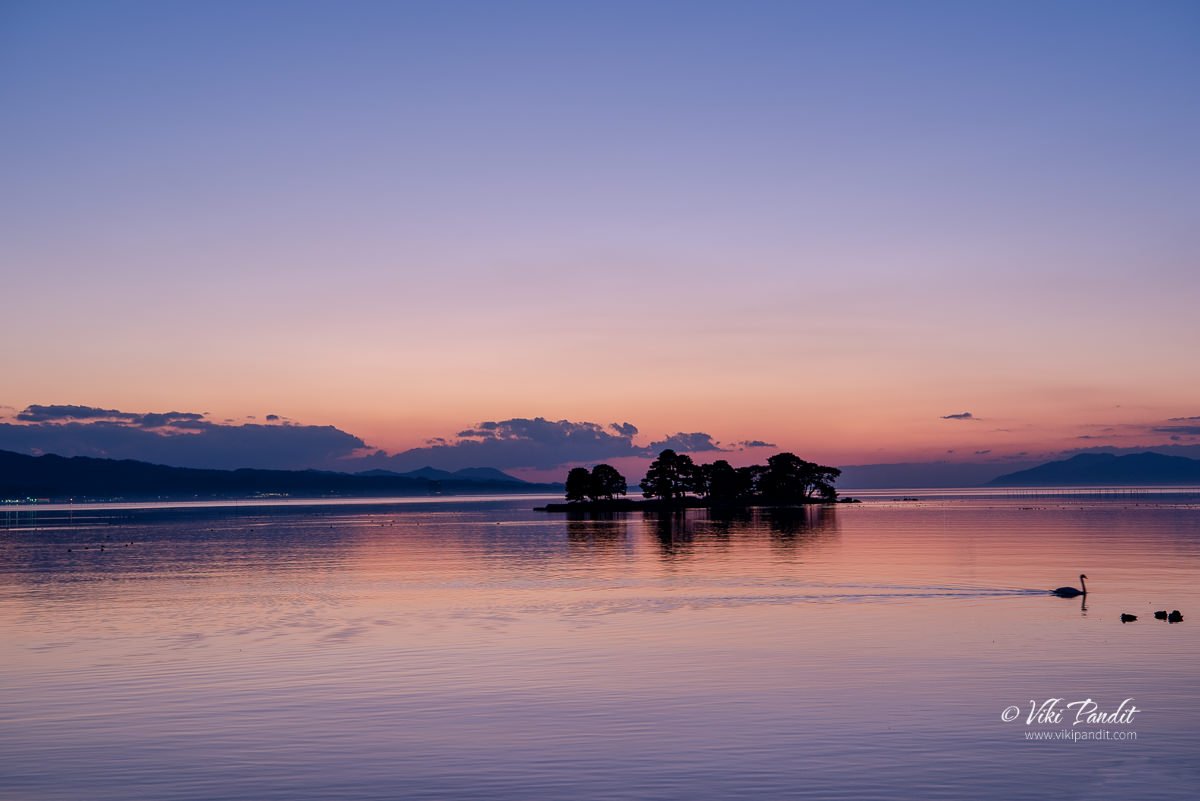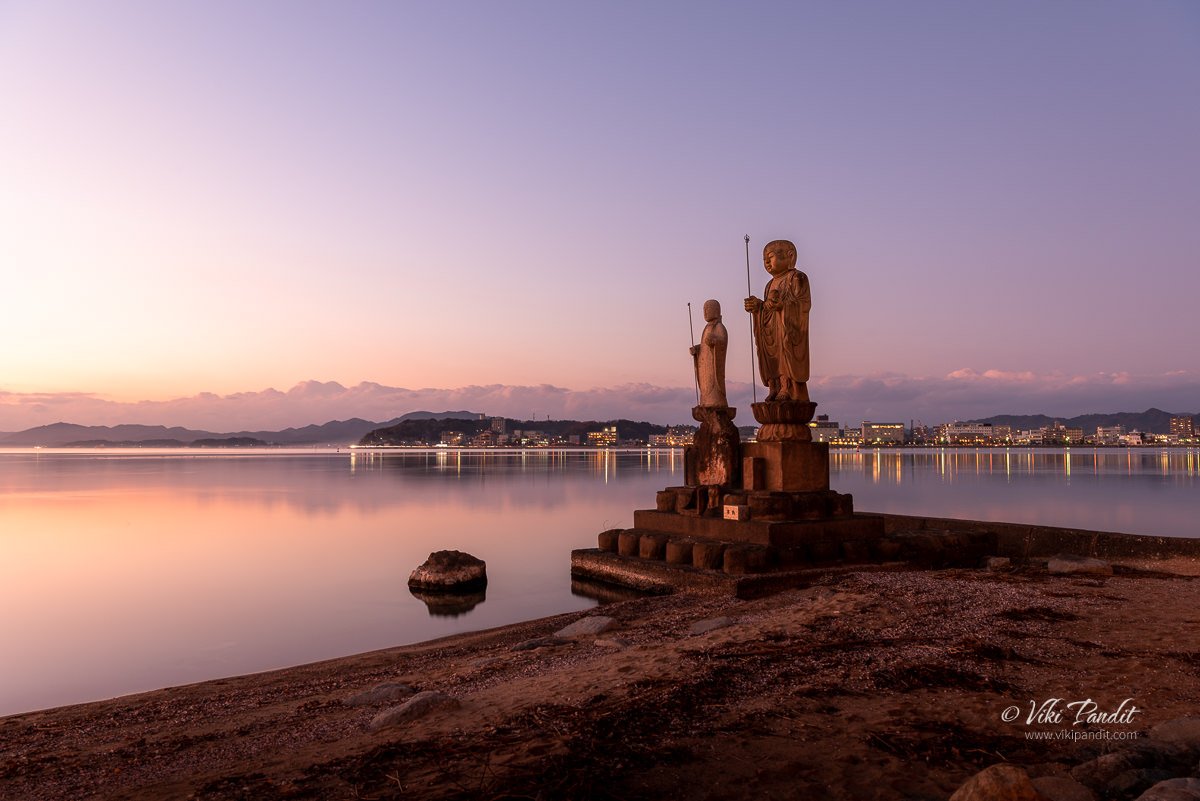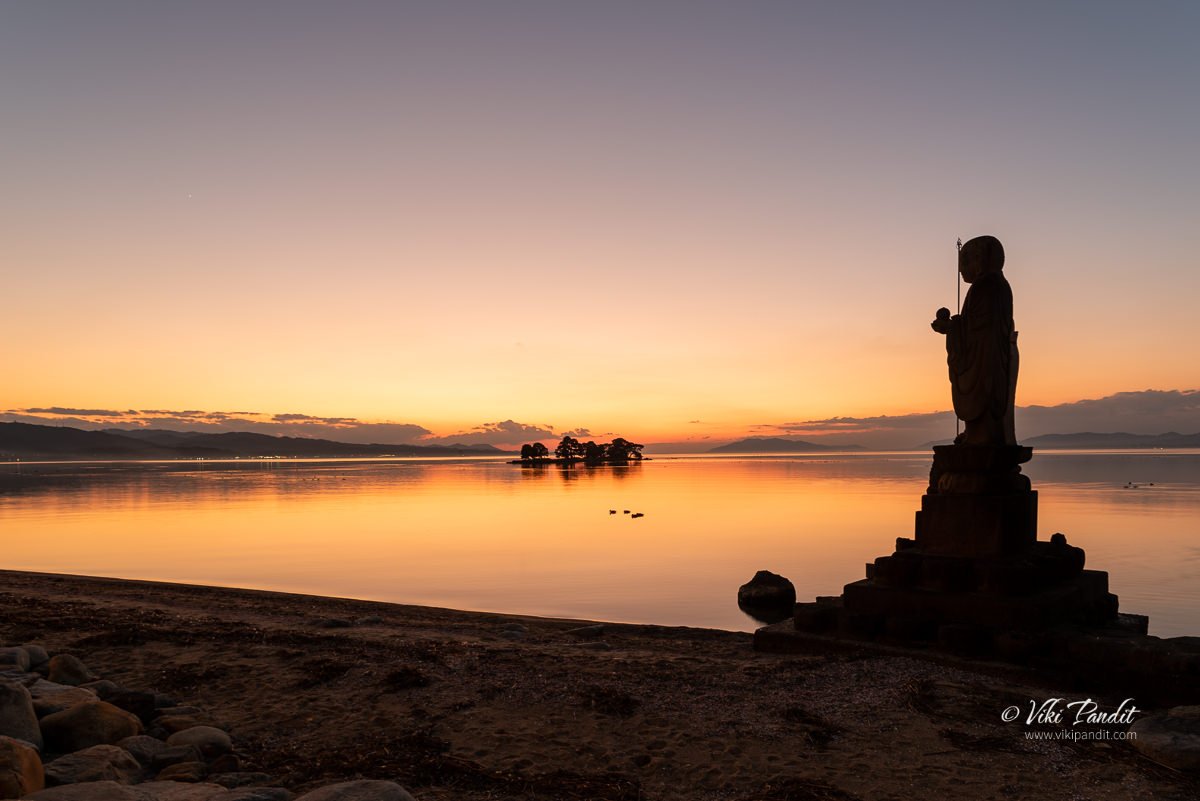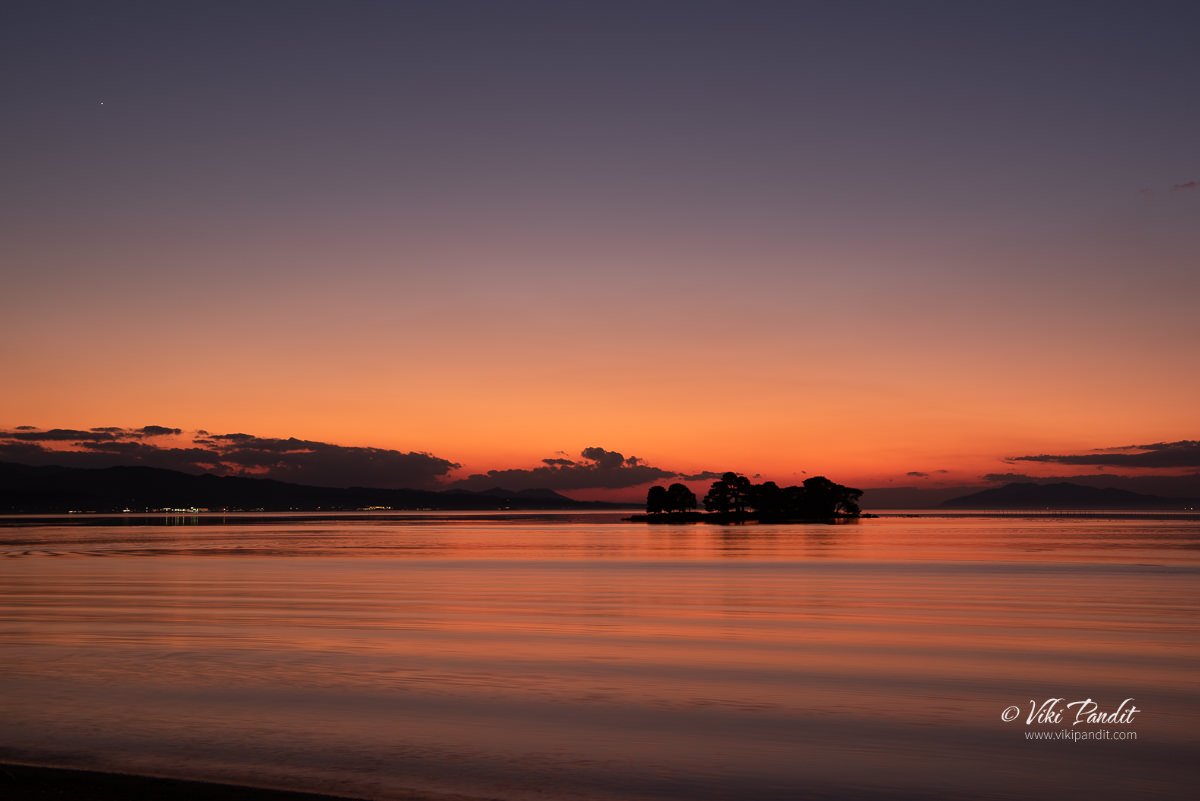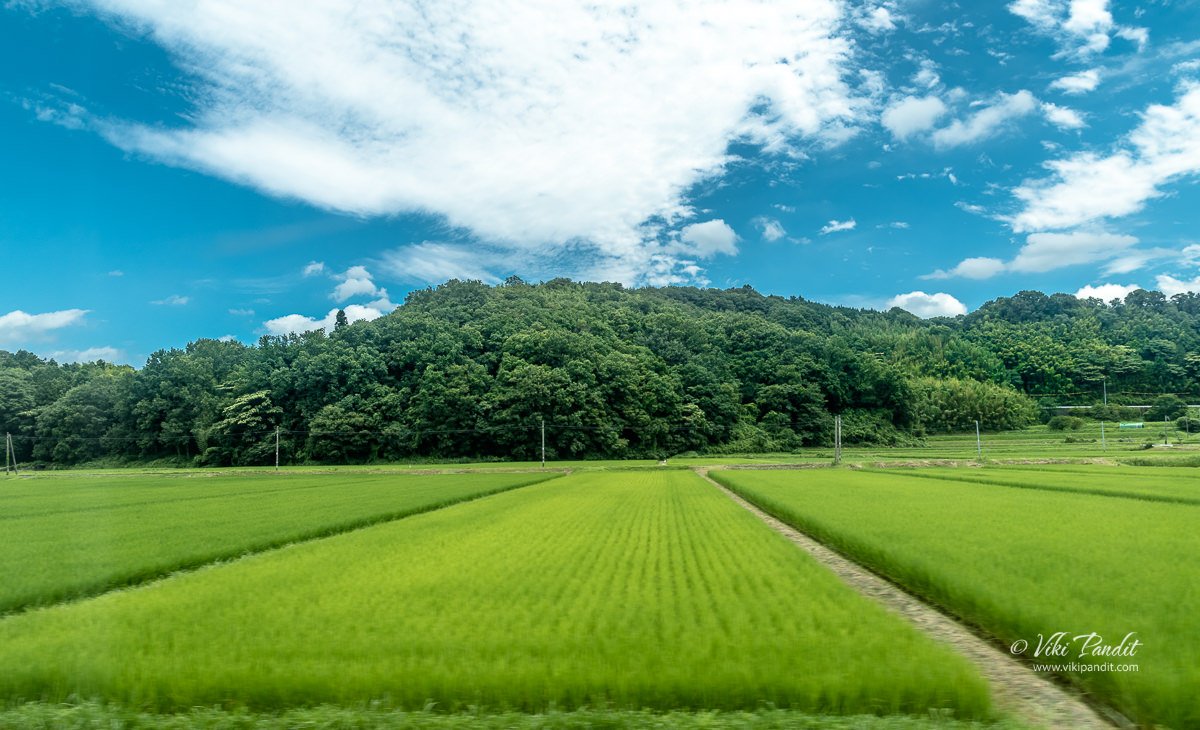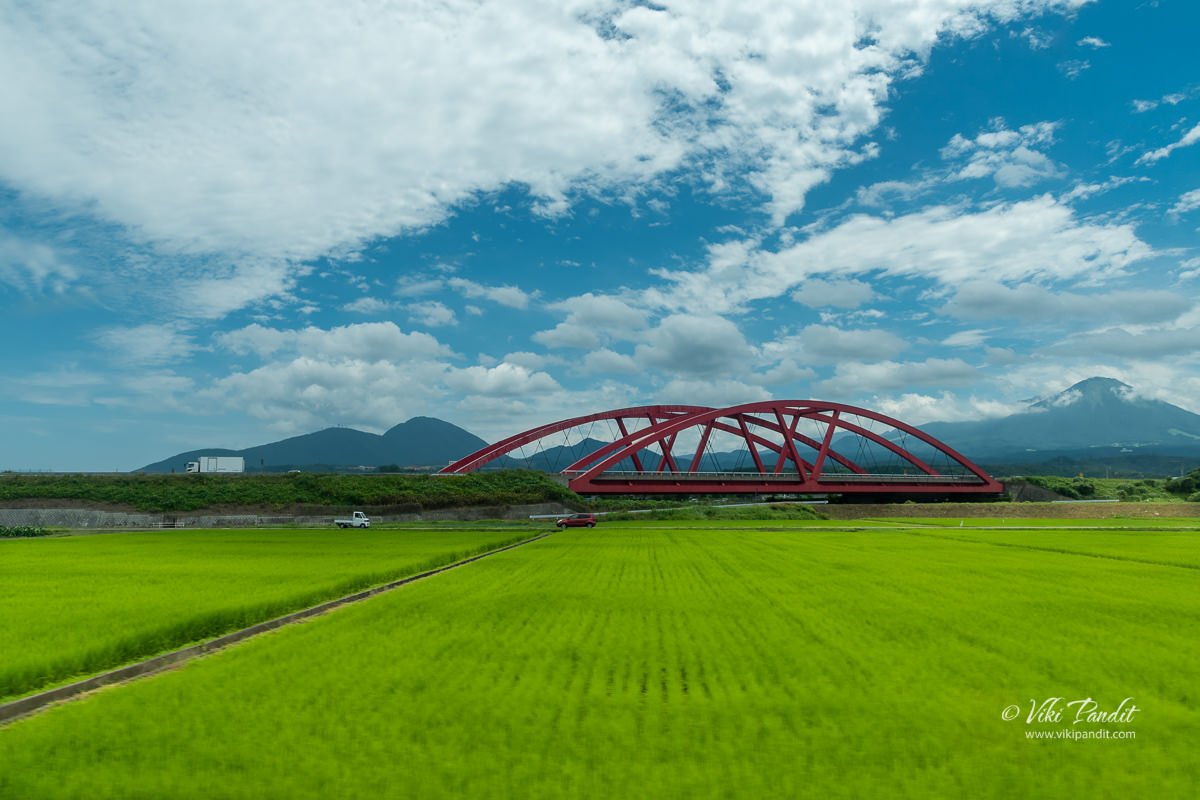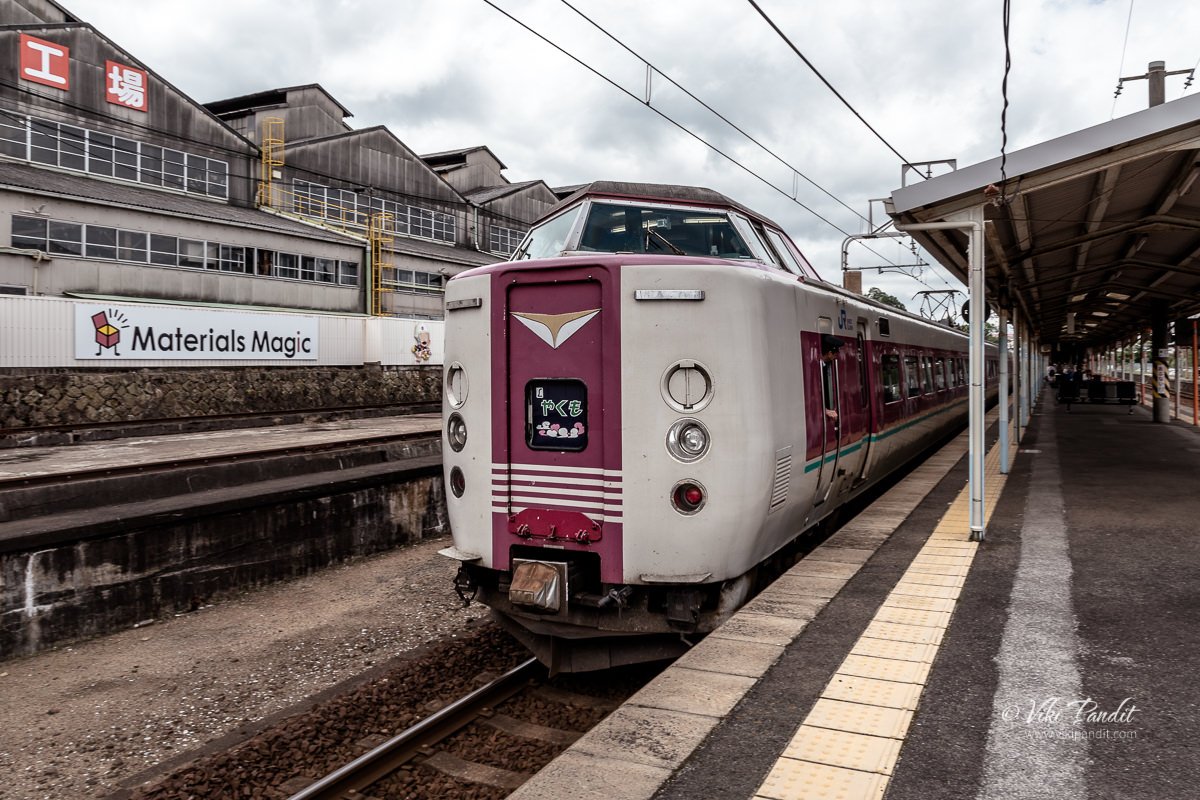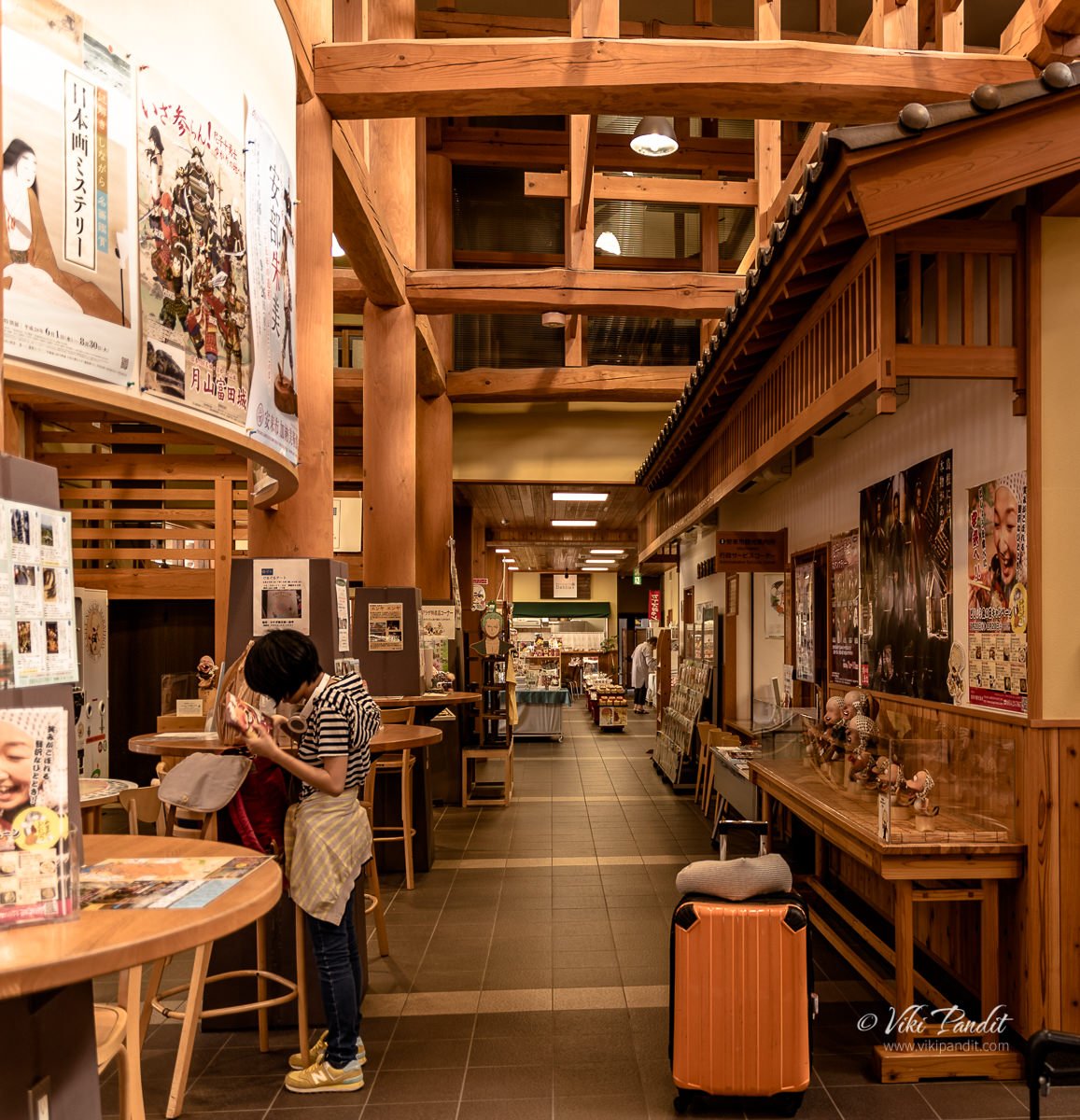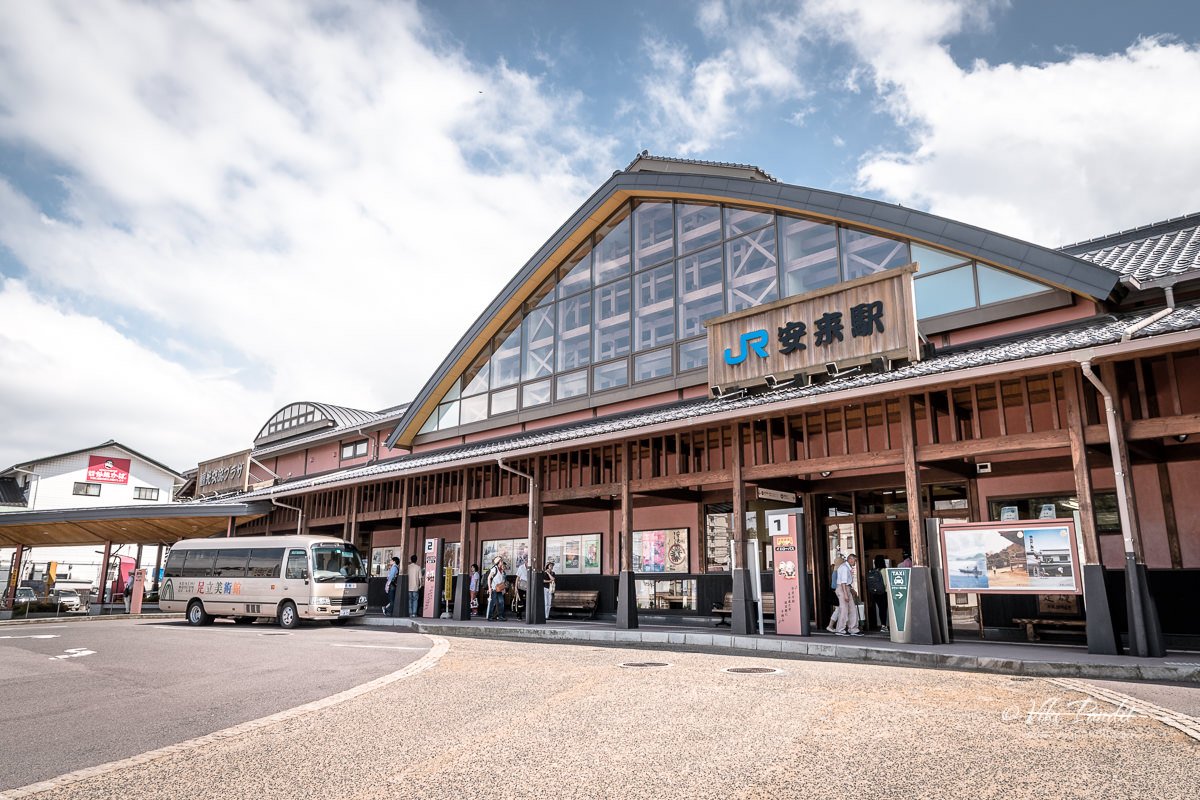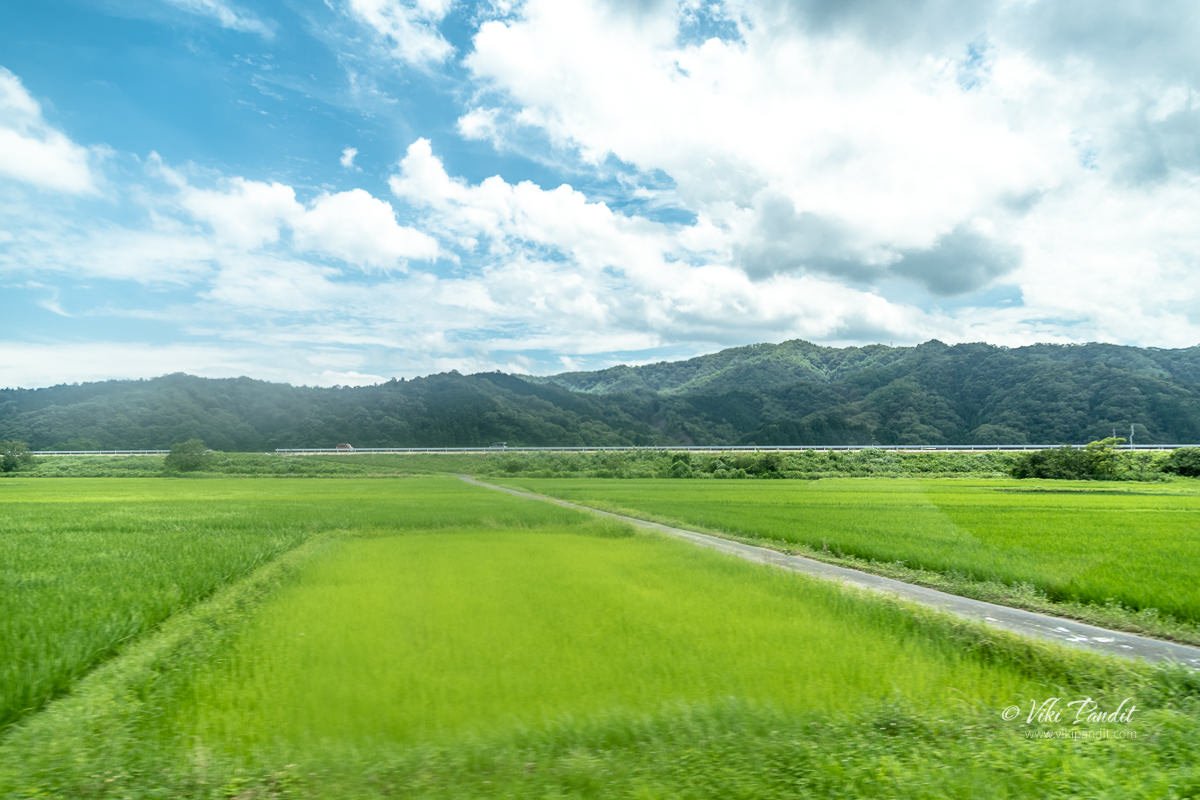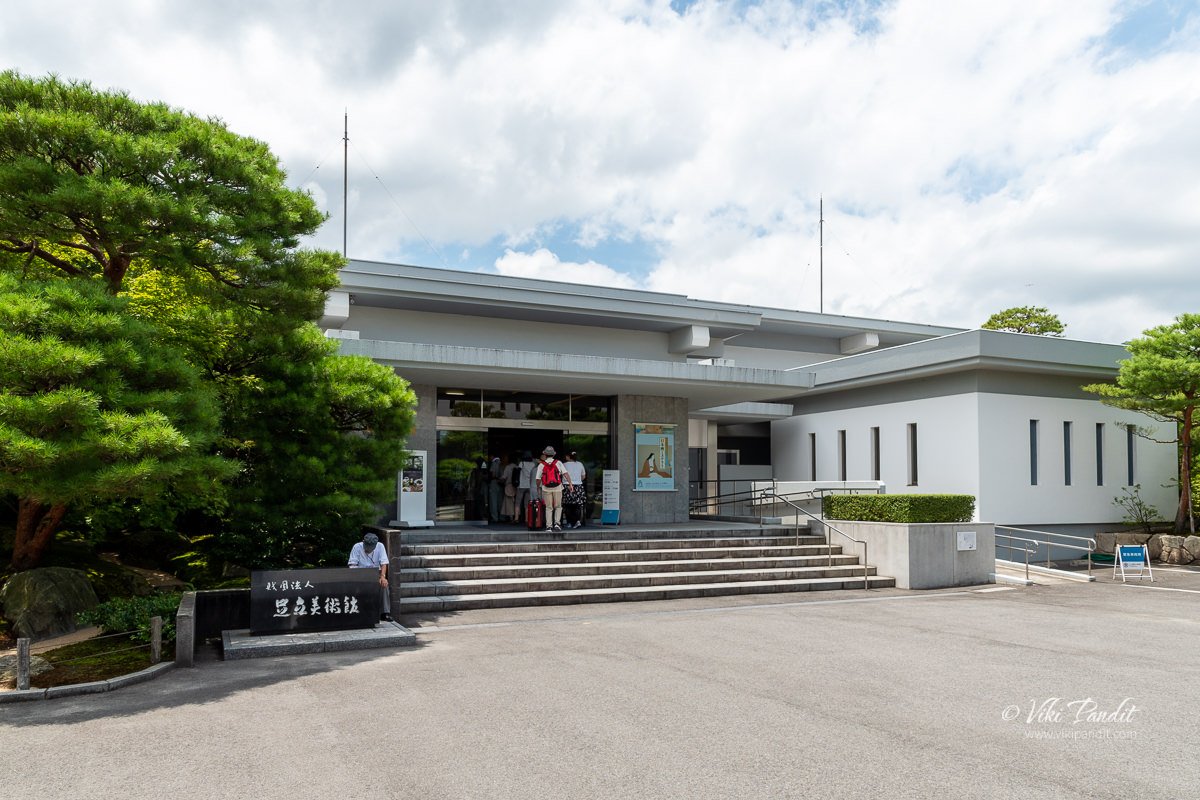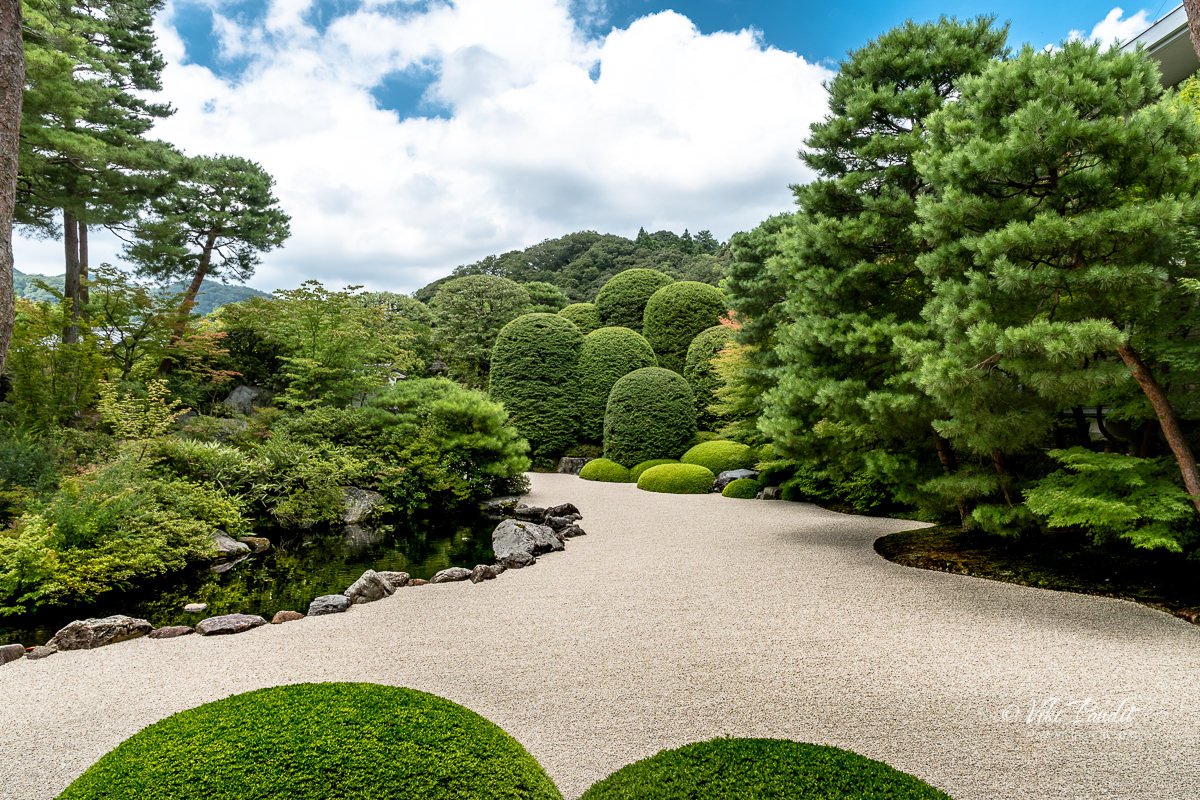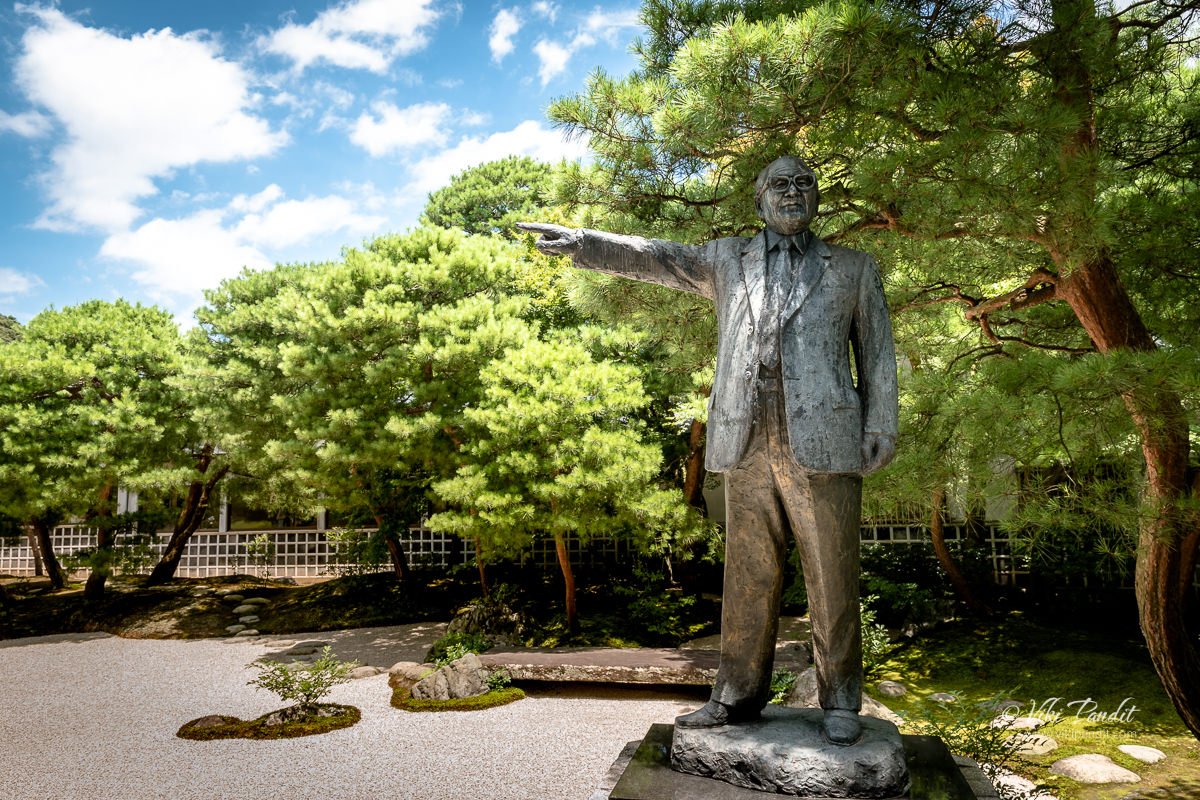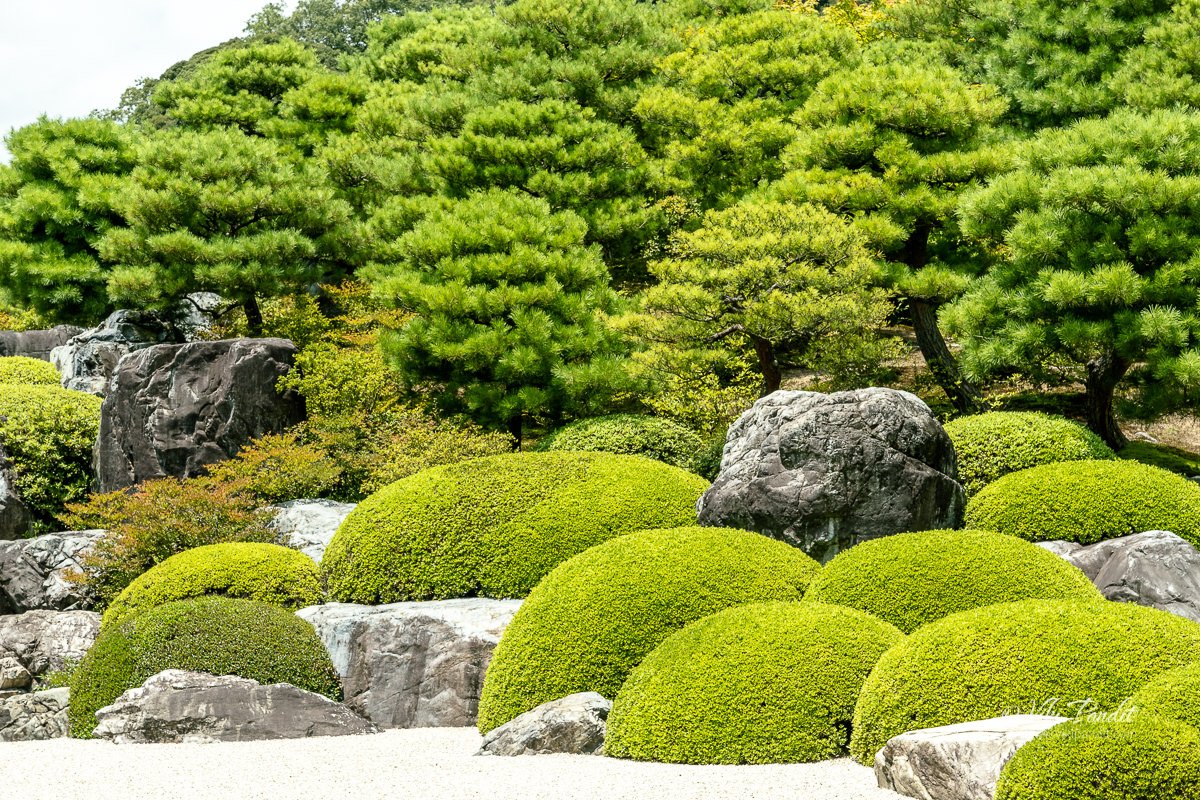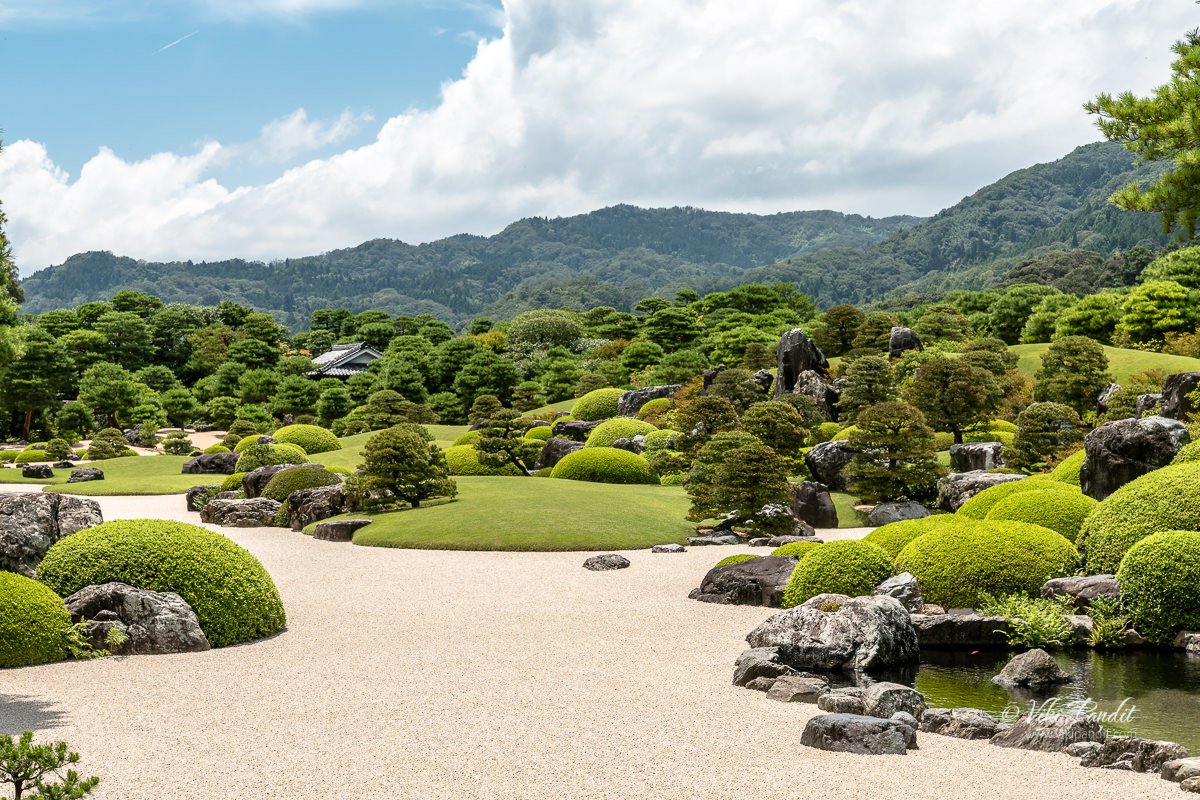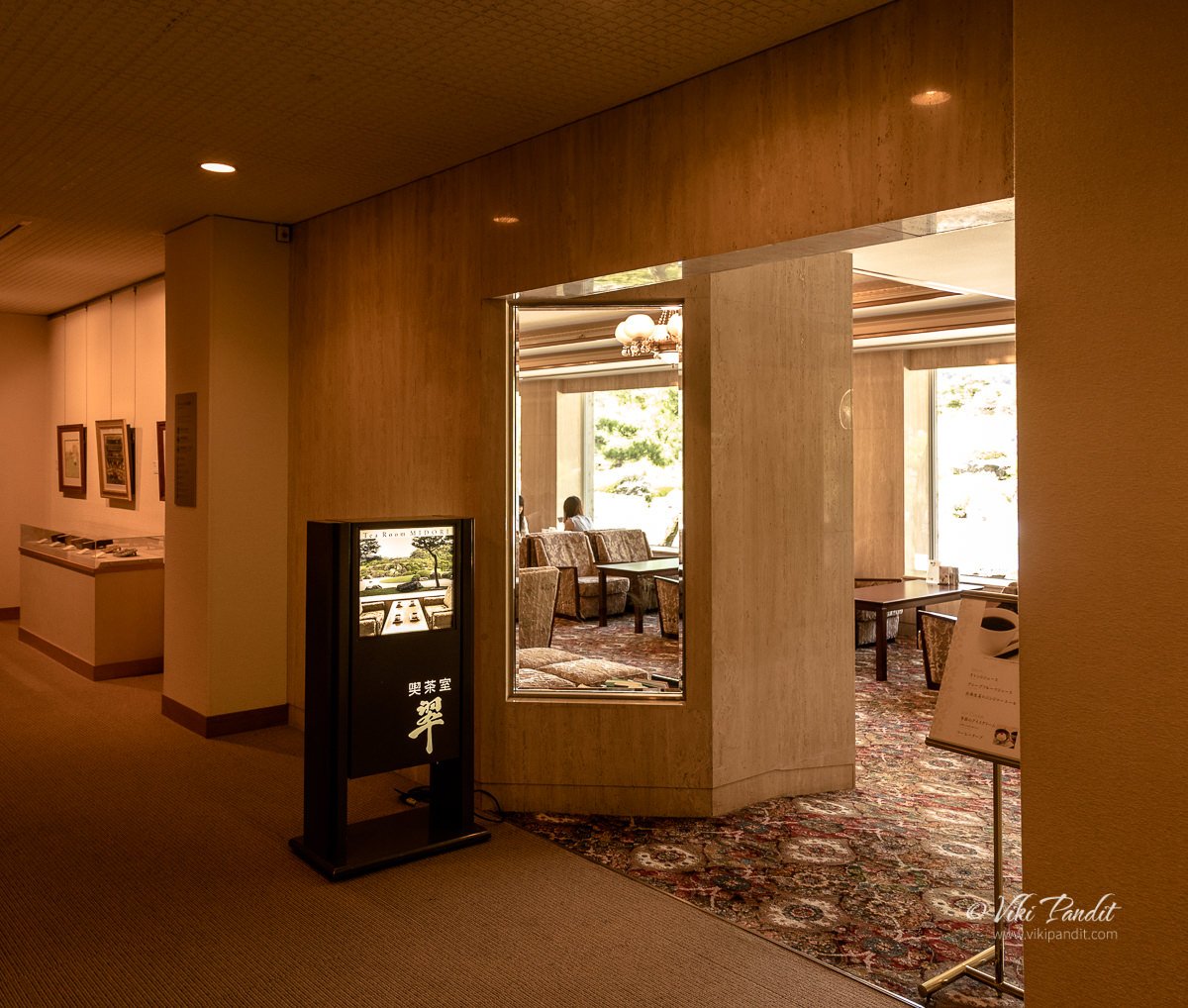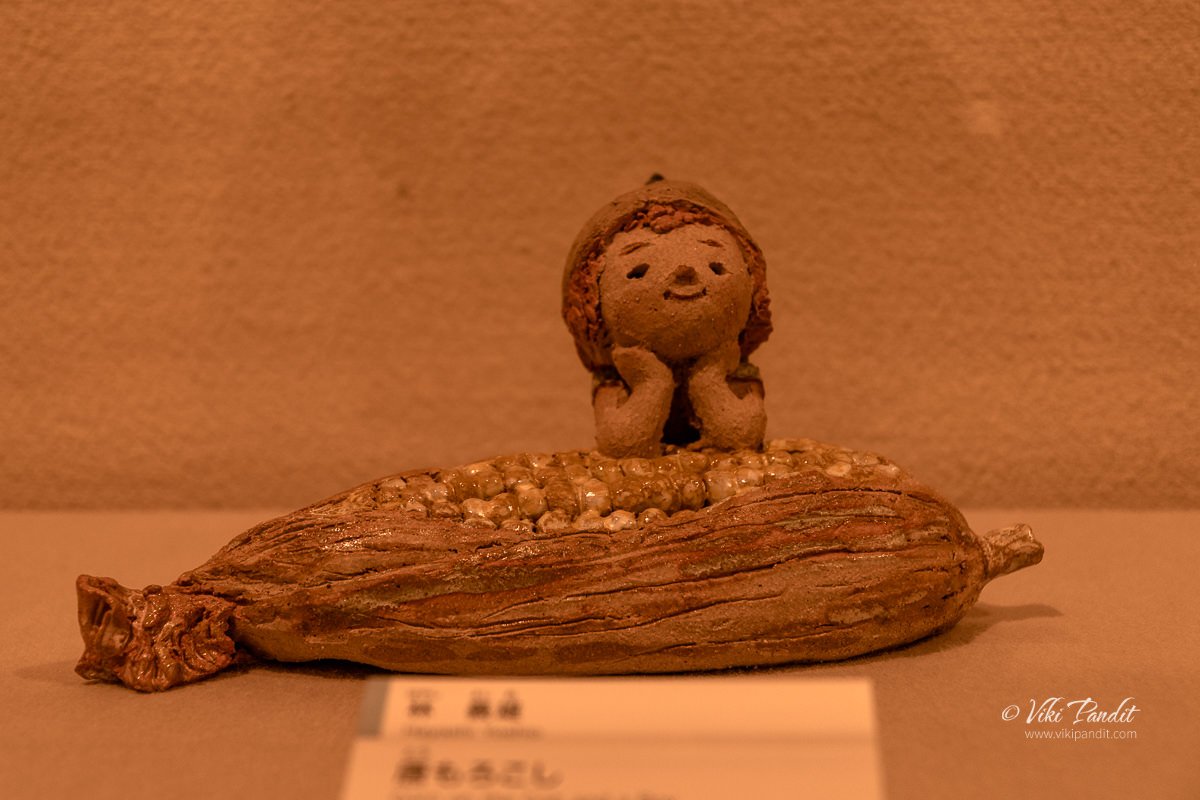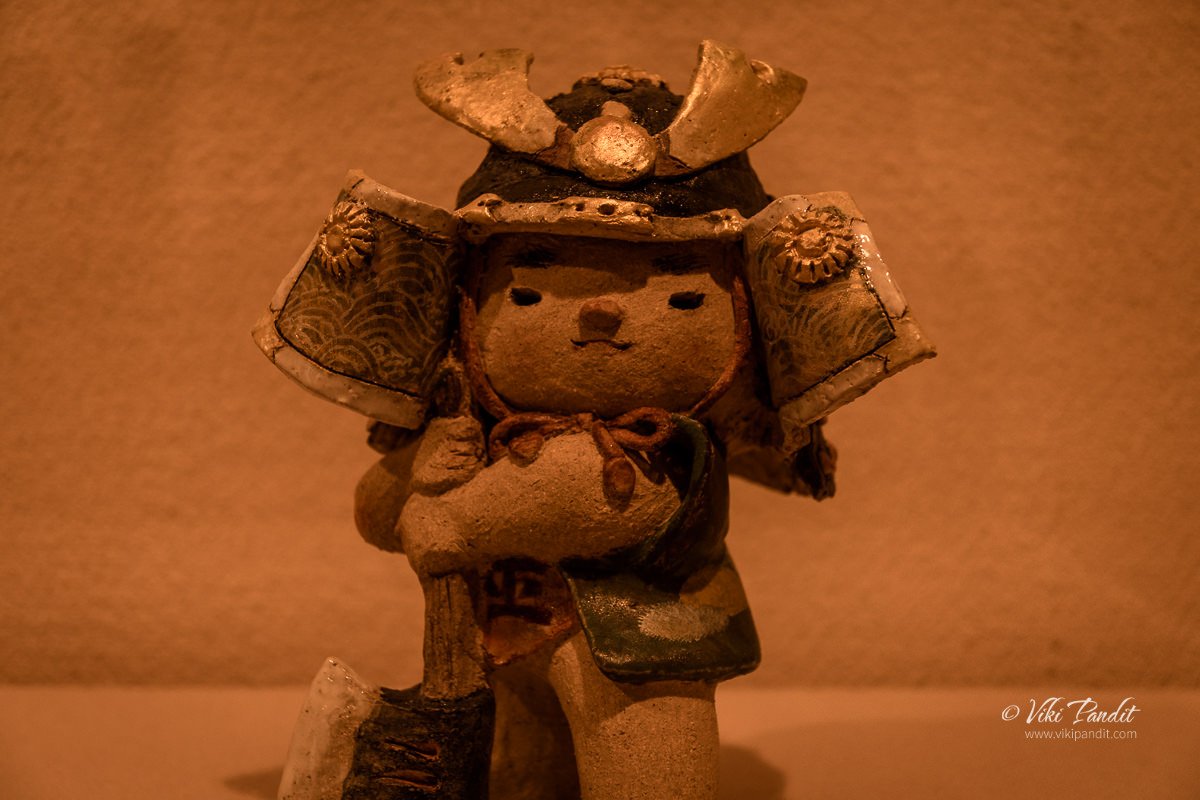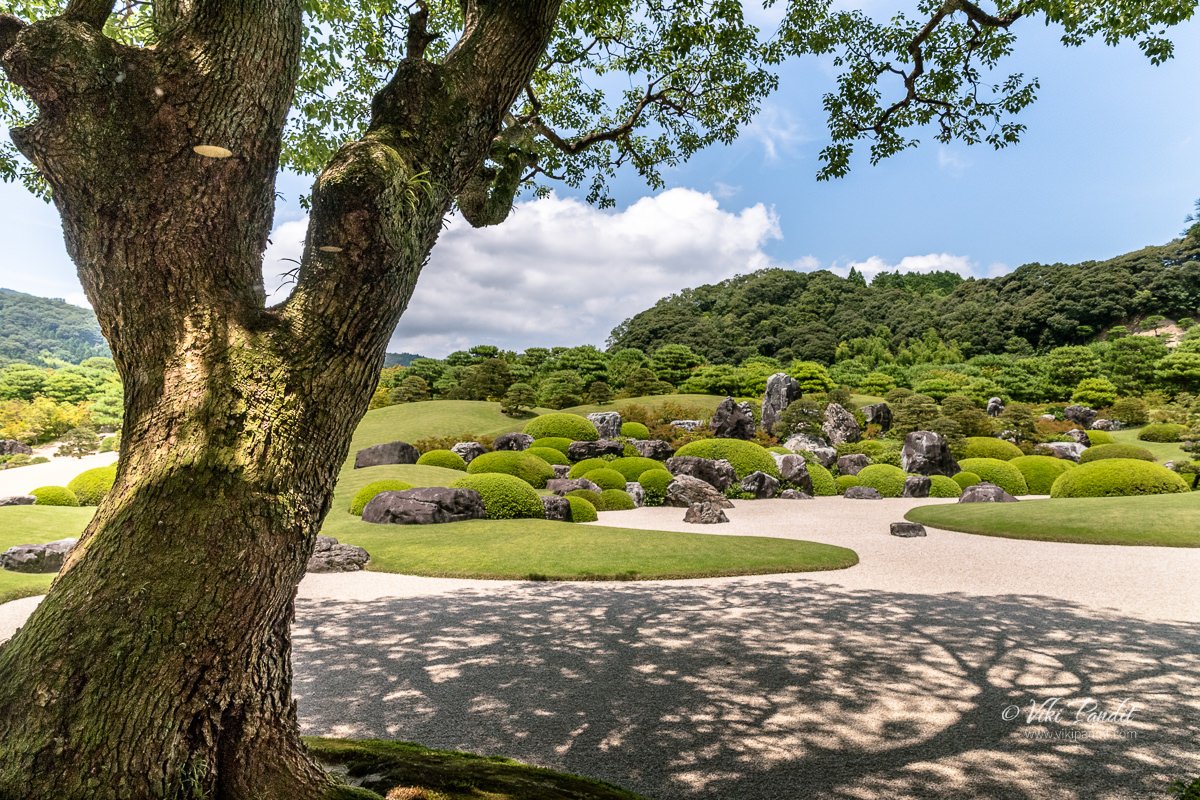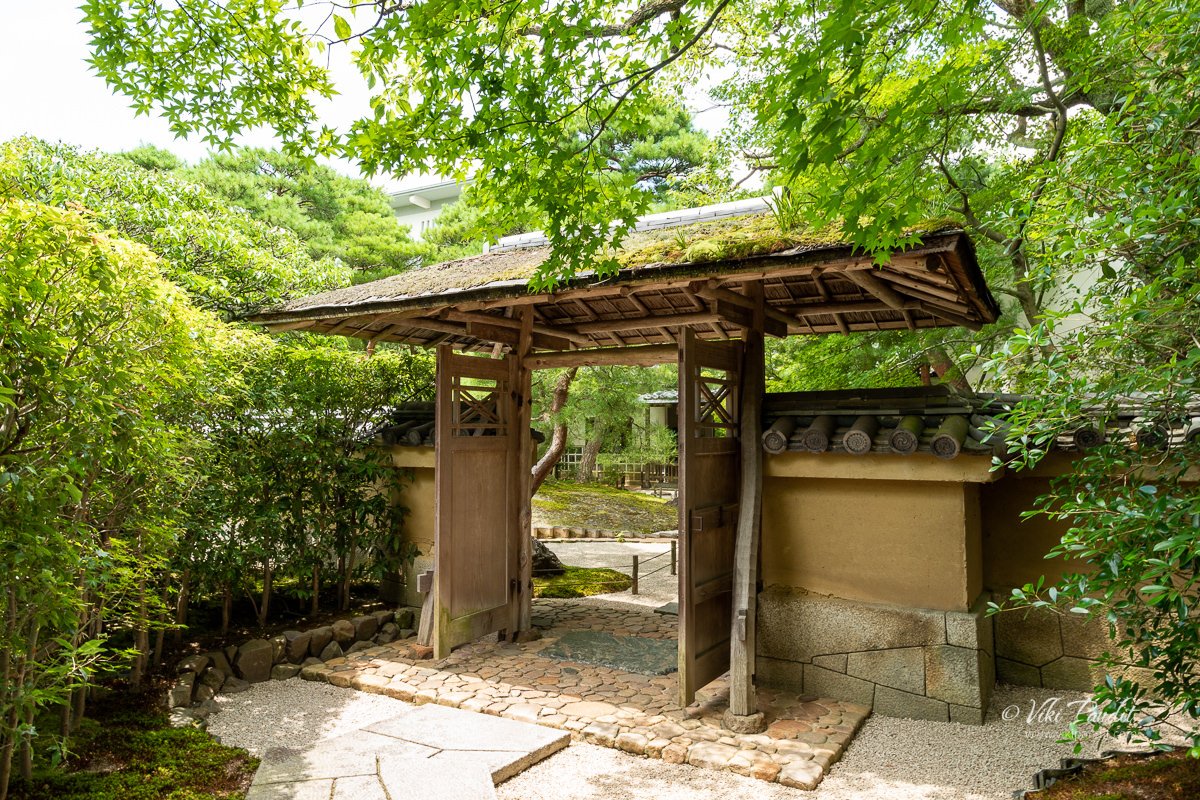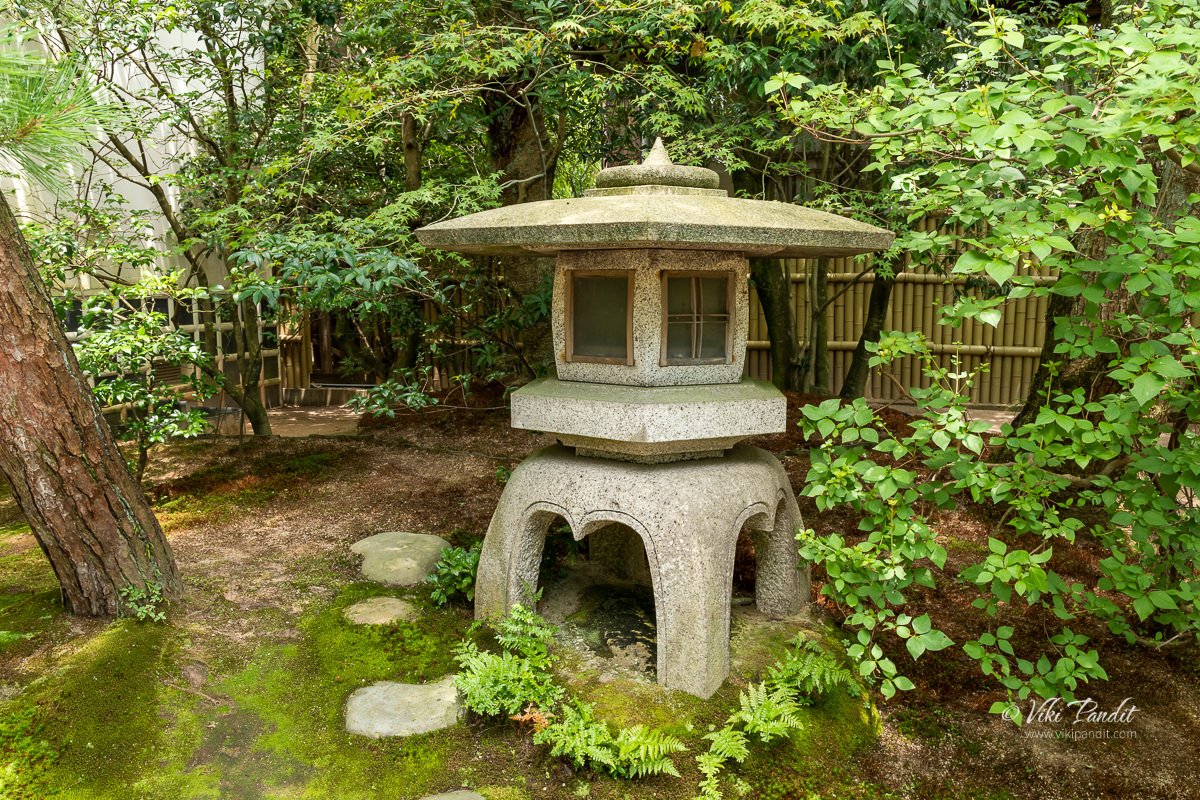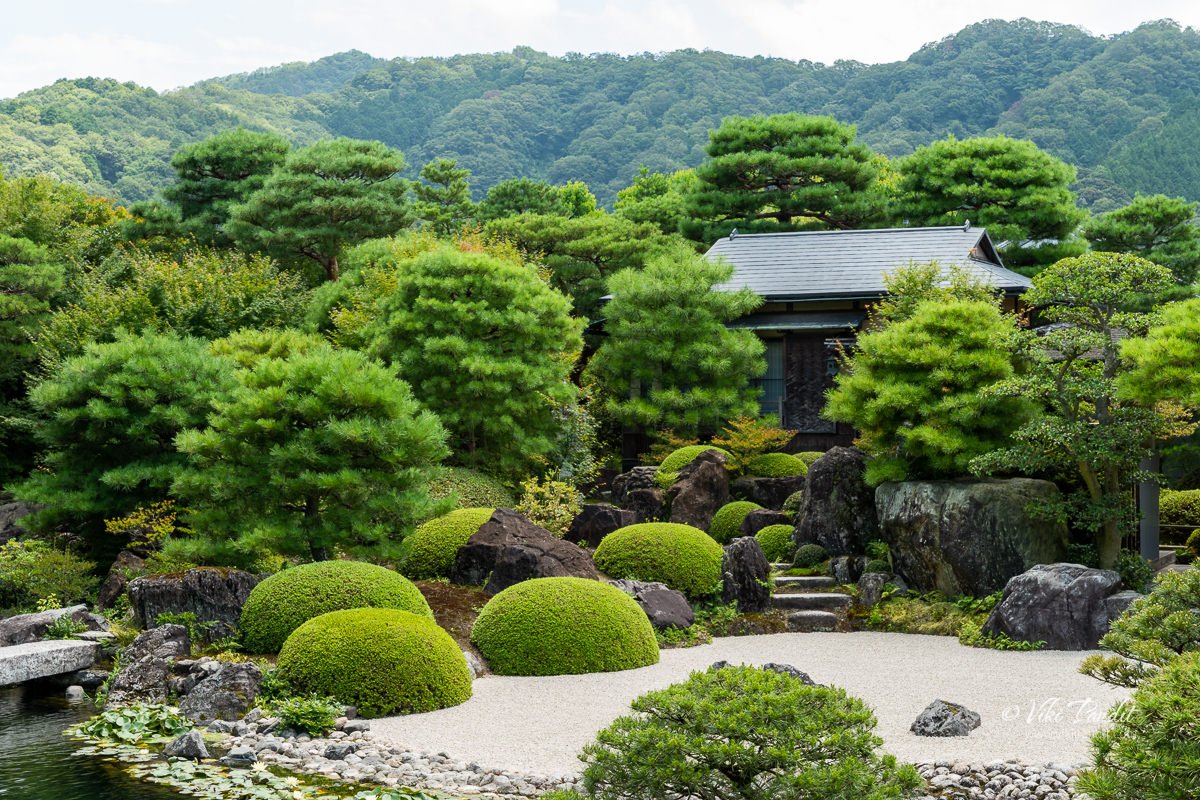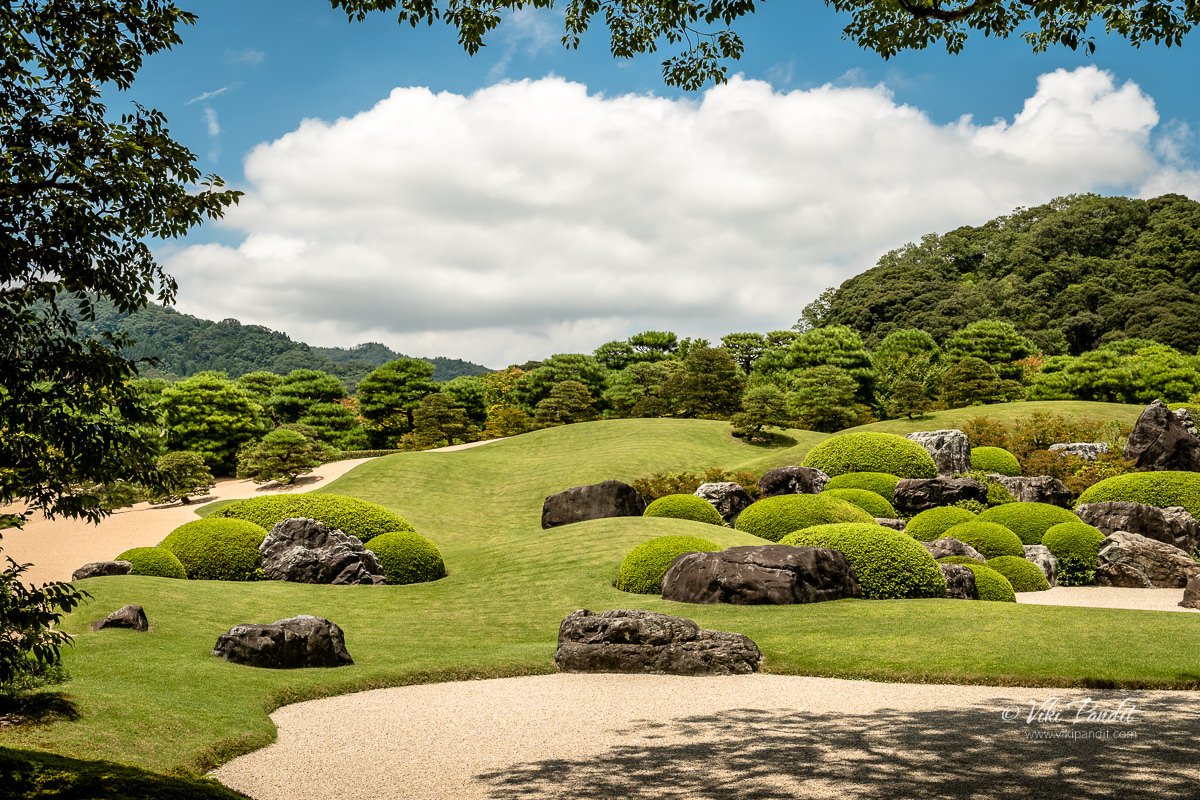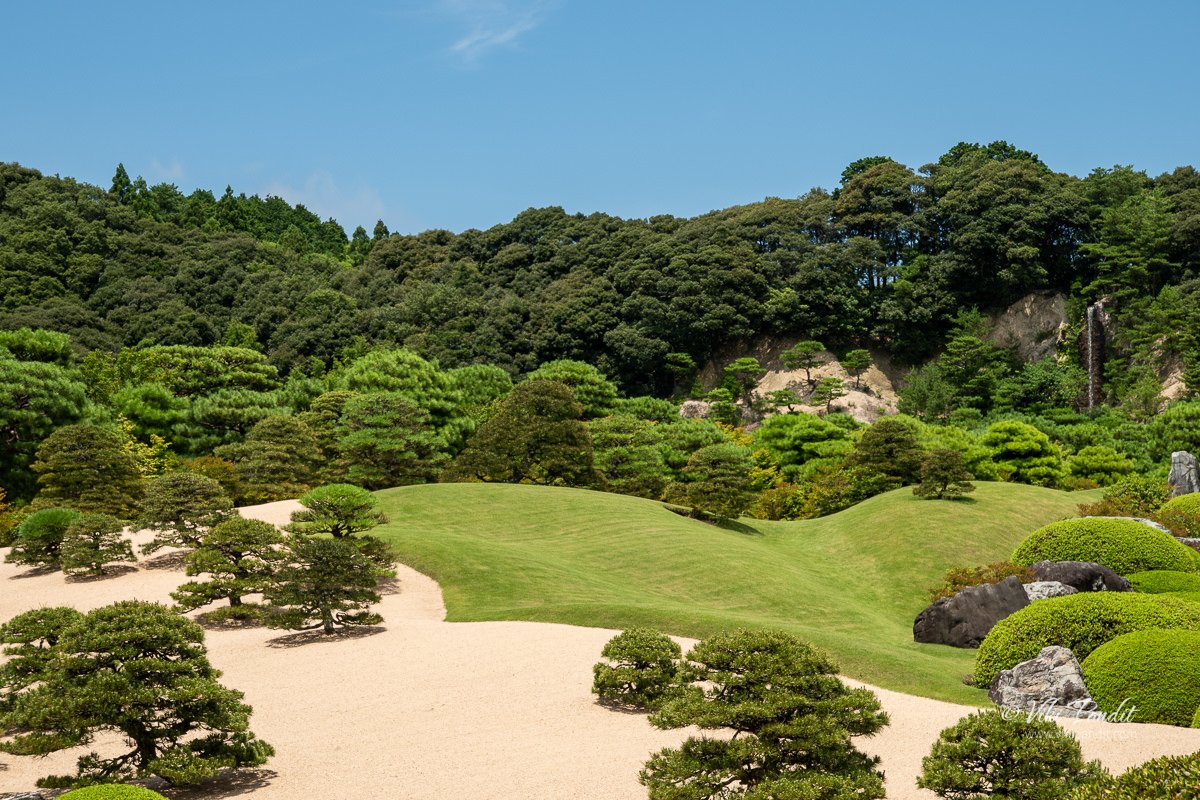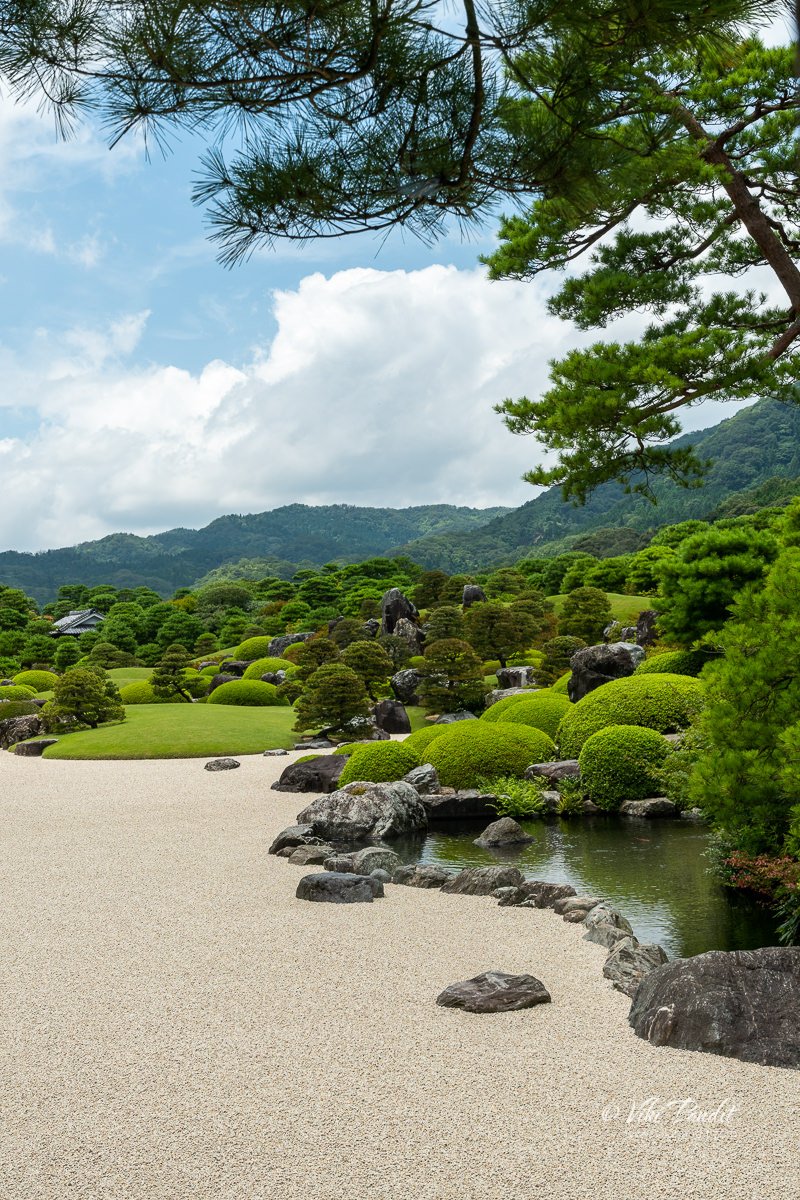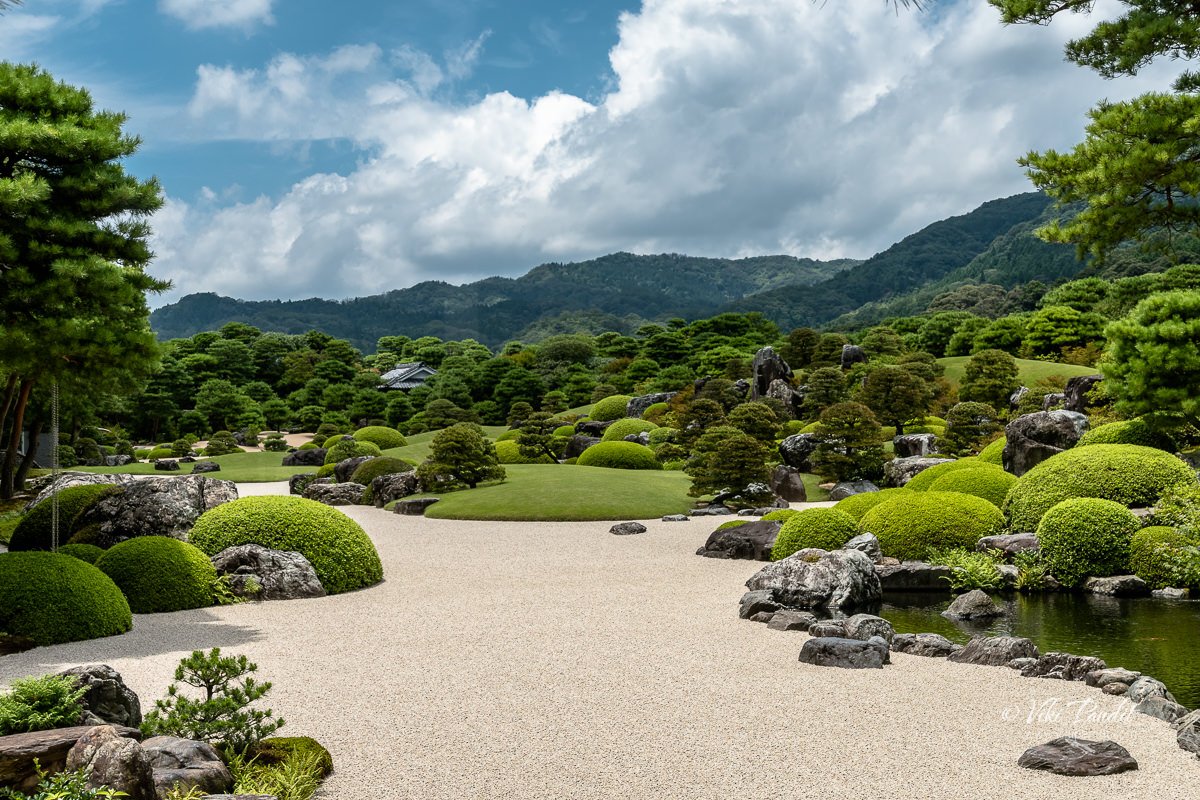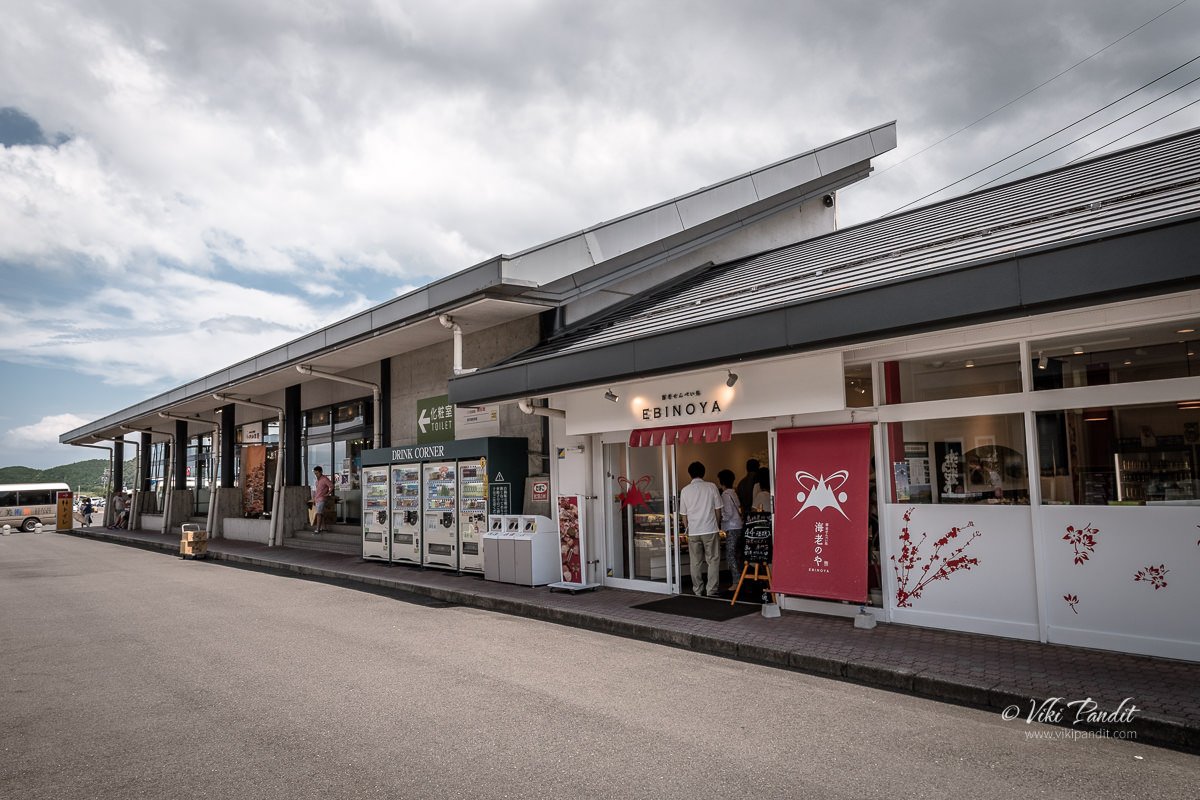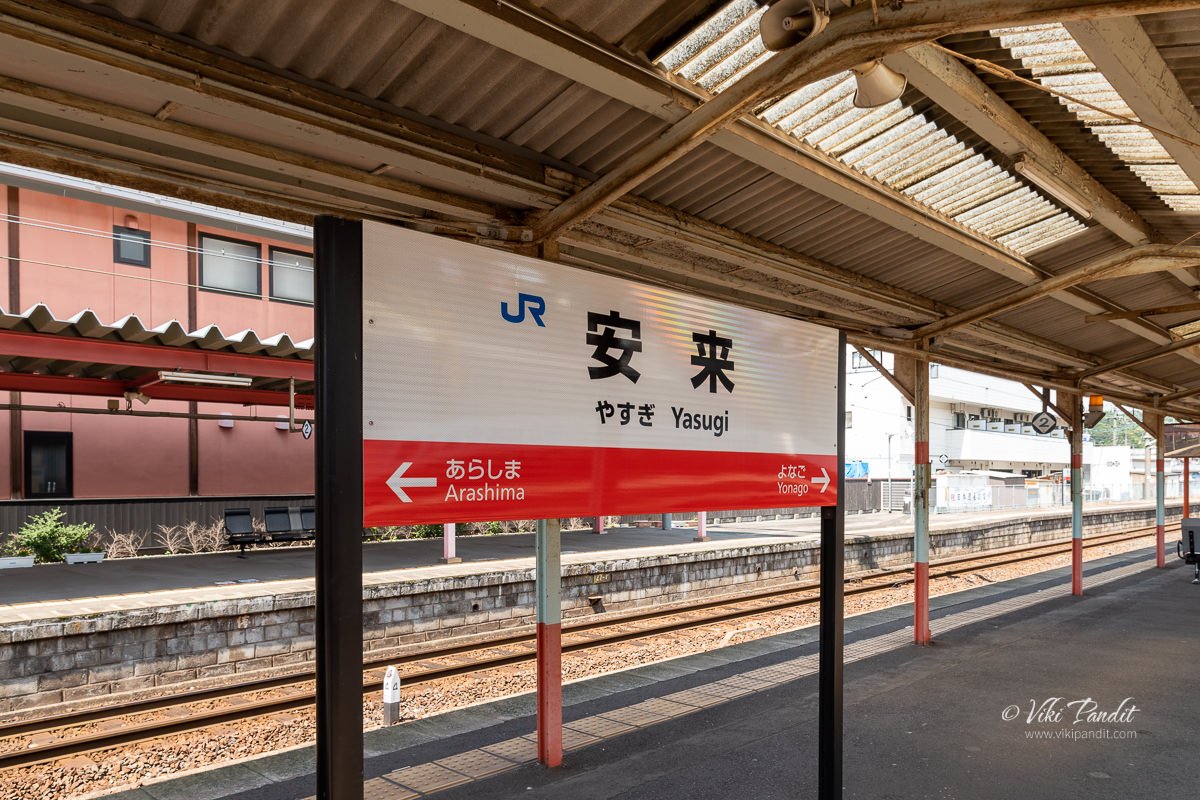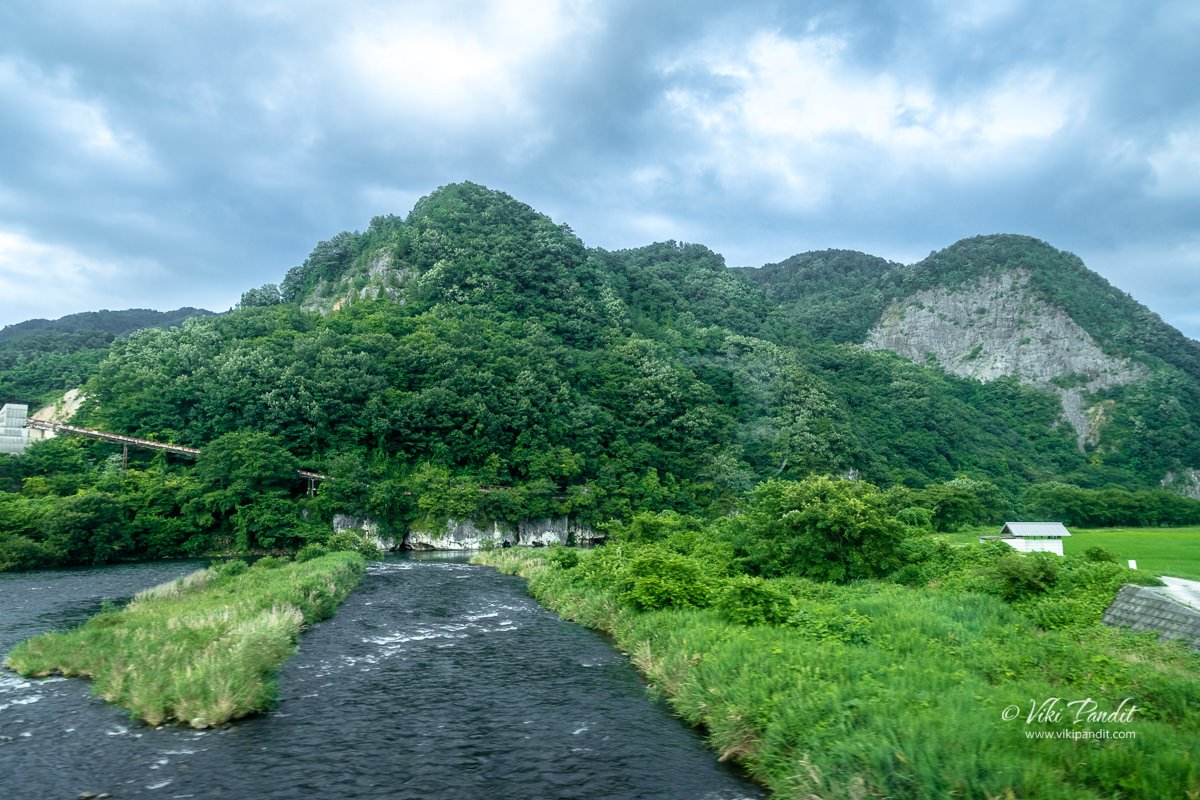Matsue Castle in the Shimane Prefecture of Japan, is one of only 12 remaining medieval castles in their original wooden form. The castle was built as a fortress over a period of five years and completed in 1611 CE by the local feudal lord and founder of Matsue City, Yoshiharu Horio. The castle is sometimes called the “black castle” after its dark-colored exterior.
I and my wife, Mani were in Izumo for a few days. We were staying at the Dormy Inn Hotel, adjacent to Inzumoshi Station. It is a good place to stay if you are touring Izumo. The hotel’s proximity to the JR train station is very helpful if you will be using mostly public transport. There are several convenience stores nearby as well for daily needs.
For the last couple of days we went around some of the interesting places around Izumo including Cape Hino, Izumo Taisha and Hinomisaki Shrine. On our arrival, we had purchased the “Perfect Ticket” that allowed us to move around most public transits in Izumo, for a small pre-fixed fee of ¥1500. This ticket is valid for three consecutive days of travel.
We woke up to a lazy day. The weather had deteriorated and dark grey clouds had surrounded Izumo. After a simple breakfast of bread and eggs, we left the hotel at around 10.30 am. At 11.34, we caught the Yakumo 16 Limited Express bound for Okayama via Matsue. The “Perfect Ticket” will not work for JR Trains. For this ride we used our JR Passes. JR Passes are a great way to travel around Japan. It is only provided to people visiting on tourist visas. It is cheap and very helpful for traveling across Japan.
We reached JR Matsue Station a little after noon. The weather was still depressing but the day had certainly brightened up a bit. Matsue city is a castle town. Most cities in Japan were originally constructed as castle towns (Jo-ka-Machi). Matsue was no different. The city and its surrounding areas are rich in cultural assets and historical sites. The castle is located about 2 kilometres northeast of the station and lies at the center of many of the city’s tourist attractions.
Near the shopping areas, you find numerous shops selling local products such as wagashi (Japanese sweets), Yakumo-nuri (lacquerware), local sake (spirits), and kamaboko (fish sausage). Most cities in Japan were originally constructed as castle towns (Jo-ka-Machi). Matsue was no different. The castle is located about 2 kilometers northeast of the station and is in the center of many of the city’s other tourist attractions.
From the station, it is best to catch the Gurutto Lakeline bus. With its distinctive retro looks, you will have no trouble finding the cute bus. It starts at the JR railway station from No. 7 stop. Please confirm the same before queuing up for the bus.
The bus painted in red and green, with wooden paneling inside, follows a convoluted loop around the city stopping at all the major tourist spots in the town. After leaving the station, it passes a couple of heritage places and then heads to Matsue Castle. A running commentary in Japanese and English announces the important landmarks as you pass them. Large screens, towards the front of the bus, display the upcoming stops. Just before the bus reaches your stop, press the button in front of your seat, to alert the driver that you wish to get off.
The bus runs every 20 minutes for most of the day. A single time fare costs ¥200 for adults and ¥100 for children. An all-day pass is also available, allowing you to hop on and off as many times as you like for one day. It costs ¥500 for adults and ¥250 for children.
If you are carrying the “Perfect Ticket” you will not need to pay for your ride on the bus.
The bus dropped us off near the entrance of the Matsue Castle. The first thing you will see after getting down at the bus stop, is the wide moat surrounding the castle. From here you can also see two of the castle yaguras (watchtowers).
Yoshiharu Horio
As you move towards the entrance gate, a bronze statue of Horio Yoshiharu (1542 – 1611) stands there with his sword stretched towards the sky. Horio Yoshiharu was a brave and able fighter. He was said to have possessed the calmness of an enlightened spirit of the Buddha. Matsue Castle was his brainchild. The exploration of Matsue Castle would be incomplete without telling his story.
Yoshiharu’s father was a vassal of the Iwakura Oda clan during the Sengoku period. They had an ongoing feud with Oda Nobunaga, one of the foremost military leader of Japan. Their wars with Nobunaga eventually led Yoshiharu’s father to become a Ronin, a masterless samurai.
In the Sengoku, or Warring States period, every day was a life or death struggle. Yoshiharu was raised during these turbulent times. He eventually came into the employment of Nobunaga as a lowly foot soldier.
One day in Owari province (Aichi Prefecture), when Nobunaga was out hunting, a large wild boar suddenly appeared out of the woods and came charging at the hunting party. Yoshiharu, who was just a foot soldier, stood his ground and wrestled the beast with his bare hands. The bravery & calmness with which he faced the boar impressed Nobunaga, who promoted him. Yoshiharu’s bravery and calmness served him well over the following years, through a number of battles.
Towards the end of 1600, for his admirable leadership in the Battle of Sekigahara, the Horio clan were awarded land in Izumo Province and he was made the Daimyo of the region. Yoshiharu continued to live rest of his life here until he passed in 1611.
Just beyond his statue, you will find the remains of Otemon gate. You can still see the circular base for pillars of the wooden gate.
It would be easier if you looked at the layout of this area to understand the smart design of this section. This cornered space, even before you enter the castle grounds is called an Umadamari.
The Umadamari used to be a feature of most castles in the Edo period (1600 – 1867) to protect against enemy invasions. The walls would squeeze the enemy troops into a vulnerable area surrounded by all three sides. It also served a double purpose, which was a place where the troops defending the castle would prepare themselves. The small structure you see in front of the massive wall used to be a well.
Right after the gate, the path turns left to reach the castle, where a series of steps will lead you up to the castle. Once inside, you will realize that there are two levels to the stone walls. The ninomaru (second enclosure) descends from the honmaru at a lower level.
These stone walls were made in the span of over three years by a master of Ishigaki wall building style and is still the same as it was when it was built 400 years old.
Two techniques were used in laying of the stone wall of Matsue Castle. One technique used stones that had already been cut in order to make the rocks fit together easily. The other technique used natural stones whose shape was not altered. You can find many stones with a carved seal which dates back to the time when the castle was initially constructed.
Did you know: It was once a rule that girls were not allowed to dance in the streets of Matsue city. If they did, the base of the city’s symbol, Matsue Castle, would begin to shake, endangering the towering building.
The story goes that Matsue Castle’s Ishigaki stone walls contain a Hitobashira, a human sacrifice, entombed in the stonework to act like a guardian spirit of the castle. In this case, the Hitobashira was a young girl who loved to dance, and so to prevent the castle from ever falling, a law was passed preventing girls from dancing in the streets and ever upsetting the spirit within.
But before you go, you can also indulge yourself at the lovely park at the base of the castle grounds. The extensive grounds, now called Jozan Park is spread over a vast sixteen hectares wooded park. Many paths go around under the steep stone walls of the castle, the wooded hillsides, and along the moats, making for some quiet pleasant walks. This area is free to public and does not require any admission ticket.
The area is full of beautifully pruned Japanese matsu pine trees. These are still only very young trees in the Castle grounds. If you are lucky, you might also see a samurai armor wearing person, wandering around the park.
After a short climb, we reached the castle entrance. The castle appears behind this last fortification wall. On the left you will find the admission booth from where you can purchase the tickets. It cost us ¥560 per person to get inside.
A brief history of Matsue Castle
As already mentioned while talking about Horio Yoshiharu, that Tokugawa Ieyasu gave him 240,000 koku at Toda in Izumo Province as a reward for his achievements at the decisive “Battle of Sekigahara.” Matsue city didn’t exist then and Yoshiharu came to reside at the now-ruined Gassantoda Castle. Gassantoda Castle was located in Yasugi, tucked away deep in the mountains and Yoshiharu had higher aspirations.
In 1607, he began the construction of a new castle on Oshiroyama (Mt. Oshiro), which was then just an uninhabited small hill overlooking Lake Shinji, where he could take advantage of the transport possibilities offered by numerous waterways. Surrounded by wetlands and protected by the sea to the north and the lake to the west, the location was an excellent defensive base for his future fortress.
Yoshiharu was a smart man. The Renkaku-shiki layout of the castle, with its hilltop positioning, wide moats, and high Ishigaki provided an efficient defense to the castle. Construction of Matsue Castle was completed in 1611. Interestingly, it’s defenses were never put to test.
Among the 12 original castles, Matsue Castle has the second-largest donjon (keep), is the third tallest at 30m, and is the sixth oldest.
Unfortunately, the Horio clan came to an end in 1611 with the death of Yoshiharu. After Yoshiharu passed away, Kyogoku Tadataka was made Lord of Matsue for a brief period of time, followed by Matsudaira Naomasa, a grandson of Tokugawa Ieyasu, whose descendants ruled until 1871, after whom the castle was abandoned.
On entering the uppermost castle area, I was surprised to see some Momiji trees were still glowing brilliantly in the dull afternoon. We played around for a bit among the fallen red leaves.
This is a shot of my new Amazon camera backpack. I am not really thrilled with it. It’s comfy at the shoulder pads, but not very user-friendly. I am also not too happy with the single stitches, the tripod holder section is already bursting at the edges. My lower-pro backpack was amazing, unfortunately they stopped making that model.
Matsue Castle Architecture
Matsue Castle is classified as a hirayama-jiro, a castle built on a hill surrounded by flat land. The moats, stone walls, and levels of concentric embankments that encircled the castle compound, ascending in a staircase fashion from the sannomaru section at the base of the hill, up to the central keep, are all a classic example of flatland hill-castle defensive layout.
The present-day honmaru (the walled enclosure surrounding the keep) is now an expansive open space, but the keep (tenshūkaku) was once surrounded by six watchtowers (yagura) connected by roofed passageways known as watari-yagura.
The castle’s keep is a fine example of an early Edo period tenshu with five levels concealing six inner floors and an underground basement. Built in a borogata or watchtower style, and perched atop the 28-meter high hill, Matsue Castle keep has a commanding presence in the center of the city. It has an overall dark appearance, with wooden paneling covering a large part of the building.
The dark timber cladding is designed to protect the lower floors from rain. The exteriors of the lower sections are covered in black shitami-ita, to protect the mud walls beneath.
The tenshu features curving roofs that look like birds with their wings spread. For this reason, the castle is also known as Chidori-jō or Plover Castle, resembling plovers in flight.
Let’s look a bit closely at the various ingenious add-ons of Matsue Castle. The keep was designed as a defensive stronghold and was well-equipped with defensive design features, including numerous gaps for firing at invaders and ishiotoshi structures for dropping rocks on anyone attempting to scale its walls.
The shachi-hoko (mythical dolphins) on the roof of the keep are slightly over two metres tall (2.08 m). Carved in wood and covered with copper, these are the largest such pieces remaining among the 12 original castles in Japan.
Among the currently existing castles, Matsue Castle is the only castle that has inherited the “Irimoyahafu”, an architectural style from the late 1500’s. The Irimoyahafu is the triangular part on a four-sided hip and gabled roof.
Its south-facing tsukeyagura connecting tower serves as the entrance.
Matsue Castle Interiors
The interior of Matsue Castle is maintained in excellent condition and contains a fine collection of samurai helmets, armour, weapons and items of historical interest. You will have to leave your shoes near the gate at the entrance.
From its main entrance, visitors climb to the upper floor, with a halt at each floor to admire carefully staged reconstitution, of samurai armors especially, that help picture Japan’s feudal times.
Designed for warfare, you will be able to witness many defensive elements, like precarious stairways, a large turret affixed to the main building, arrow and gun holes, holes for dropping stones along with an underground well in case of siege.
Inside the castle, there is a large collection of historical artifacts. Each floor is dedicated to specific displays such as the armor, swords, and helmets of the samurai in the time of war, materials used to build the castle and a pictorial display of the castle’s history, photos of all the castles throughout Japan, and miniature replicas of the layout of Matsue as it has changed over time.
The first basement floor is known as the known as Shiogura or Salt Cellar. This section was built specifically for stockpiling food and drinking water in case the inhabitants could not leave the castle during a siege. You can find a huge 24 m deep well in a corner of the storehouse. I don’t think I have seen any other currently existing castle with a well inside. Along with the well, this salt was to be used in an emergency, showing how Matsue Castle was built with serious consideration to its utility in actual combat.
You can feel like you are back in the Edo Period. Many of the pillars and stairs of the castle and other materials that were used to make the castle are still here since the castle was first constructed. The original shachi (mythical sea creatures) of the castle’s roof is also located inside the castle.
Shachi or Shachihoko were frequently used as roof ornaments in the Edo period (1600-1868) and found atop castles, tower gates, and samurai homes. It represents an imaginary sea creature with the head of a tiger and body of a fish. These fish-shaped ornaments were placed at both ends of the main roof ridge, with the male Shachi, with thicker scales, placed on the left and the female Shachi on the right. These pieces, placed at each end of the ridge, had a duty to protect the building against fire and evil spirits.
From the basement, we moved up to the second floor. To prevent the load from being applied to the center of the building, several pillars were added here. The floor has six ishi-otoshi openings to throw stones out, and its outer wall is largely dark, thick wooden board siding with battens. Several wooden benches are spread in the center of the room for visitors to take a second to absorb the centuries-old smell.
On this floor, you can find several old exhibits from the original castle. Here we can see an onigawara, which is a roof tile made from baked clay into the shape of an ogre, a mythical creature in old tales passed down from long ago. The ends of the roof ridges of Matsue Castle were decorated with these onigawara tiles.
Not far from the ogre shaped roof tile, you can see one of the original pillars. As a general rule, Japanese castles are built around two huge wooden pillars (hashira) from foundations to the top. In Matsue Castle, for financial reasons, pillars were made of timber beams clipped together with staple-like hooks called Kasugai.
The internal staircases are all very narrow, to make it difficult for attacking enemies to secure the upper levels, and are made of paulownia, a very light and fire-resistant timber so they could be raised quickly before an enemy could use them. Stairs made of paulownia to prevent fire and decay are a distinct feature not seen in any other castle.
The third floor was mostly empty with a few scattered pieces of exhibits.
Here we see an idol of Matsudaira Naomasa, the grandchild of Shogun Tokugawa Ieyasu. He is remembered for his valor in the Battle of Osaka (1615) at the young age of 14. After Kyogoku Tadataka, the territorial authority was granted in 1638 to Matsudaira Naomasa who enjoyed favorable relations with the Tokugawa shoguns.
Rule by the Matsudaira Clan as a daimyo house continued unbroken for over 230 years, until Japan’s feudal domains were abolished and replaced with modern prefectures. For this reason, we see a deep relationship between the Matsudaira Clan and their subjects.
On the same floor, you can find the samurai armor of Goto Matabei, a much-respected professional warrior who often proudly boasted of the 53 scars on various parts of his body, trophies of the many wars in which he had participated. Goto Matabei was also recognized for his fierce bravery during the Battle of Sekigahara where Yoshiharu Horio fought along his side.
The fourth floor contains on its walls the photos of all the other original castles of japan. Made me realize, I still have a lot to cover.
On this floor we have a row of mural paintings depicting the main historical events of Matsue domain. Murals depicting the stories surrounding the construction of the castle are also easy to understand, so that the more you know the more interesting the tour becomes. They were created by Fuden Adachi, an artist from Matsue city about 300 years back.
The top floor was designed in Boro style to resemble an observation tower with a 360-degree view. The view from the large, open window spaces on the top floor offers a clear view of the town, rivers, and moats below, giving you the chance to experience the same extensive view of the city as the samurai and warlords had.
Ruin of Matsue Castle
Following the Meiji Restoration in 1868, a large number of castles were demolished or auctioned off for their building materials. Matsue Castle’s age and size contributed to the considerable cost of upkeep, and former daimyō and new governor of Matsue, Matsudaira Sadayasu requested permission to tear it down in 1871.
Having been protected by three successive Edo Period (1603 – 1868) clans, the Horio, the Kyōgoku and the Matsudaira, Matsue Castle was slated for demolition through the Castle Dissolution Edict (Haijōrei) issued by the Meiji Government in 1873.
Matsue Castle fell under the jurisdiction of the military headquarters at Hiroshima, but the army was reluctant to pay for maintenance. In 1875, the army attempted to sell the Matsue tenshu and other buildings for scrap. The value of the castle materials was seriously compromised by the cost of dismantling and removing the structures, and the watchtowers, gates, and other outbuildings were sold off for a pittance and scrapped.
The tenshu was bought by Saitō Naotada, an officer from Kanazawa, for 180 yen, the equivalent of sixty bags of rice at the time.
However, local volunteers raised funds to save the castle keep, which now remains the only original castle keep in the whole of San’in Region.
Once we completed our exploration of the exhibits of the castle, we walked around the castle grounds, looking for other interesting places in this vast area. There are three shrines within the park, but the one worth seeking out is down a quiet lane to the rear of the castle. As we kept walking towards the north part of the castle, we stumbled onto the Inari shrine.
Matsue Inari Shrine
There are three shrines within the park, but the one worth seeking out is down a quiet lane to the rear of the castle. The Jozan Inari-jinja Shrine is a modest shrine tucked away in a quiet corner of the park. The usual torii gates guide you down the path towards some steep steps and at the top of them are two guardian foxes as is common at many shrines throughout the country. The shrine was established by Matsudaira Naomasa, who became the lord of Matsue domain in 1638.
the shrine—half-hidden amid the greenery and a bit difficult to find—contains thousands of representations of foxes, the messengers of the god (or goddess, depending on how the deity is represented) Inari, who determines the bounty of the rice harvest and, by extension, prosperity. Passing through a gate and along an avenue of sphinx-like foxes carved in stone, you reach the heart of the shrine, in a wooded glade crowded with more stone foxes, pitted by weather, covered with moss, crumbling with age—and accompanied by row after row of newer, bright, jaunty-looking white and gold ceramic foxes. Inari shrines, which have become increasingly popular in Japan, are thought by some to be haunted and best avoided after dark.
The shrine is the start and endpoint of the Horanenya Matsuri, a three-day festival involving decorated boats filled with musicians that is one of the three great boat festivals of Japan. Taking place only every 12 years, the next will be in 2021.
The shrine is often overlooked by all those visitors who seek out the castle and nothing more. You can find numerous small statues of kitsune, some covered in moss, the fox messengers of the deity Inari enshrined here. If you are a fan of numbers, there could be more than 2000 carved foxes surrounding the shrine.
Matsue Shrine
Going back towards the exit, we came by the Matsue Shrine, which is said to have been constructed at the same time as the castle itself. We had passed it while going up to the castle. Deified in the shrine are Horio Yoshiharu, the founder of Matsue City, and Matsudaira Naomasa, the first of the Matsudaira clan to rule the region among others.
Like most shrines there are two cute looking Shishi statues at the gate.
A smaller shrine stands nearby, separate from the main hall. I am not sure about the origins of that one.
After an overwhelming afternoon at the Matsue Castle, we gradually made our away towards the bus stop. The castle has 4 entrance/exit points. While leaving we took the Chidori bridge exit. The wind had picked up as we walked quickly towards the bus stop.
It was overall a good day. Even though it started with gross weather, it ended nicely. Matsue Castle is the symbol of the city of Matsue, and in 2015 it became the fifth Japanese castle to be designated a national treasure. I have to appreciate the craftsmanship that enabled the structure to be built without nails, assembled by artful joinery in what must be the supreme incarnation of tongue-and-groove construction.
I can only admire the burnished richness of the wooden siding; the art objects, samurai helmets, antique kimonos; the historical murals and architectural models in the castle museum; and the vertiginous view of the distant mountains from the open platform on the highest floor. Though centuries have gone by, the castle has been well maintained and preserved, allowing it to continue to project its strength and beauty to wide-eyed fanboys like us, in the same form as it was 400 years ago.
Thanks for reading! Tomorrow we leave for Kyoto. It has been a wonderful week exploring various areas of Shimane. I am certainly wiser when it comes to the mythological stories about this region. I hope to come back again to enhance my experience of this area, its cultures, and its traditions. Please leave me a comment if you liked my story or follow me on Instagram.
Events
In the spring from March to April, there is the Camellia Festival where you can enjoy looking at the camellia, and a Castle Festival where the illumination of the castle and cherry blossom trees are magical.
A Matsue Castle Grand Tea Ceremony is held in October annually. It is an event where you can enjoy various kinds of tea and Japanese confectionery and feel the Japanese charm.
Most of Matsue’s attractions are in a compact area north of the main JR Station and can easily be enjoyed in a day or two of sightseeing. You can also enjoy a boat ride along the moat of the castle. The Horikawa Sightseeing boat tour takes you along the 400 years old moat where the boatmen will tell you about the local history and culture. The boats departing roughly every 15 minutes from three convenient locations surrounding the castle.
The 3.7 km Horikawa Passage for small boats which has surrounded the castle since the time of its construction to the present day can be enjoyed for its elegant townscape of samurai residences and the old pine trees of Shiomi Nawate.
10 minutes by bus from JR Matsue Station
Open every day.
08:30 – 18:30 (closes at 17:00 between October and March)
Adults 560 yen, children 280 yen.
Hirayama-jō (Flatland hill castle)
Horio Yoshiharu
1607 – 1611
Chidori-jō (Plover Castle)


